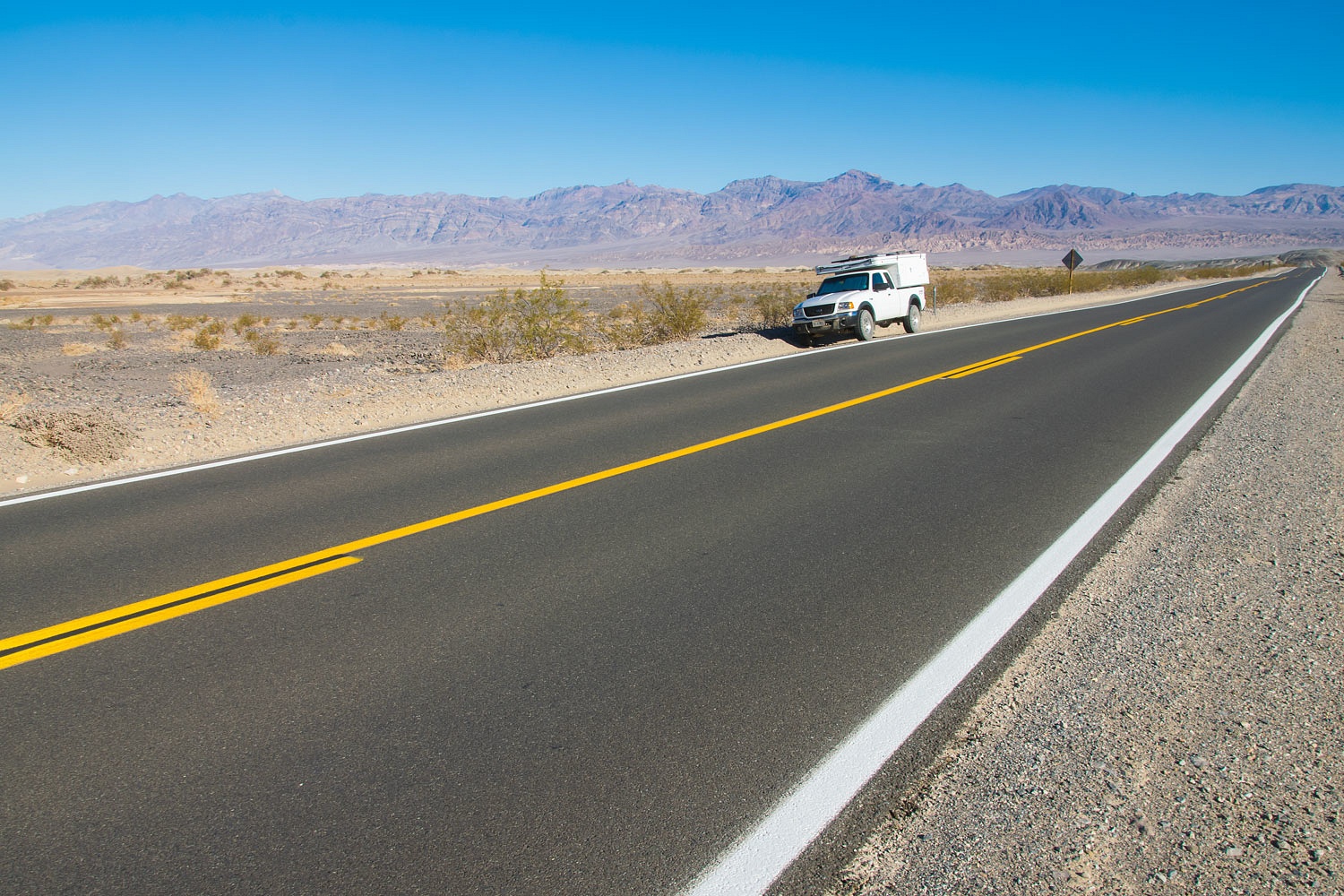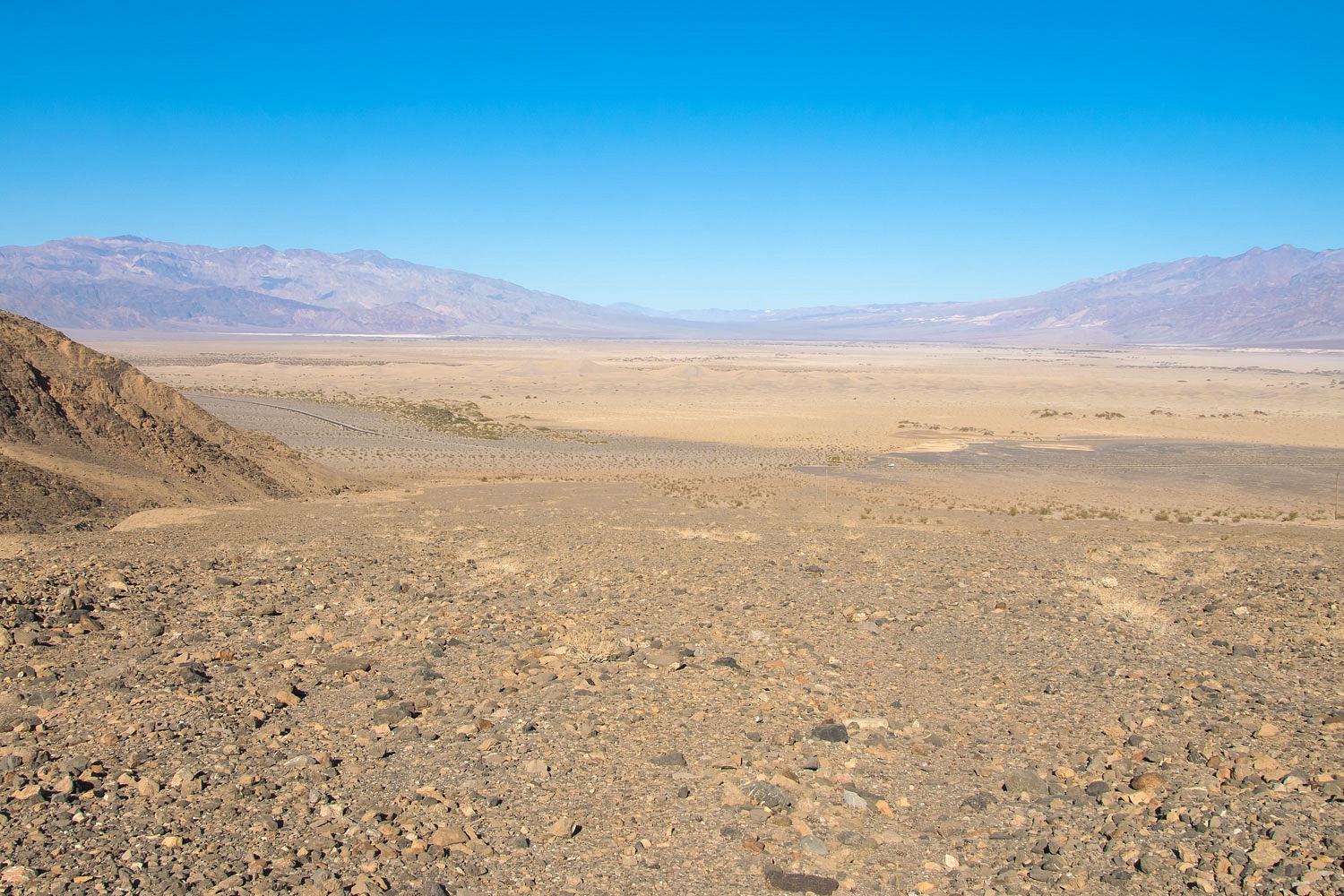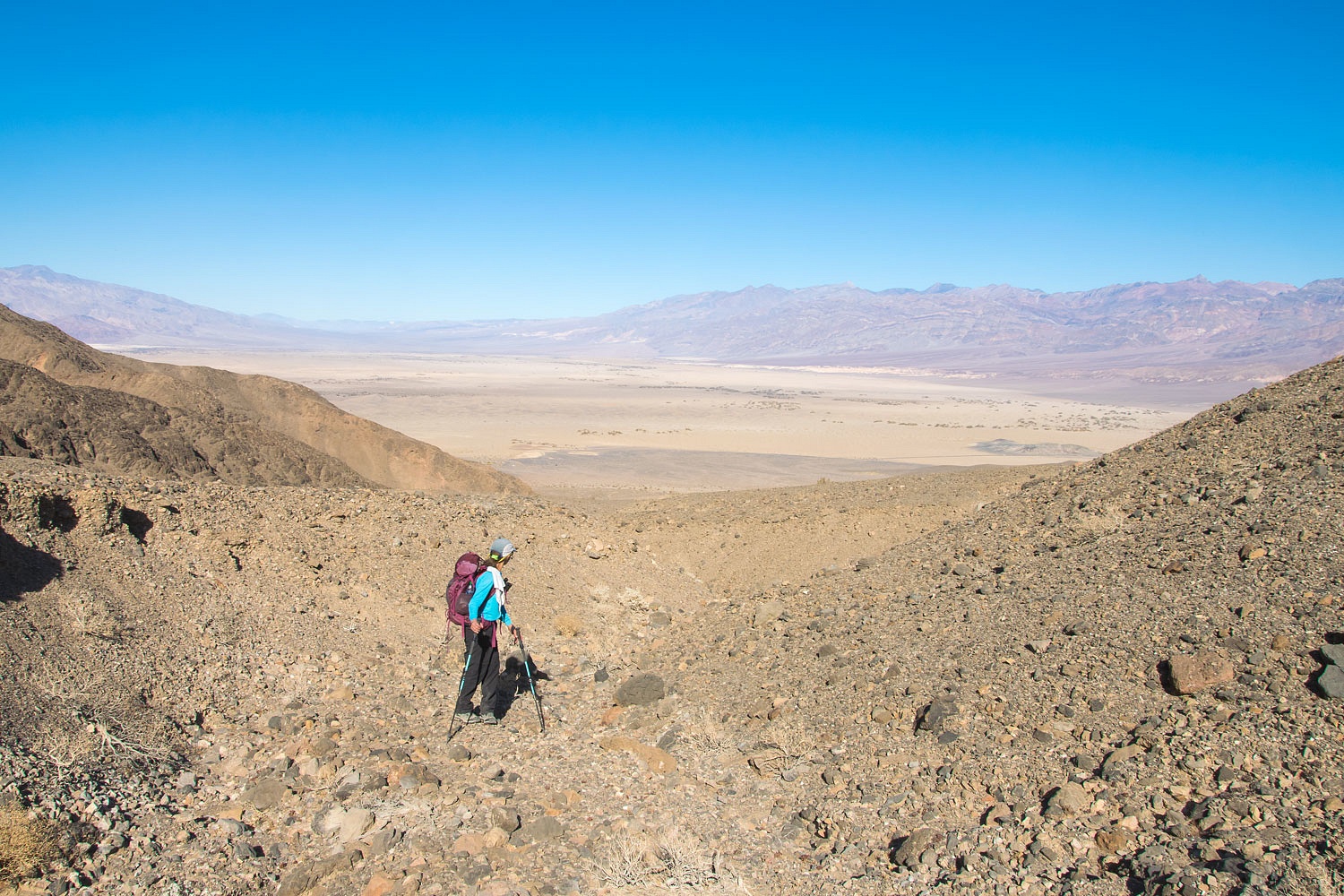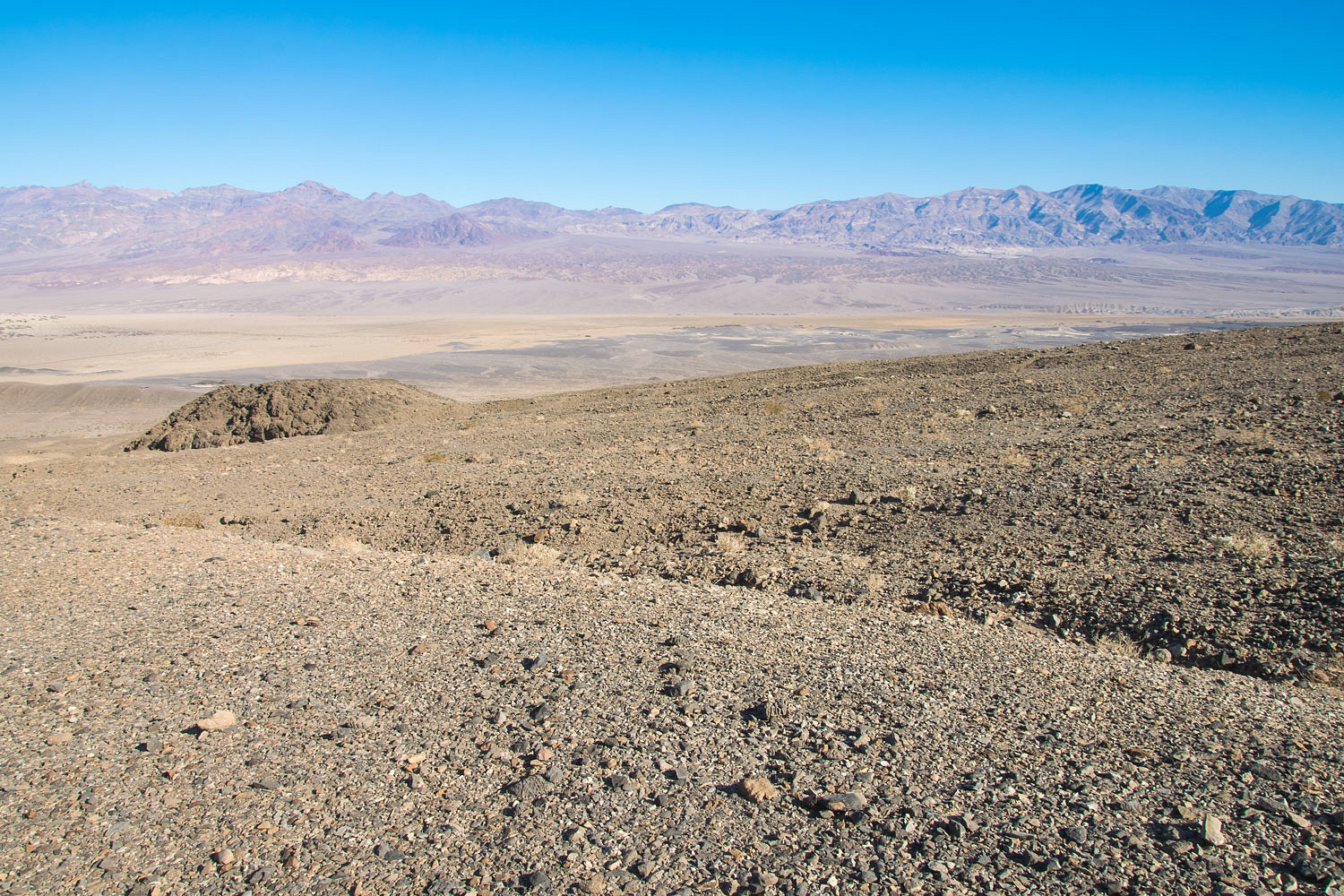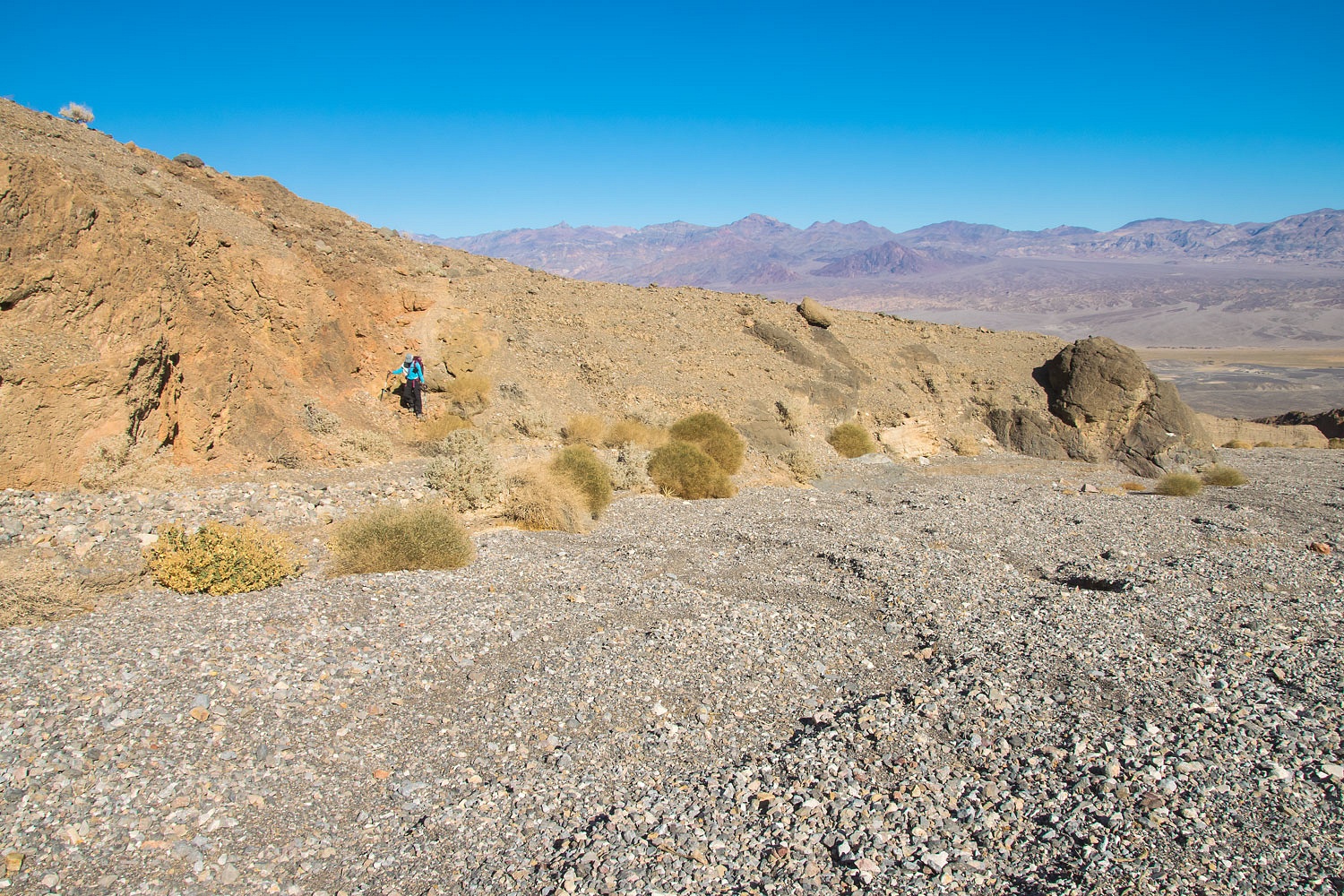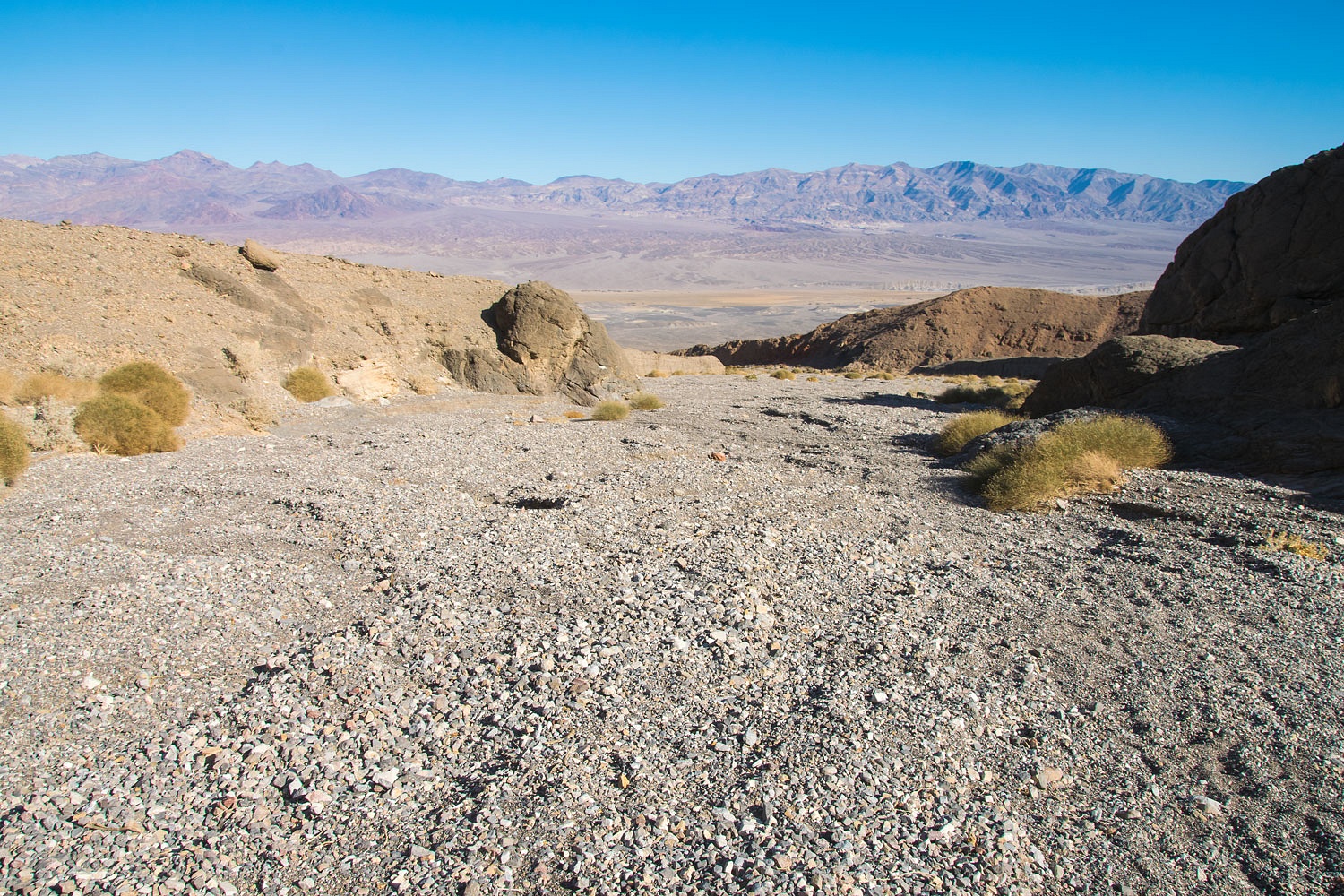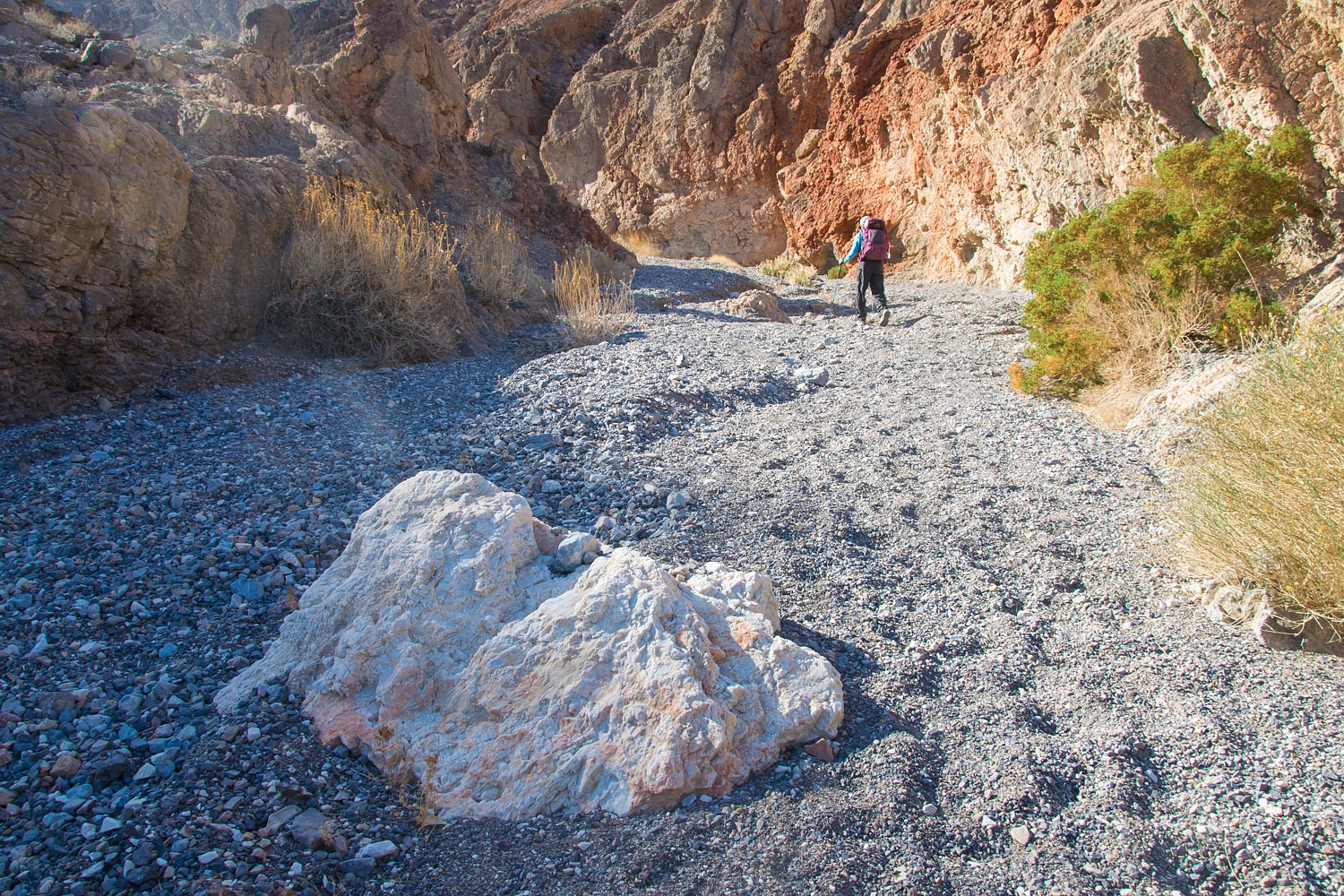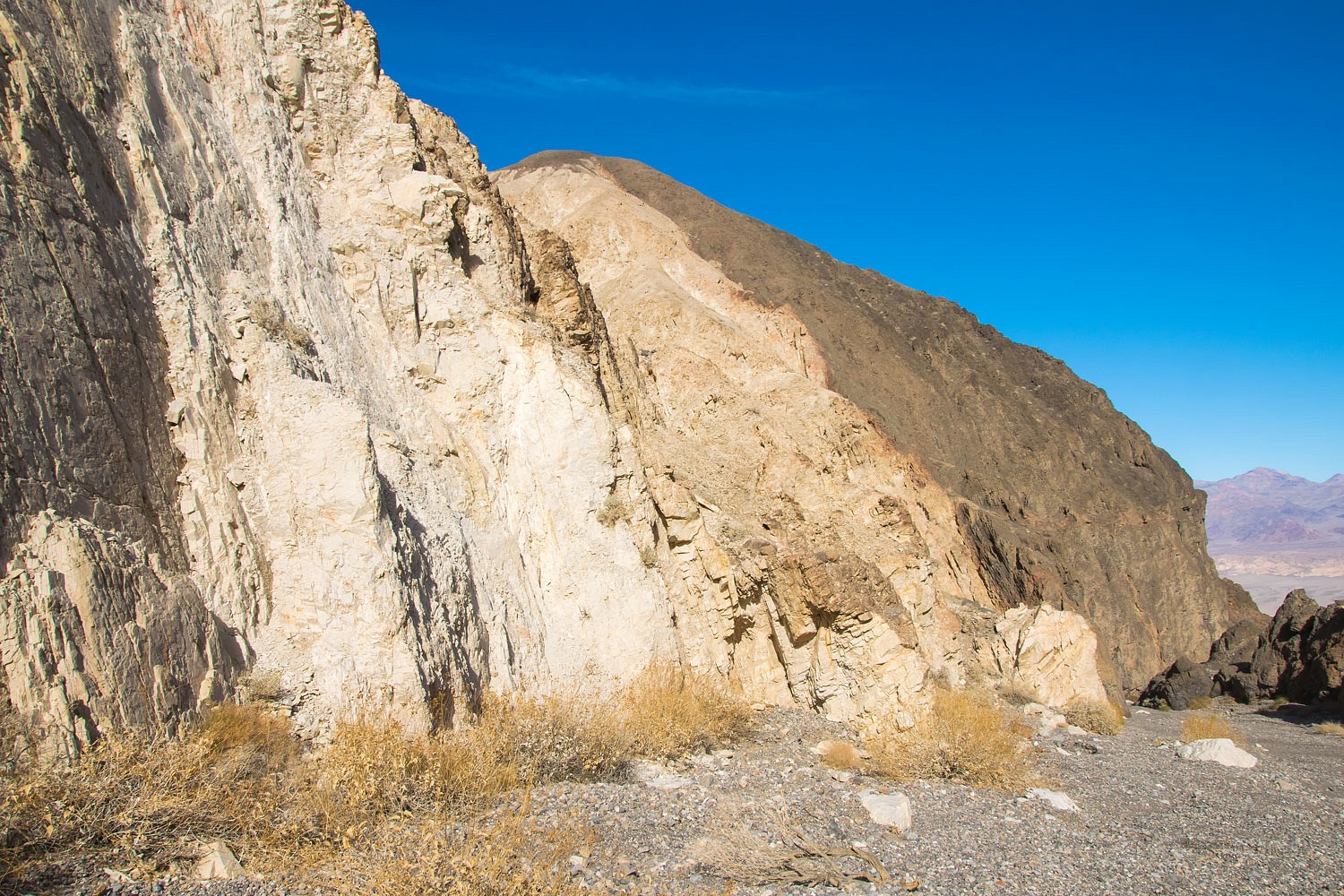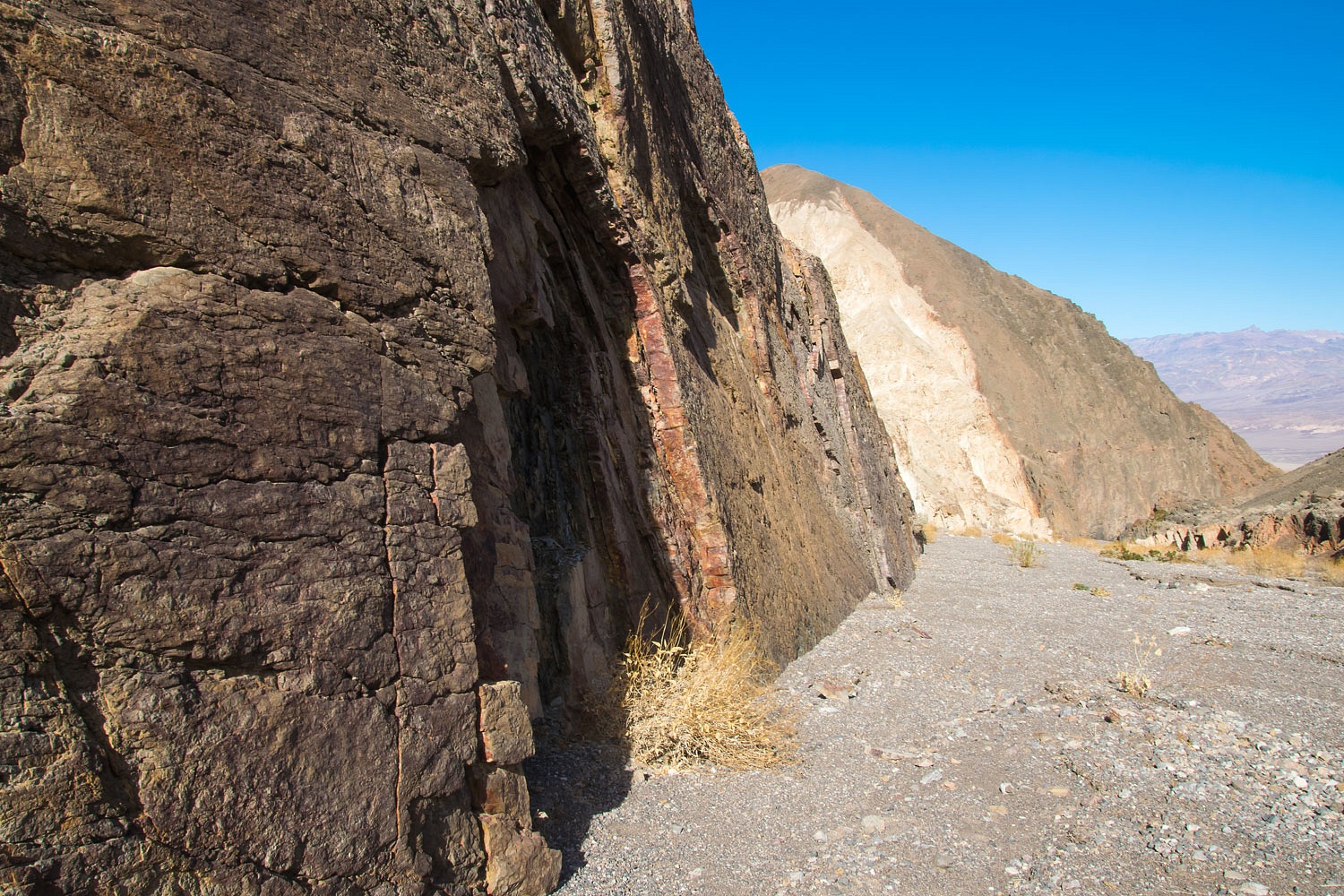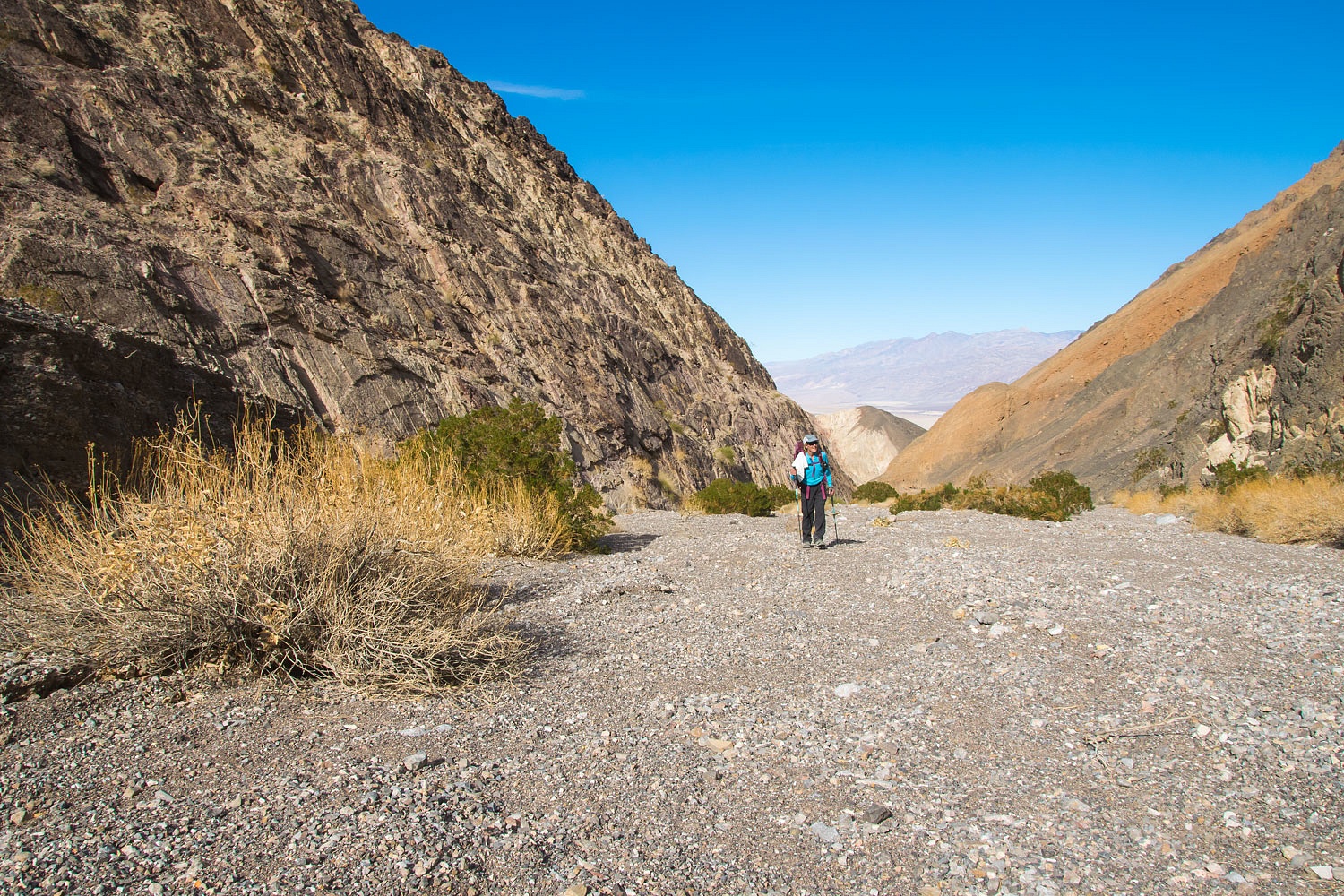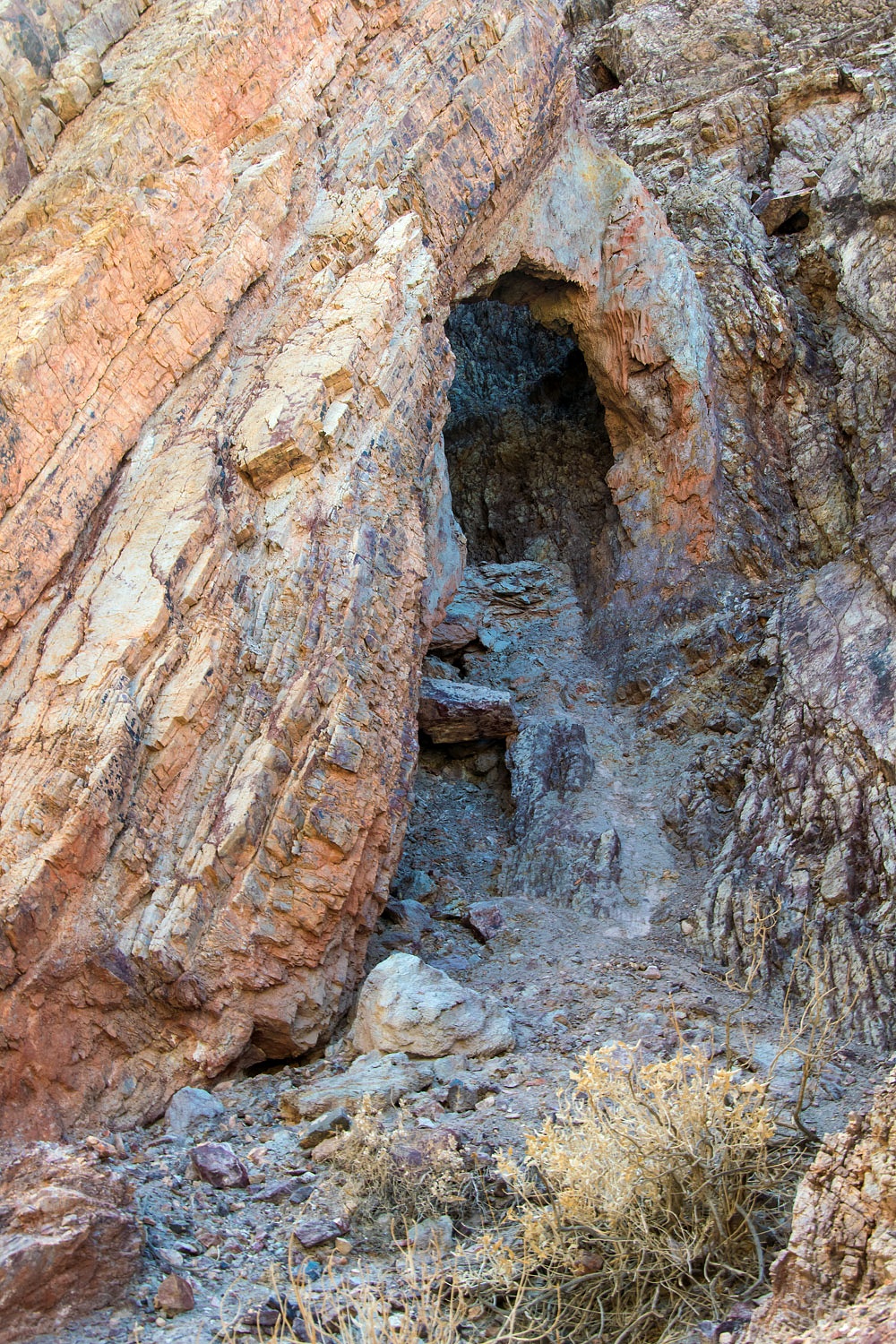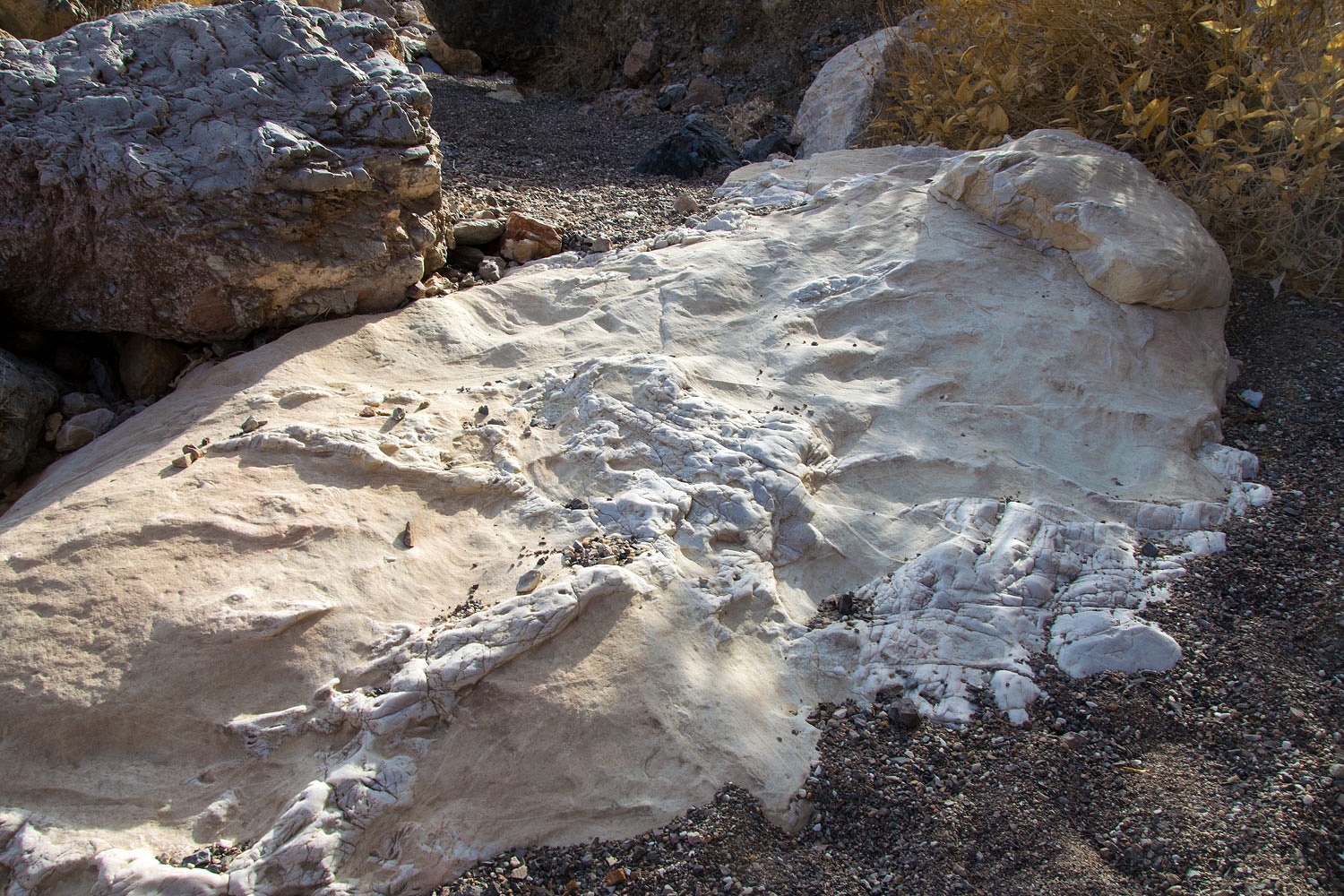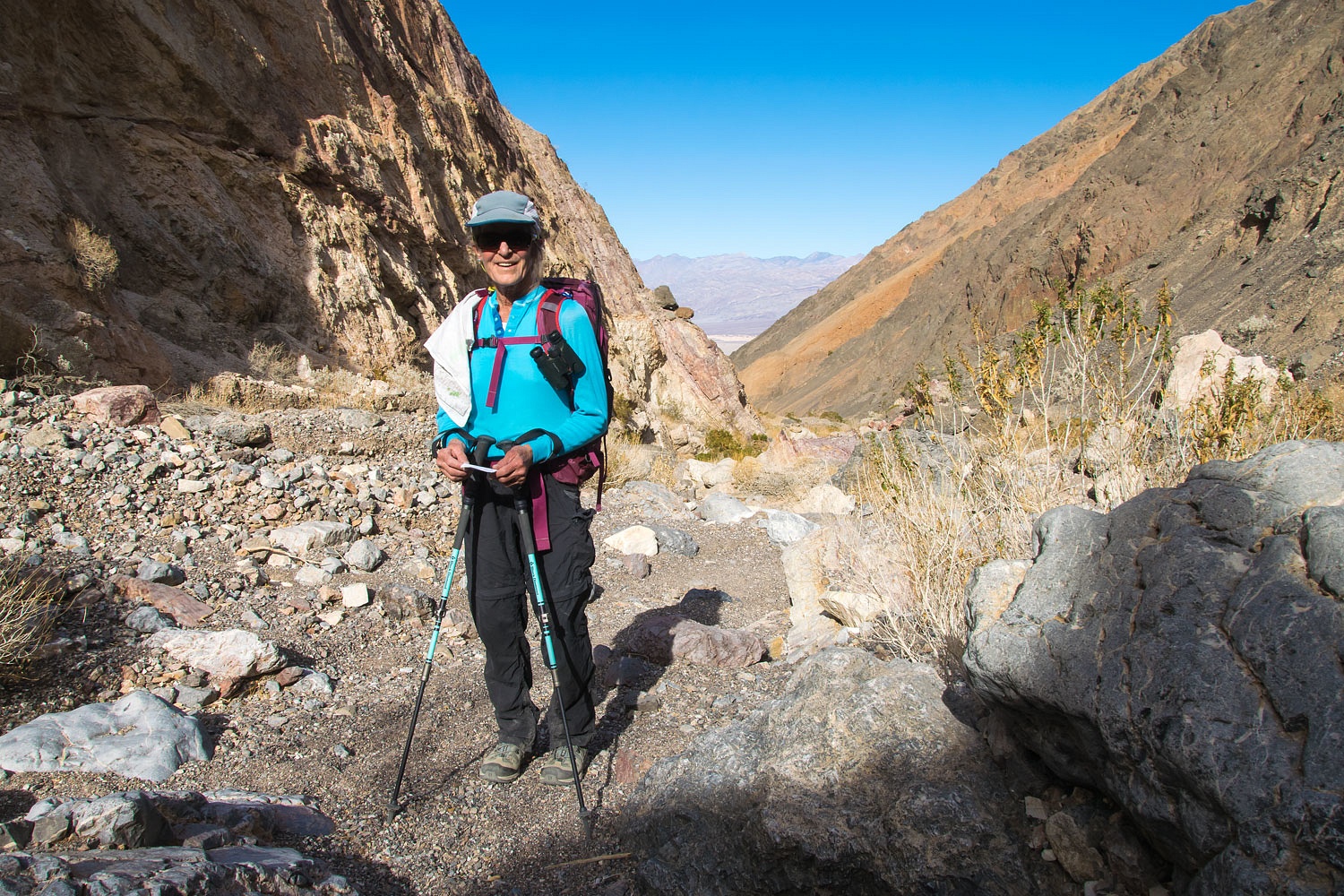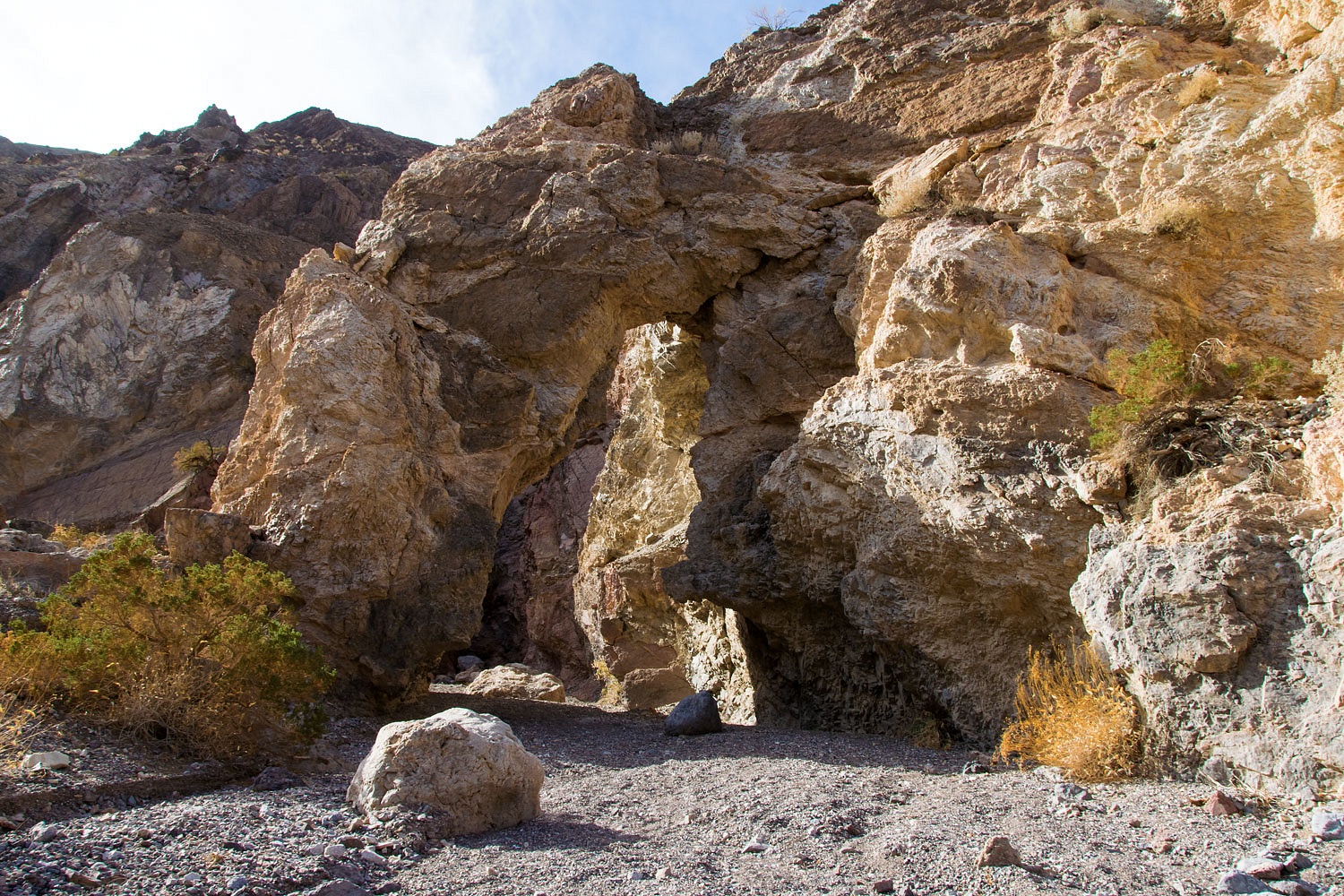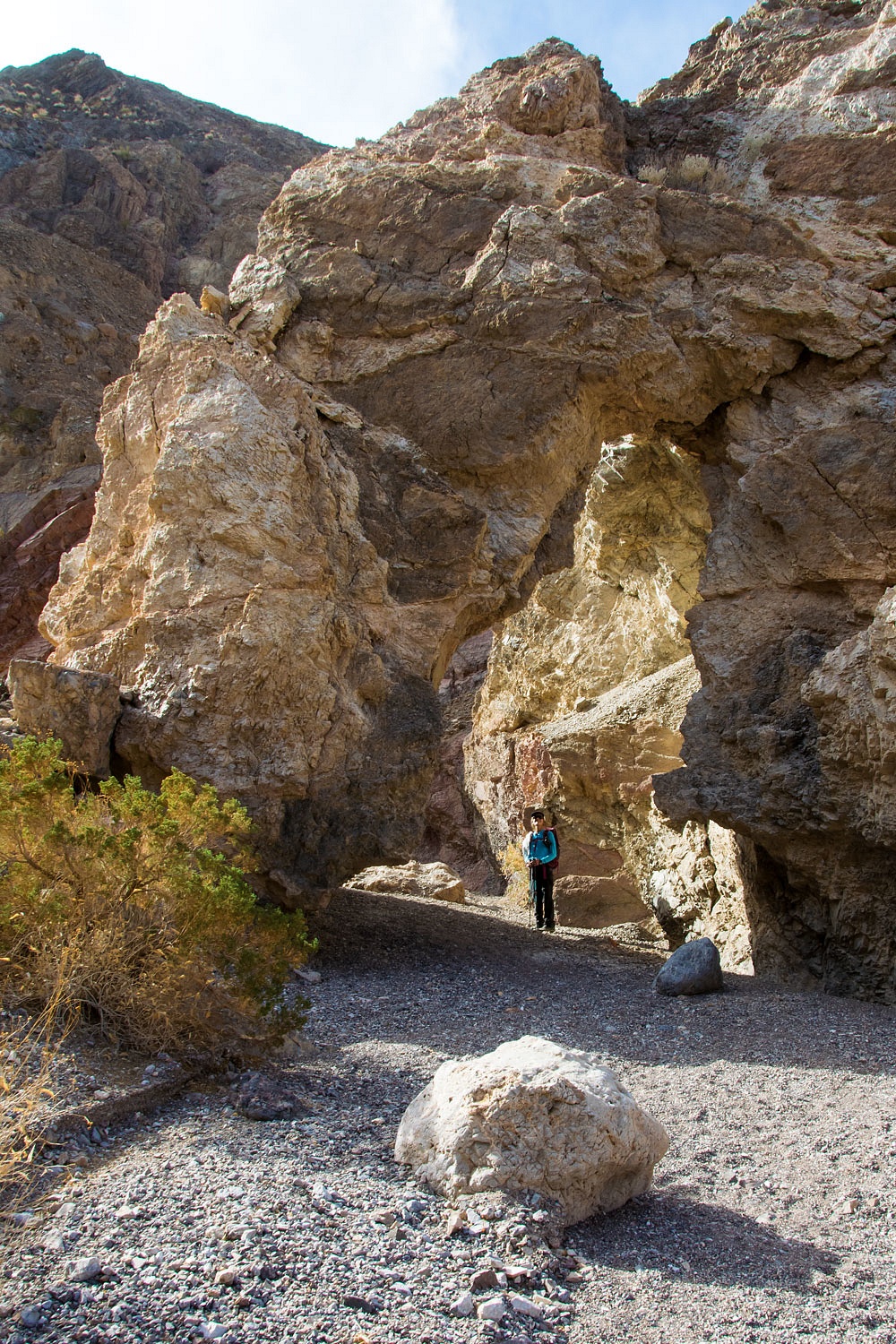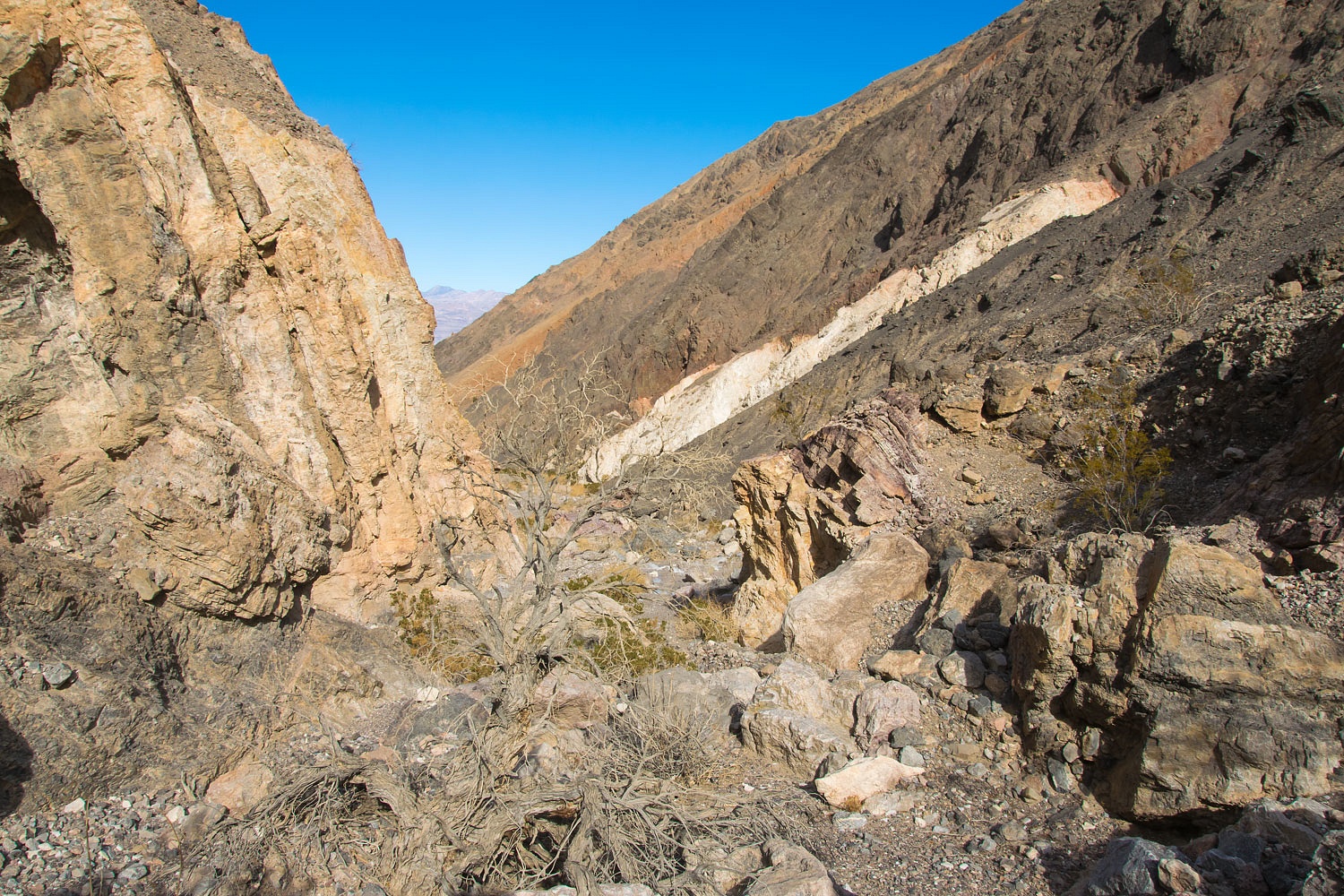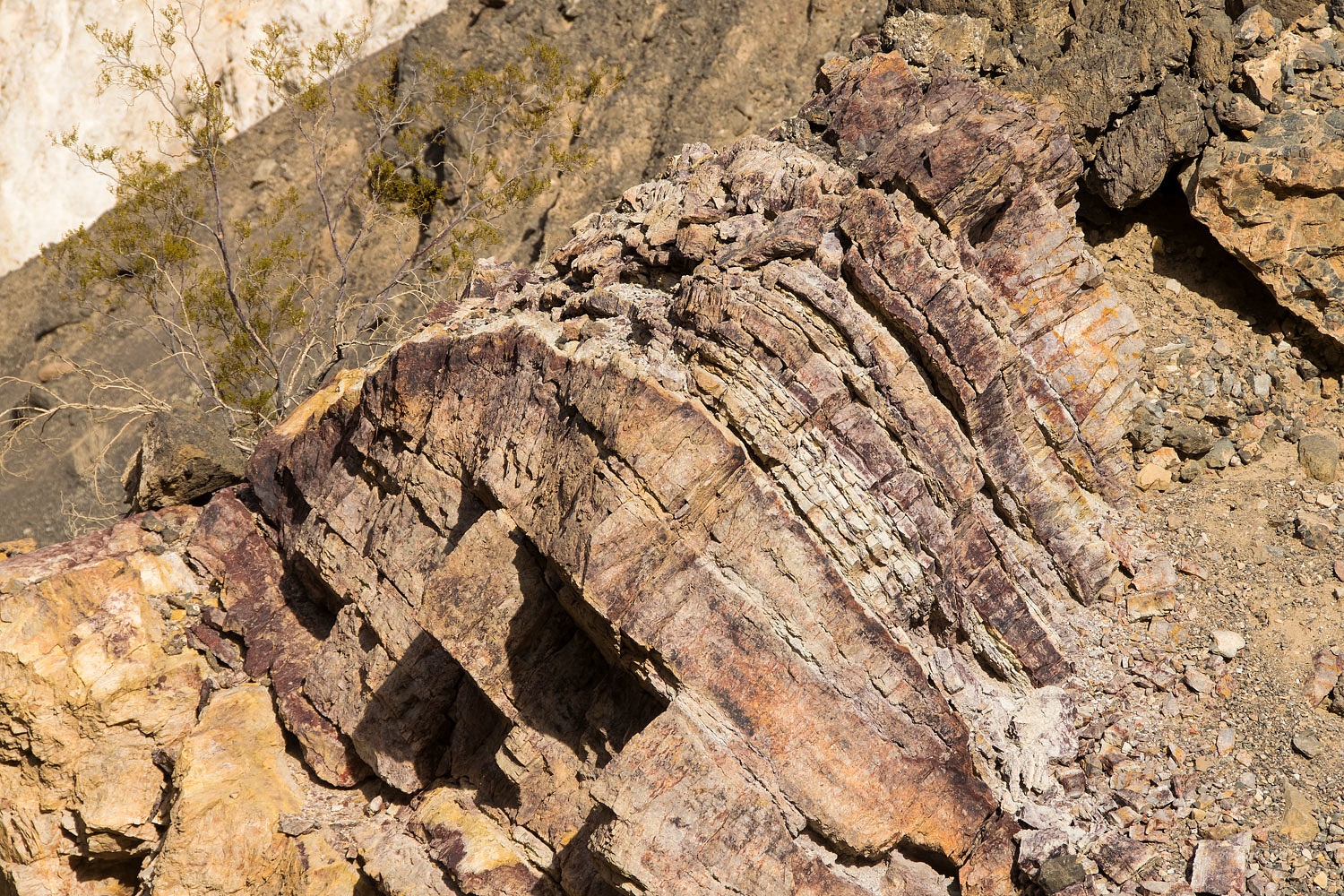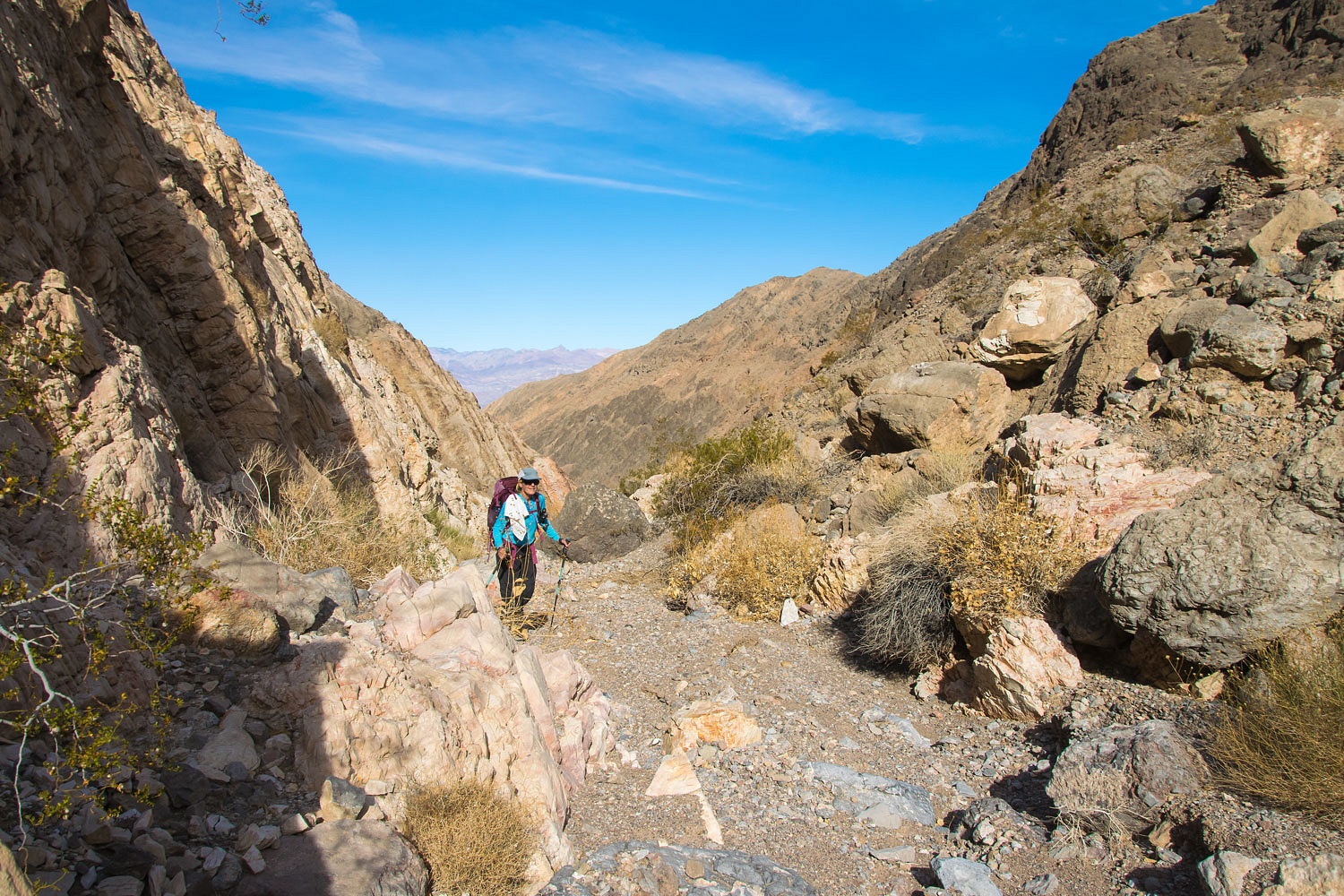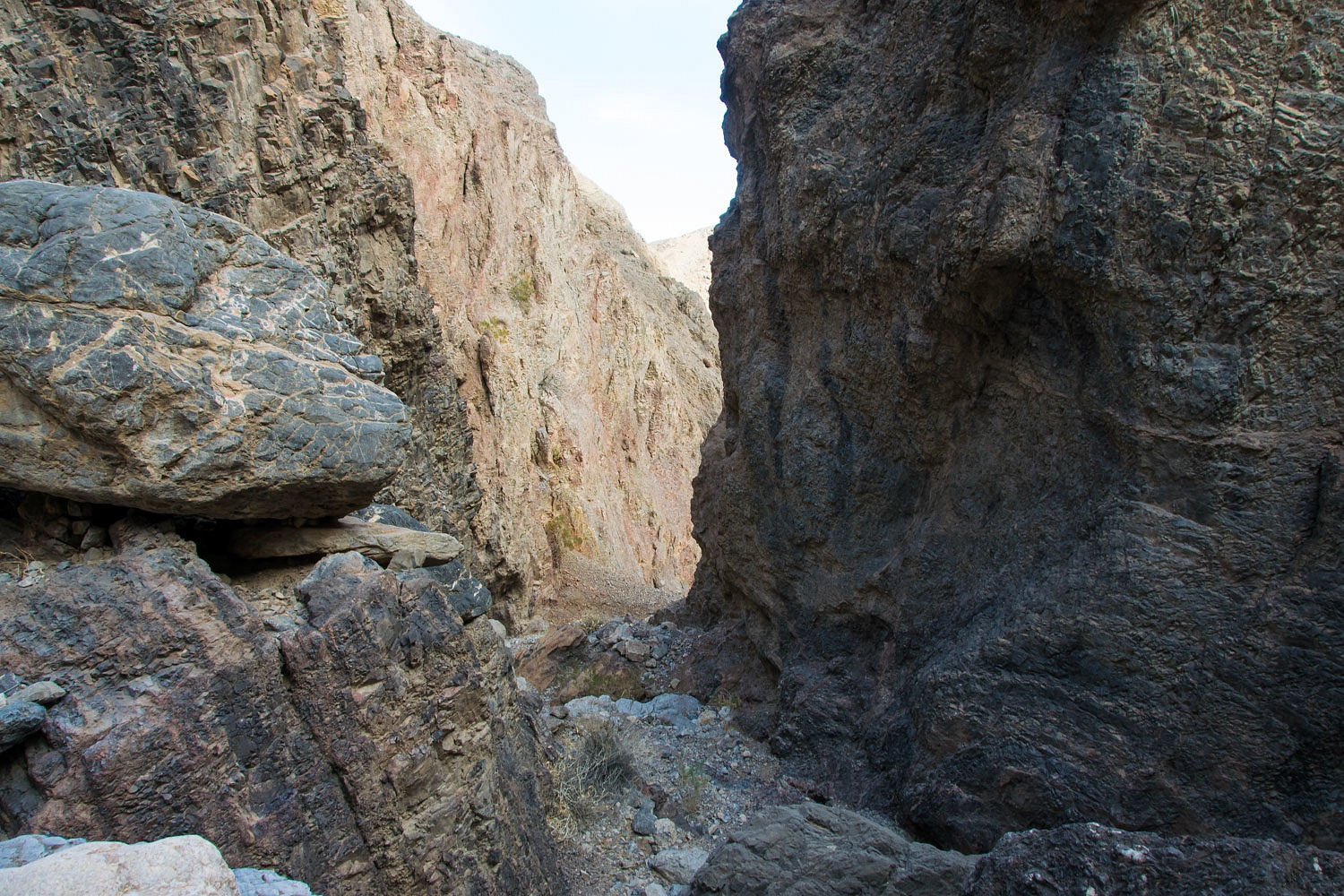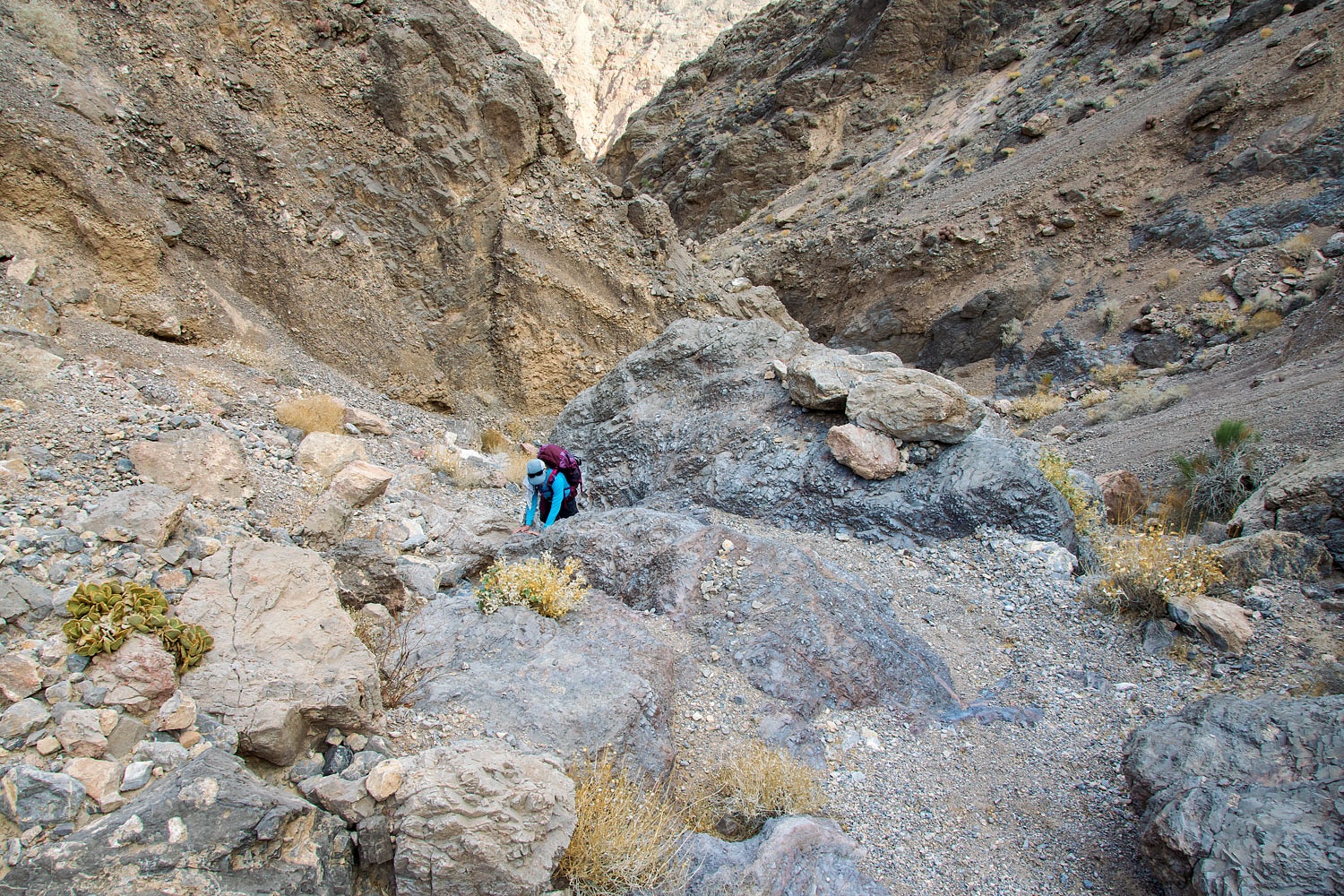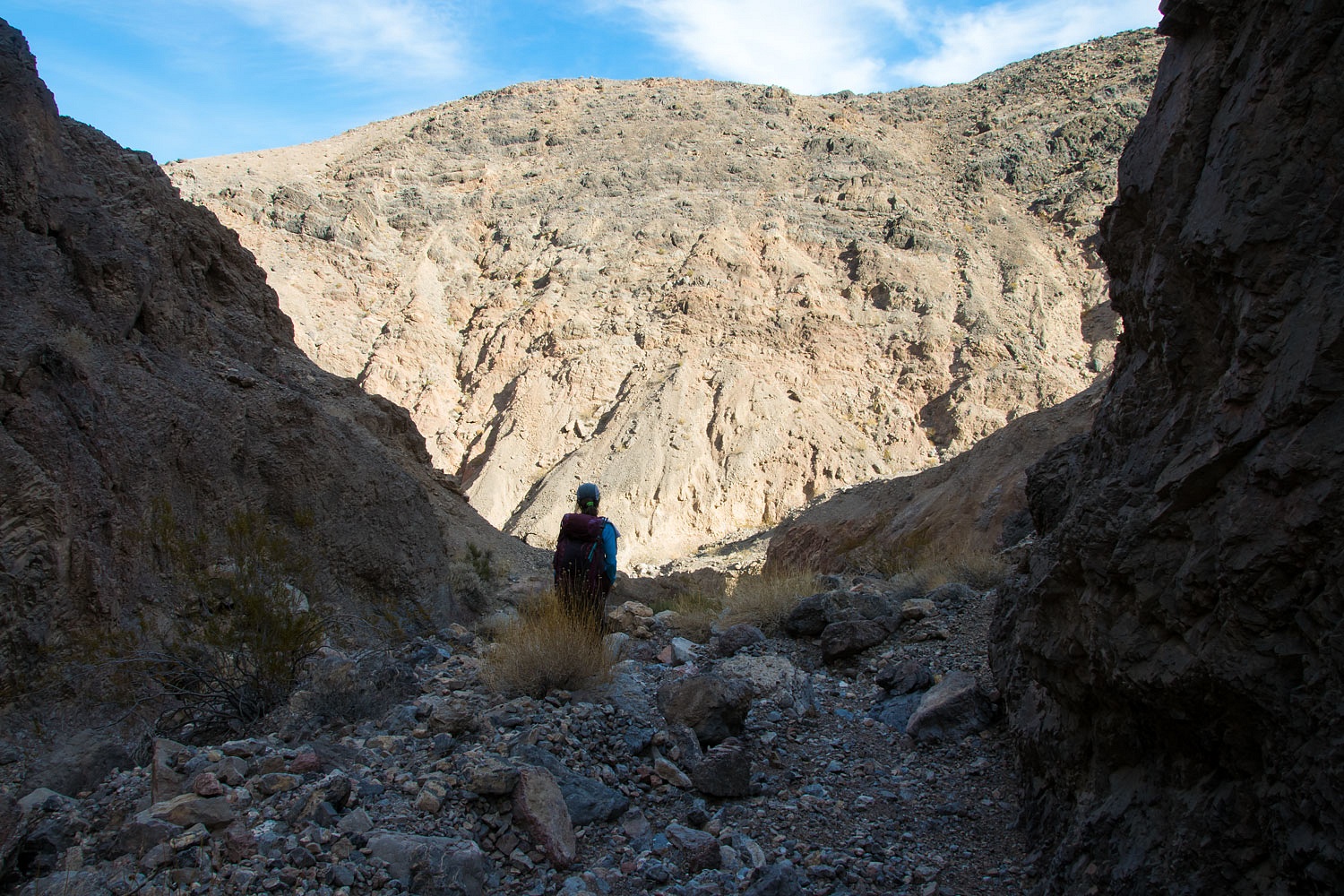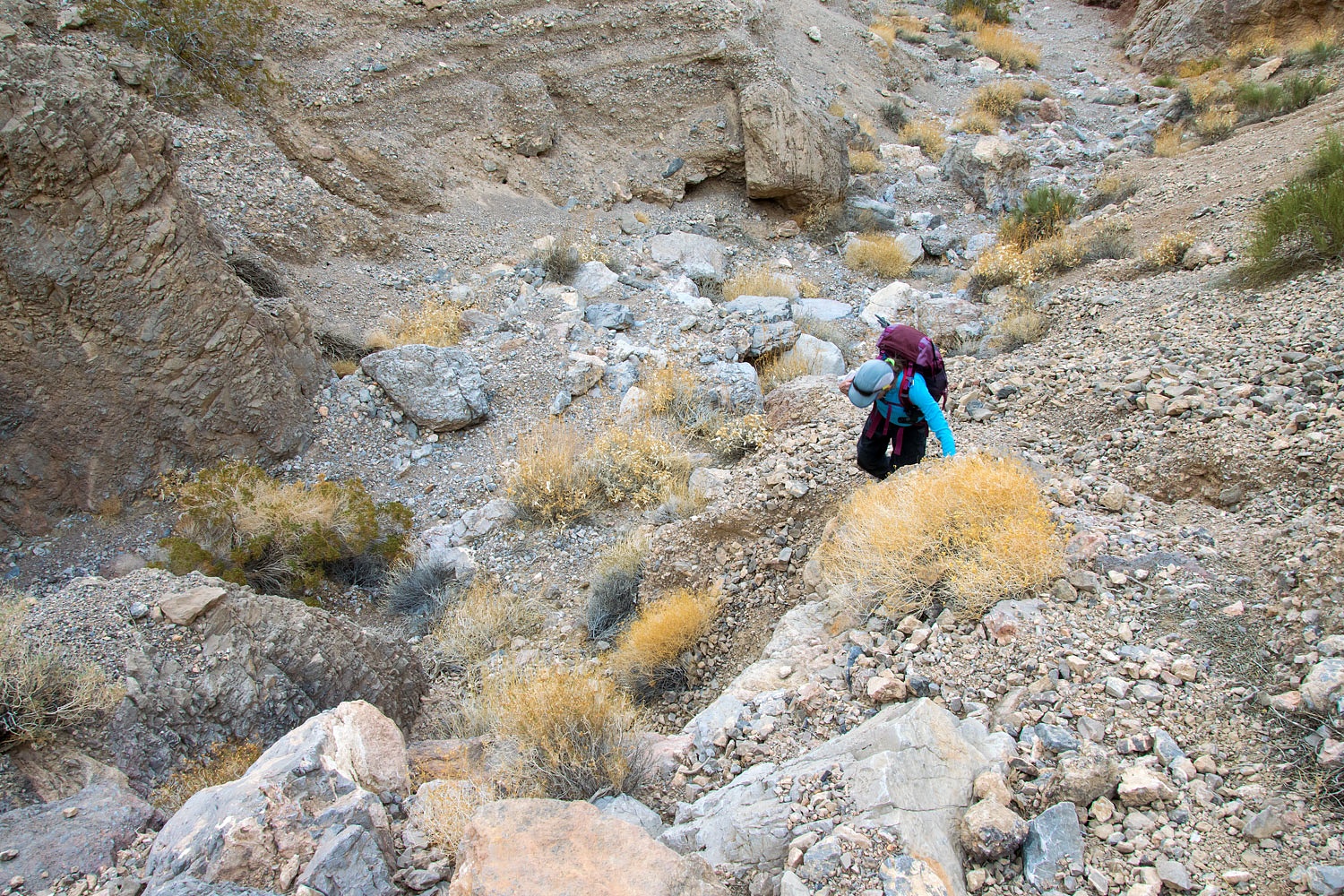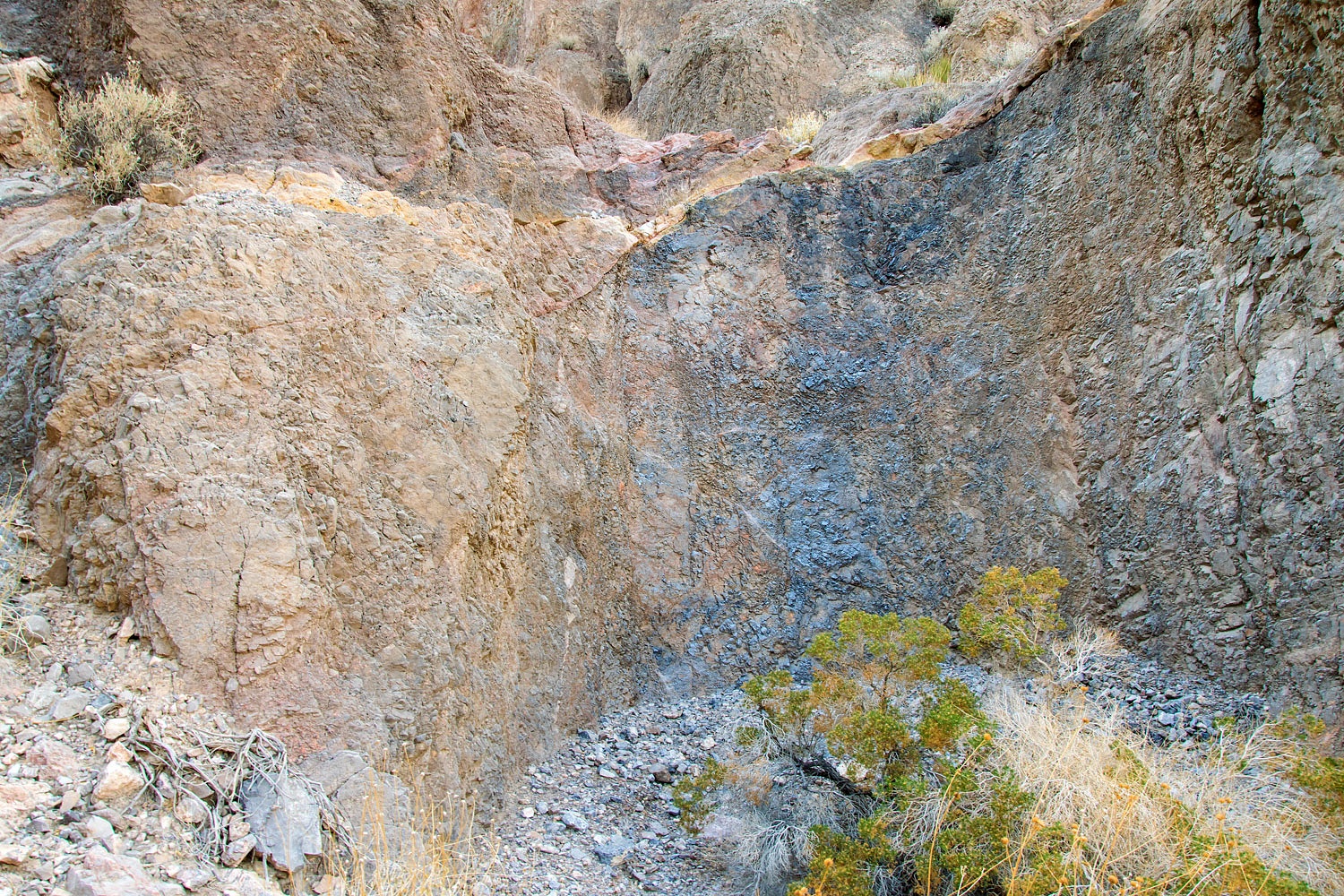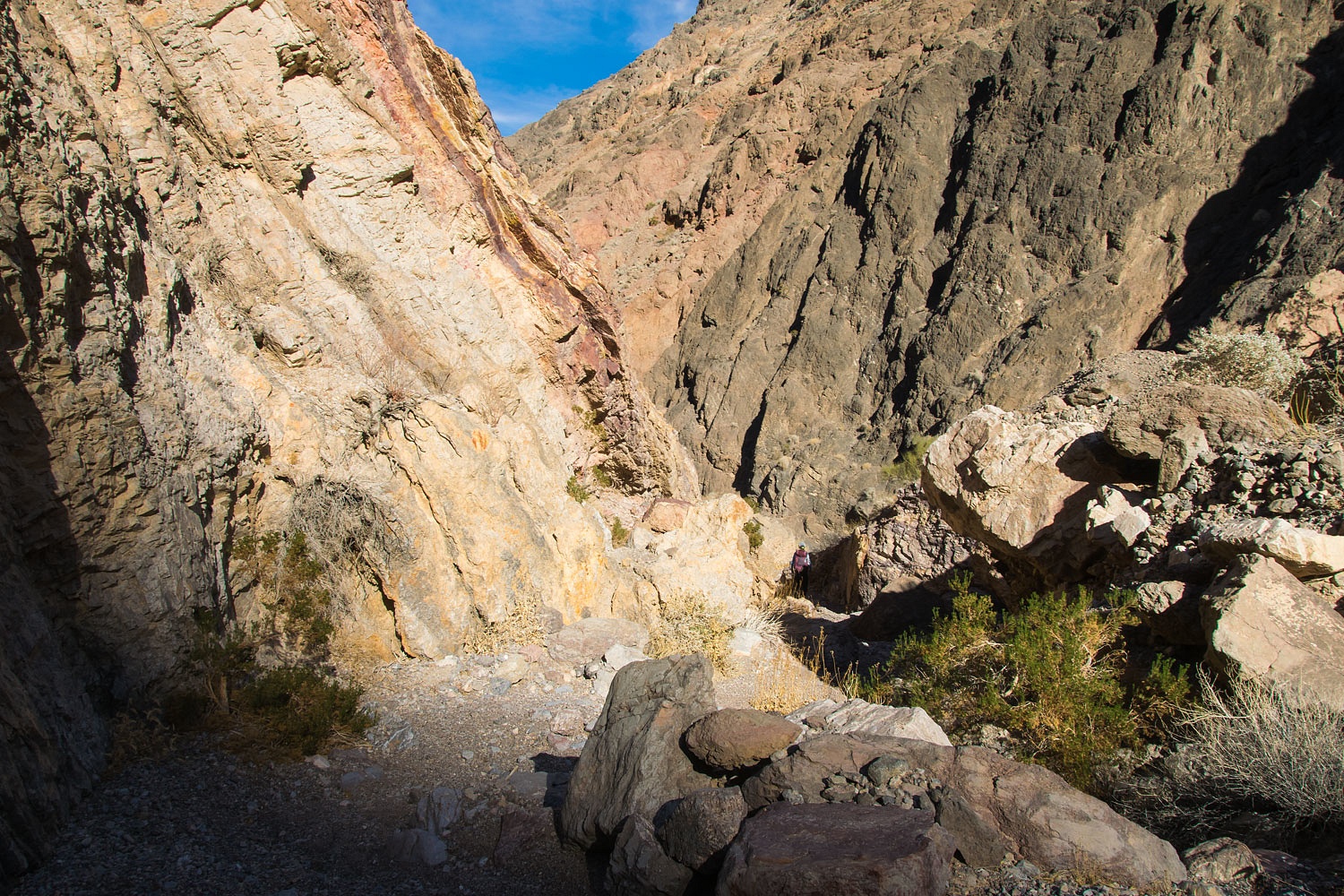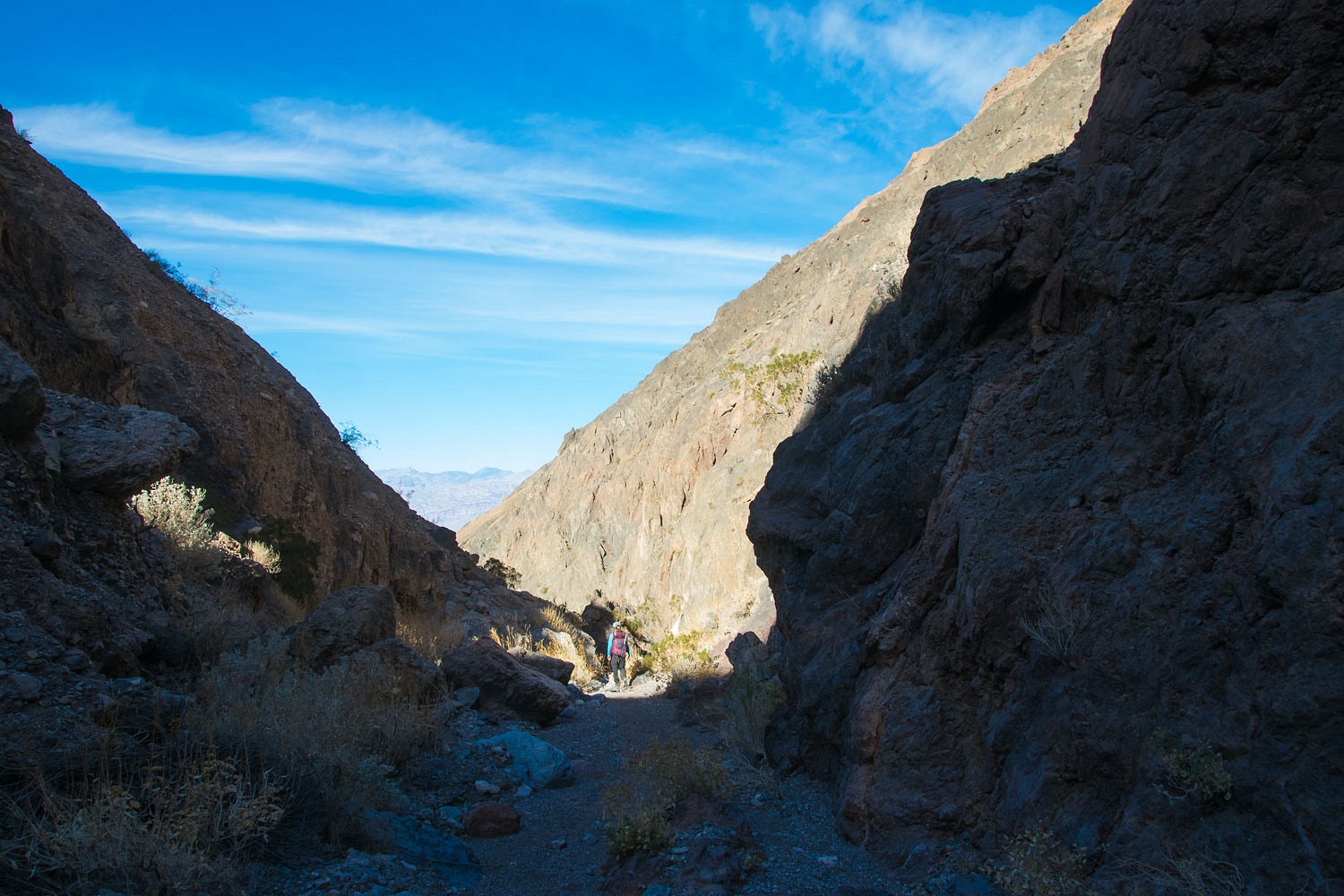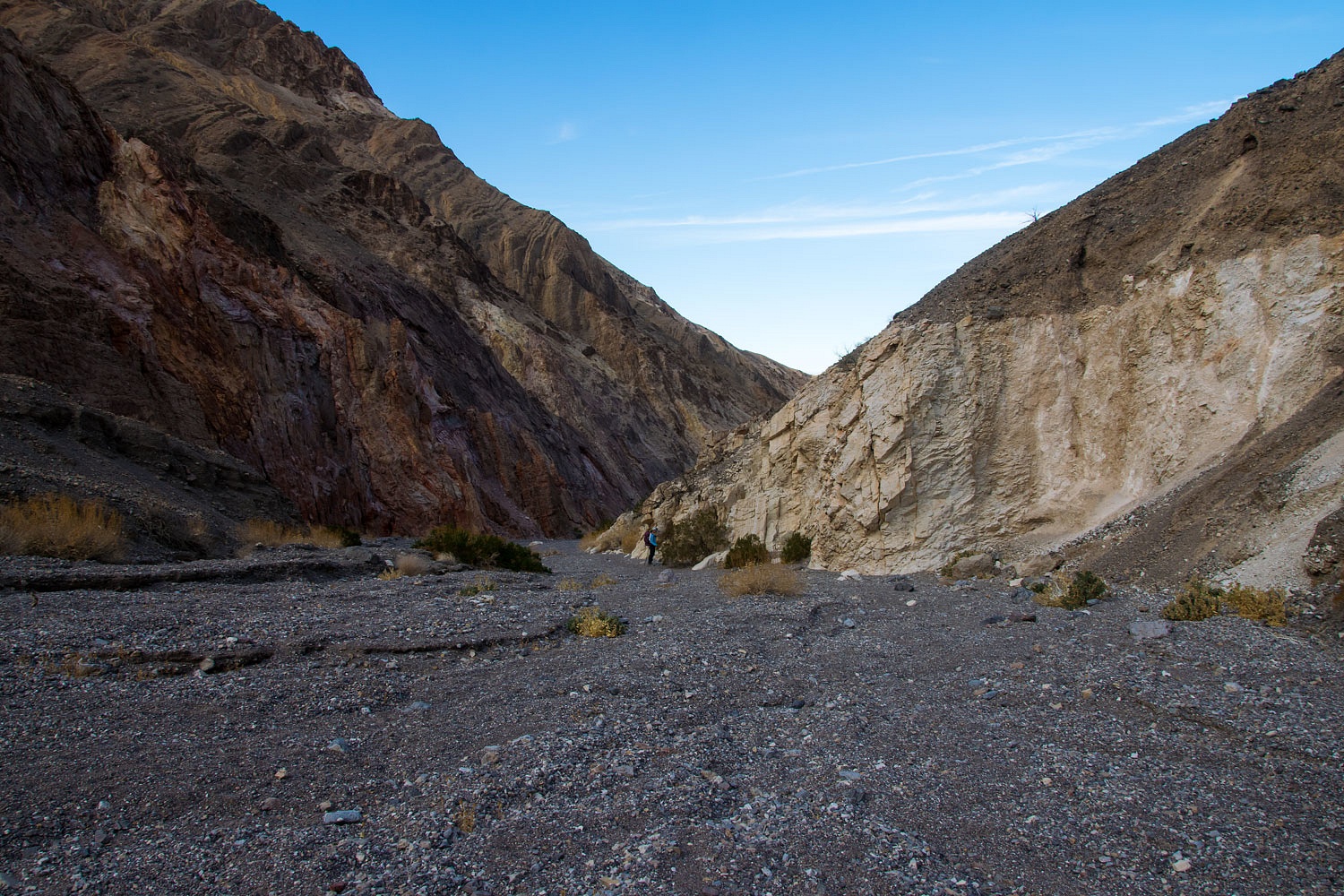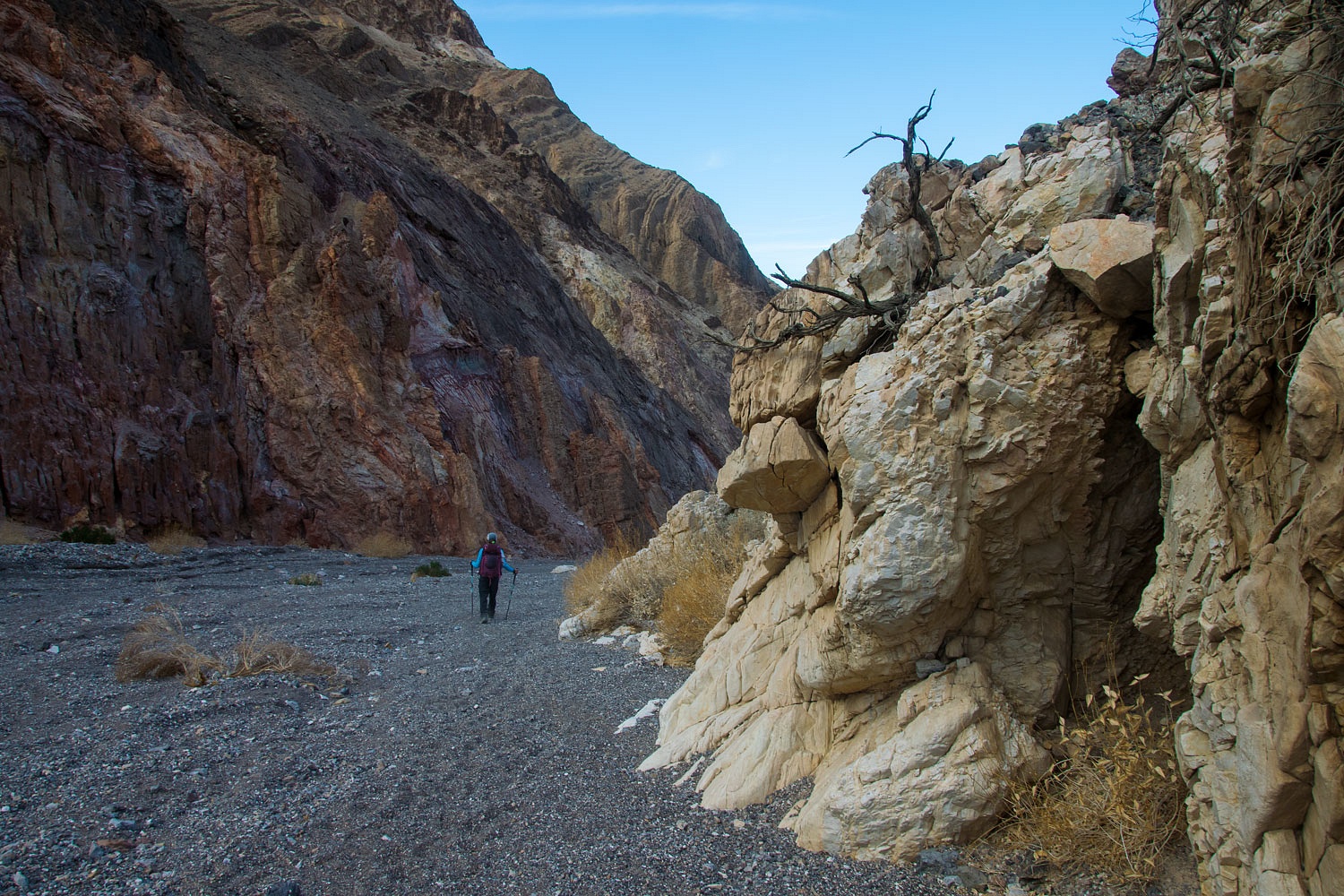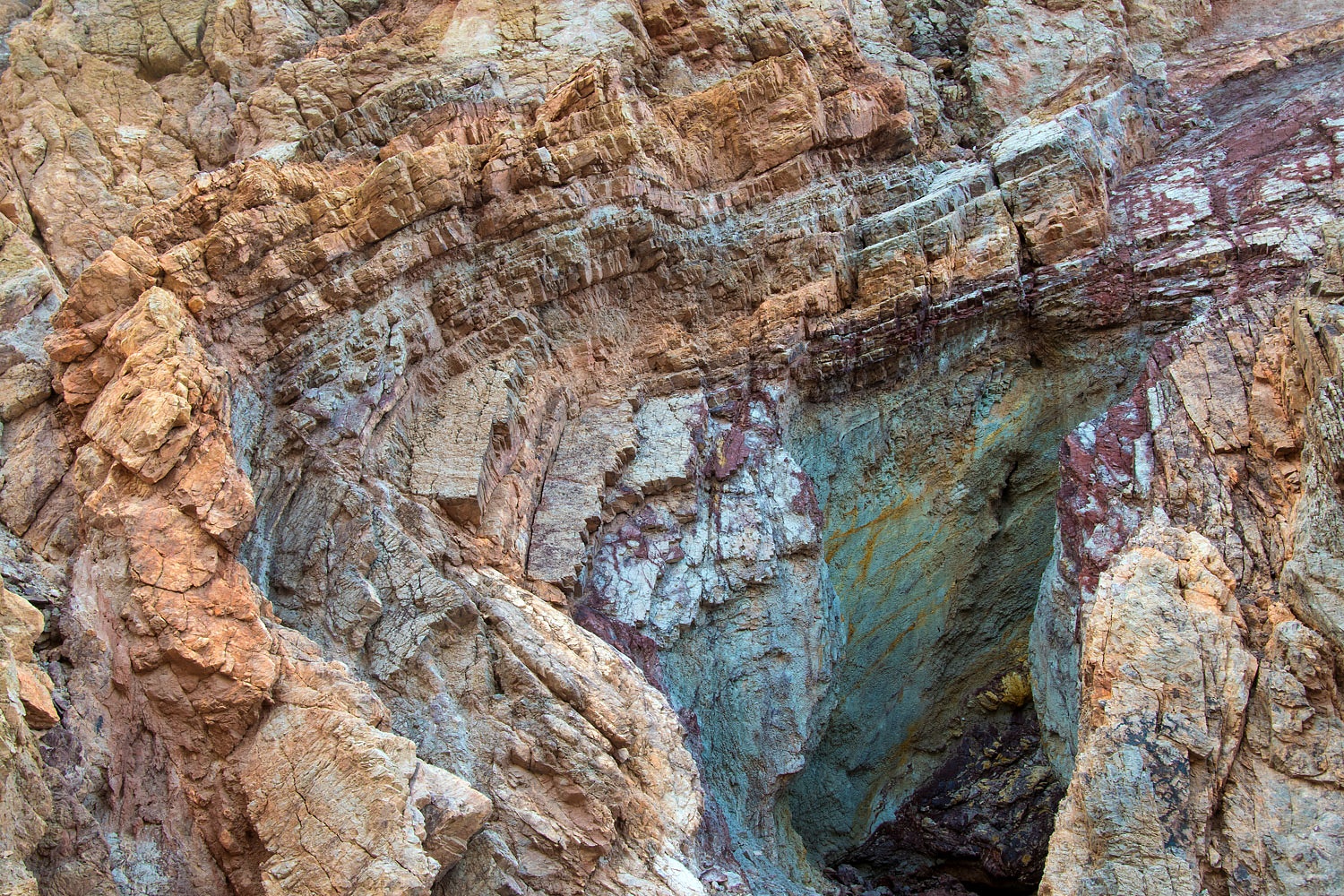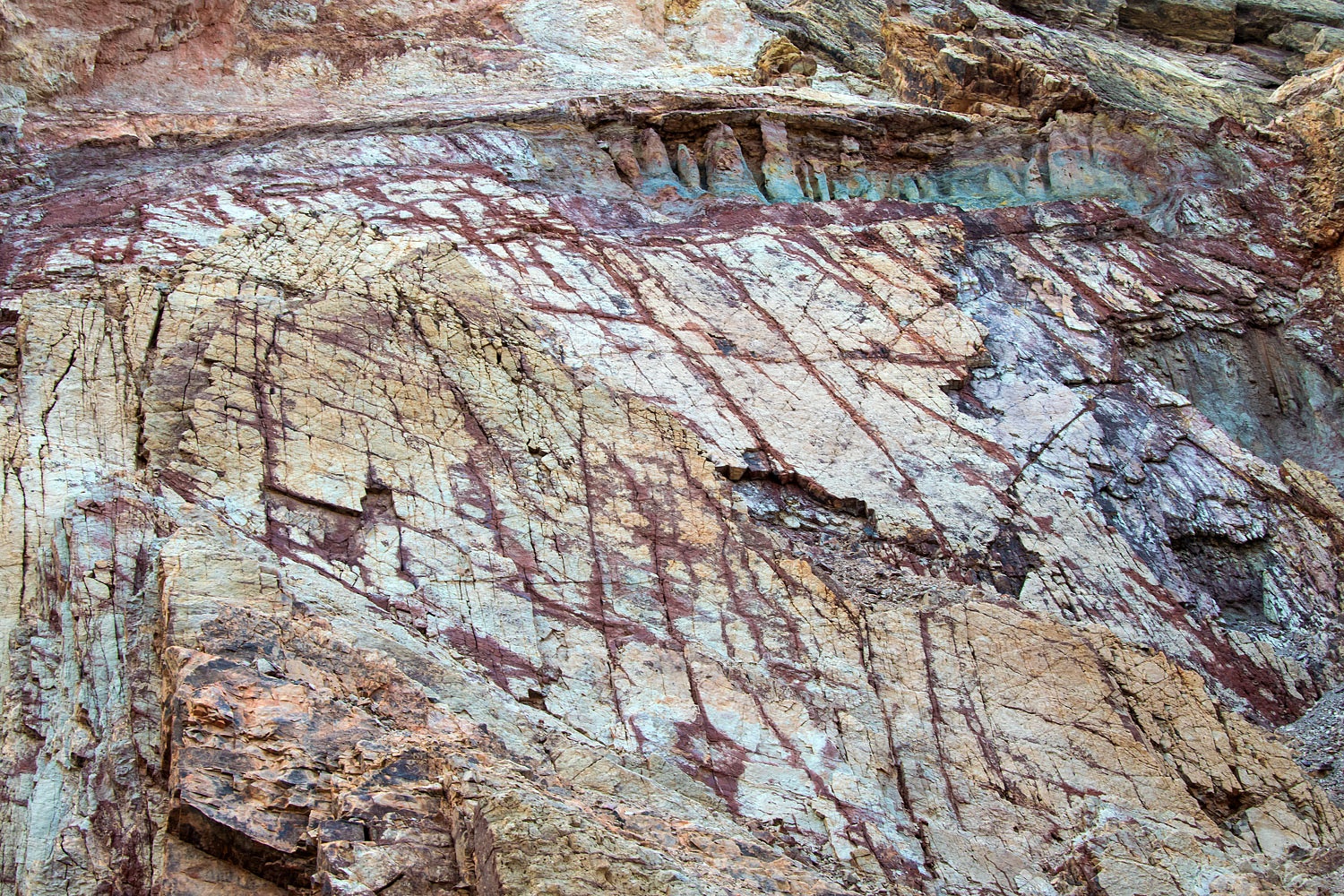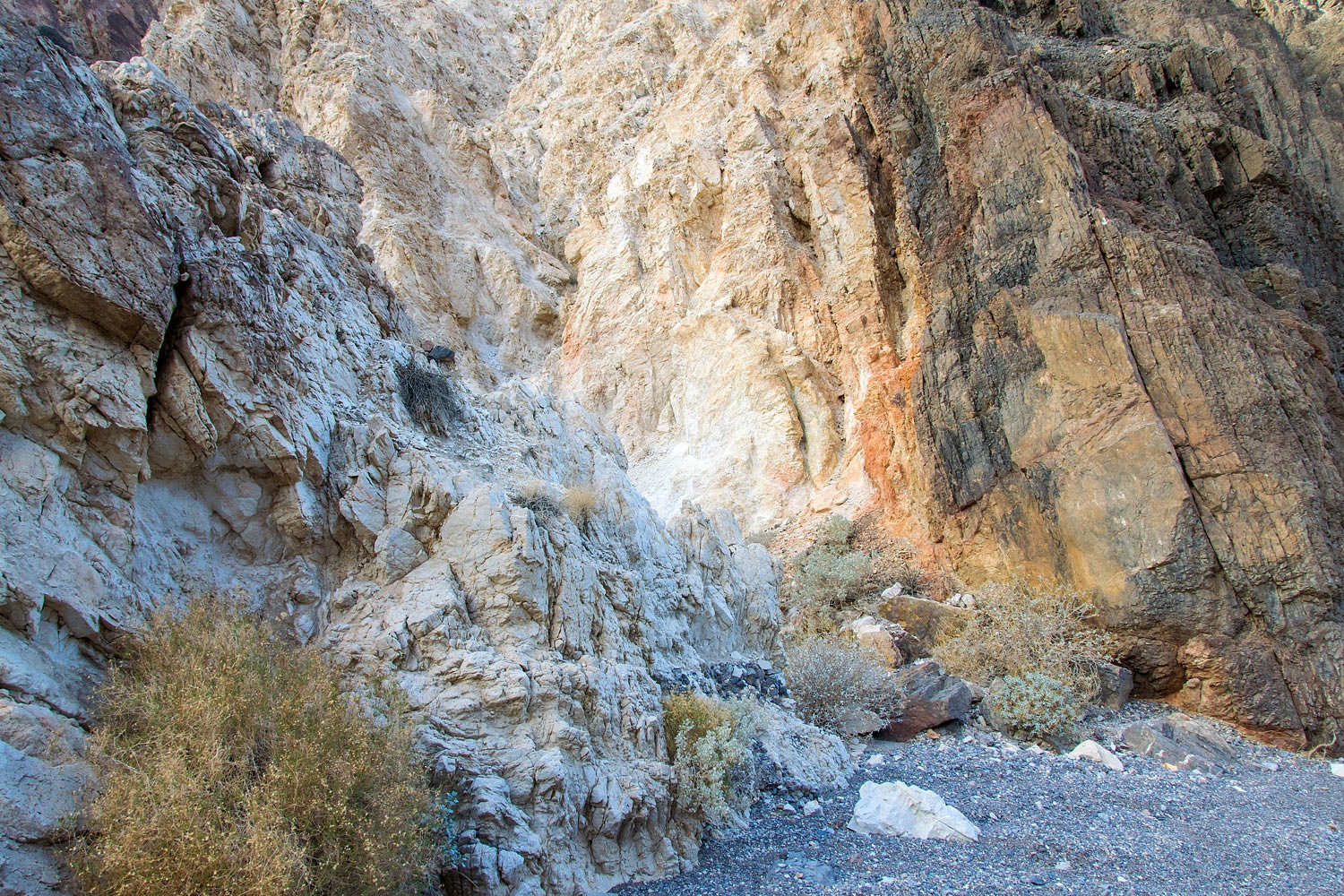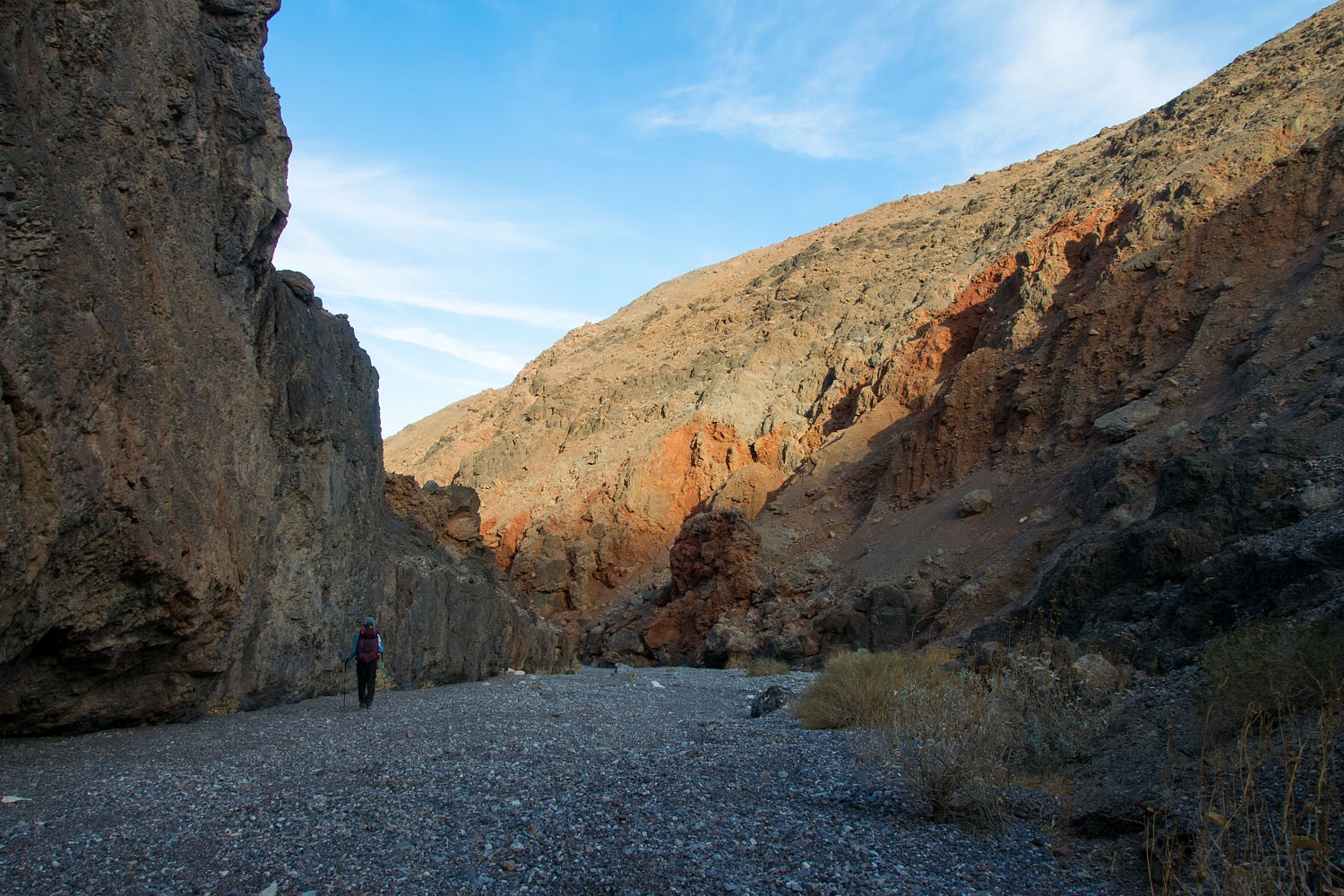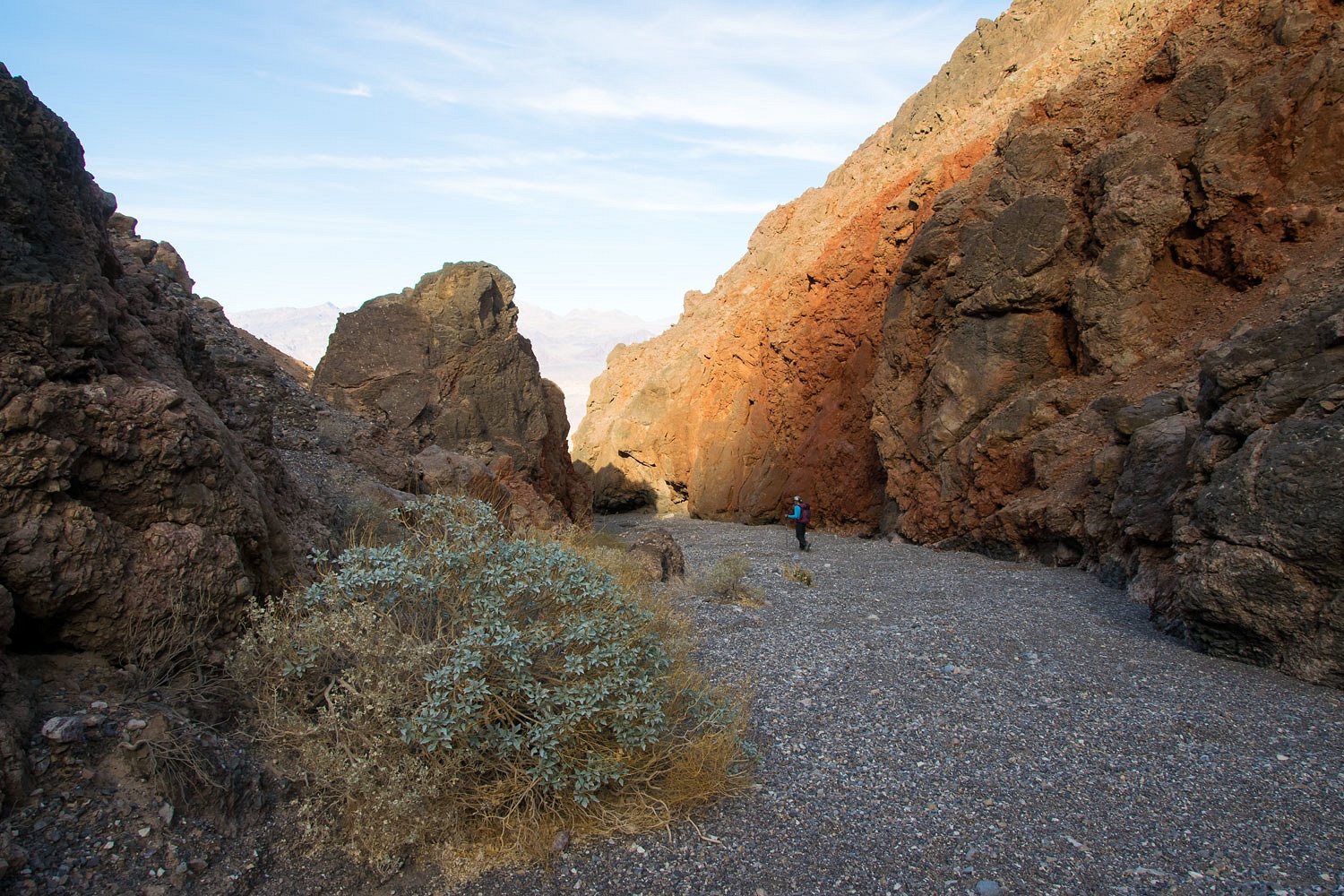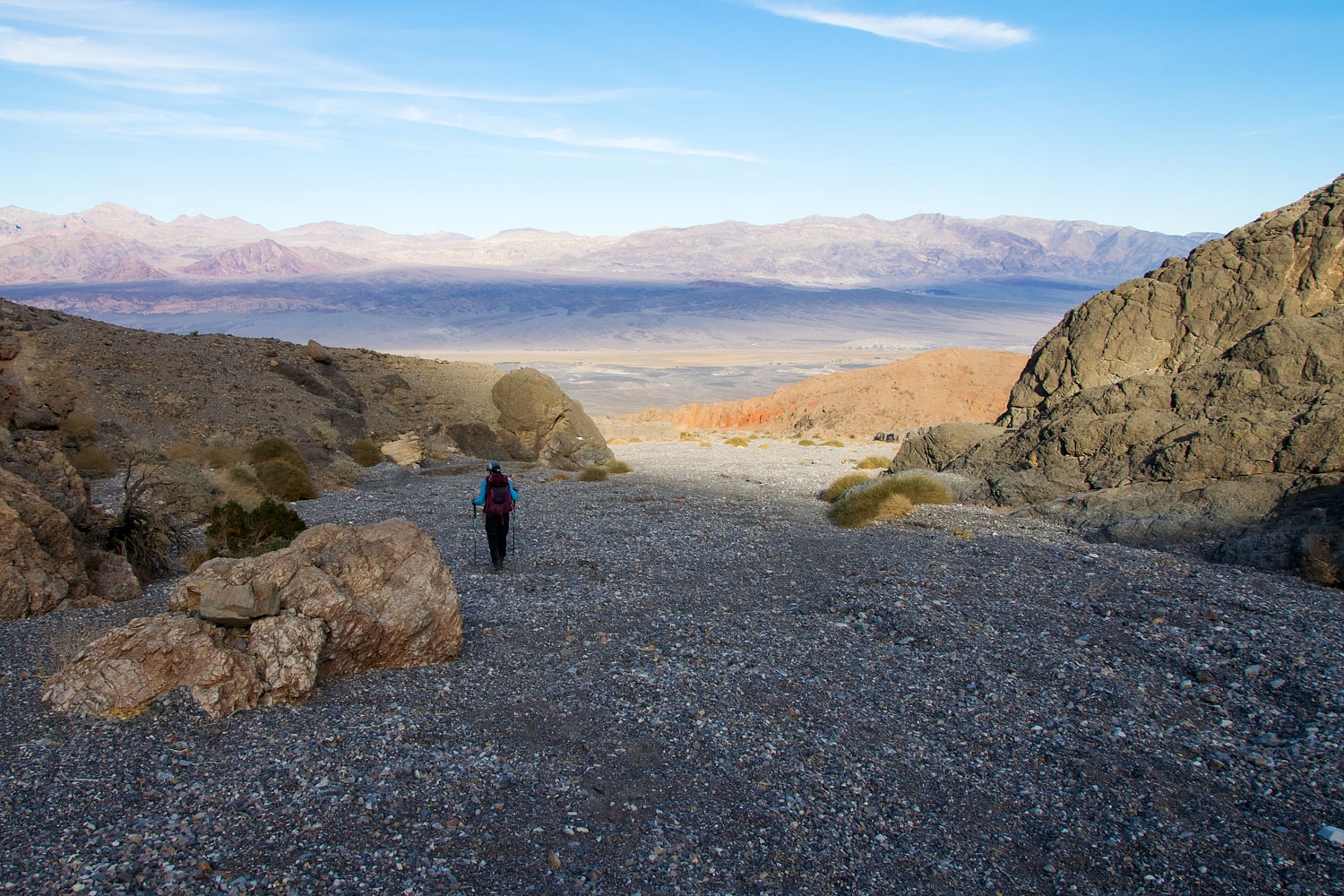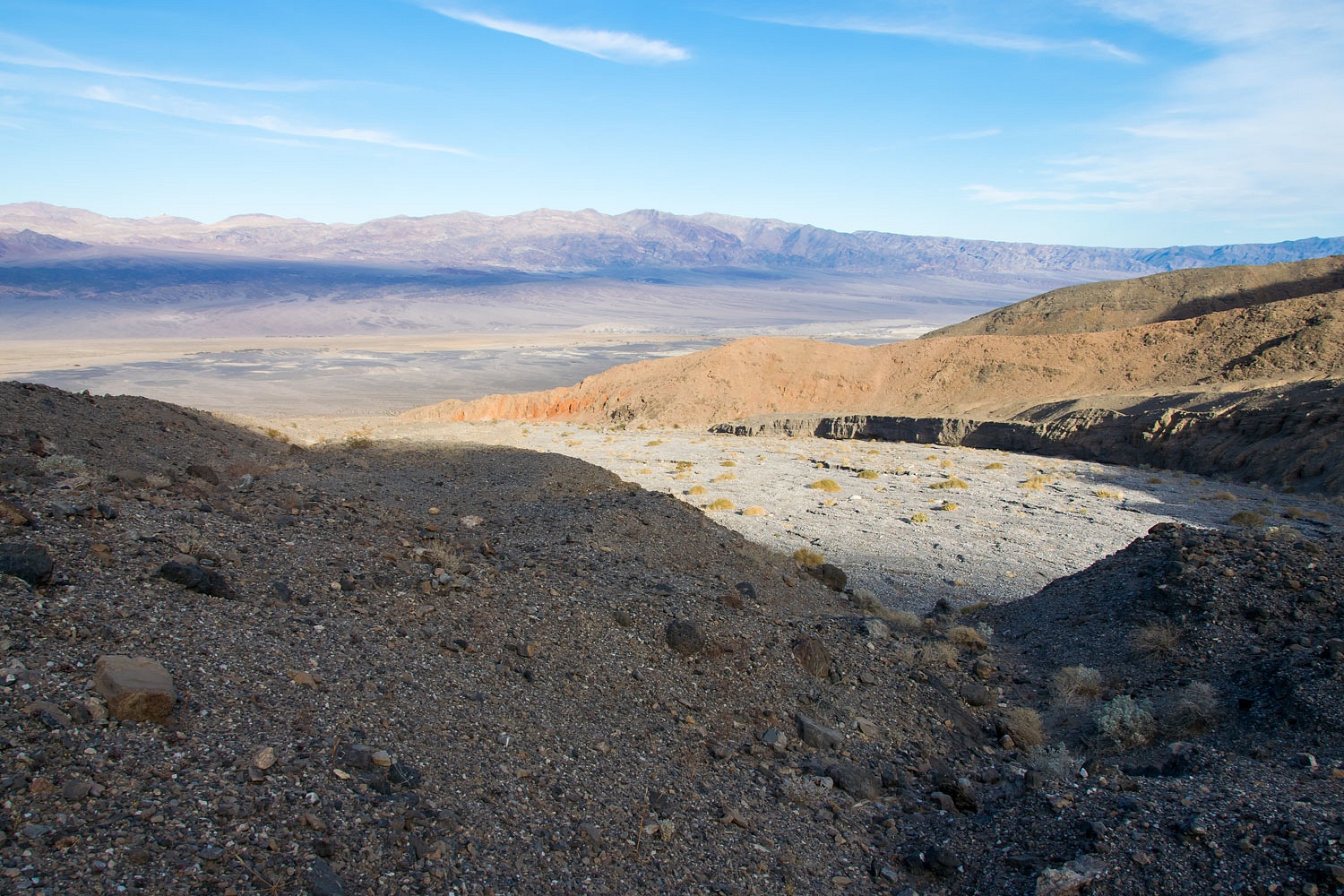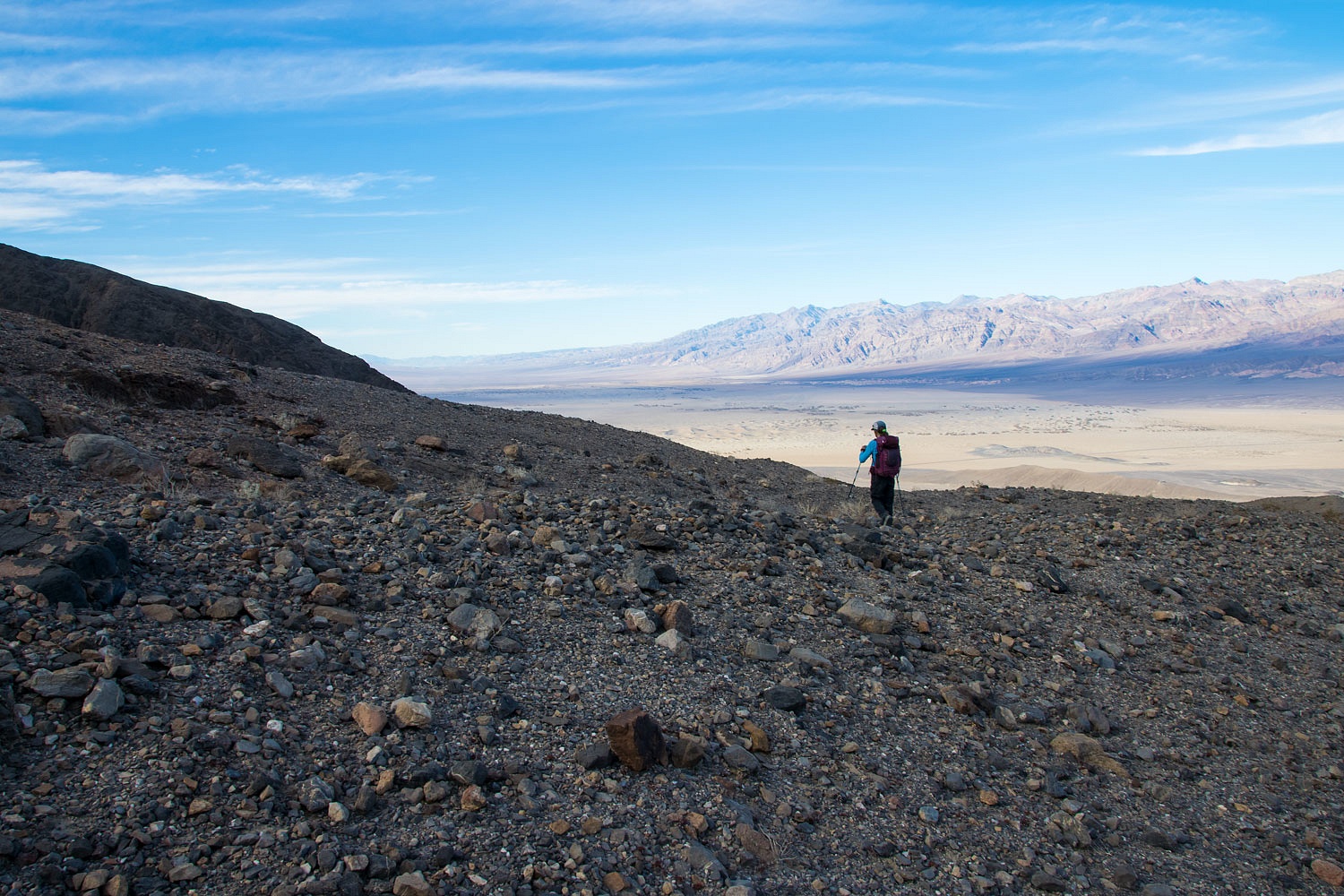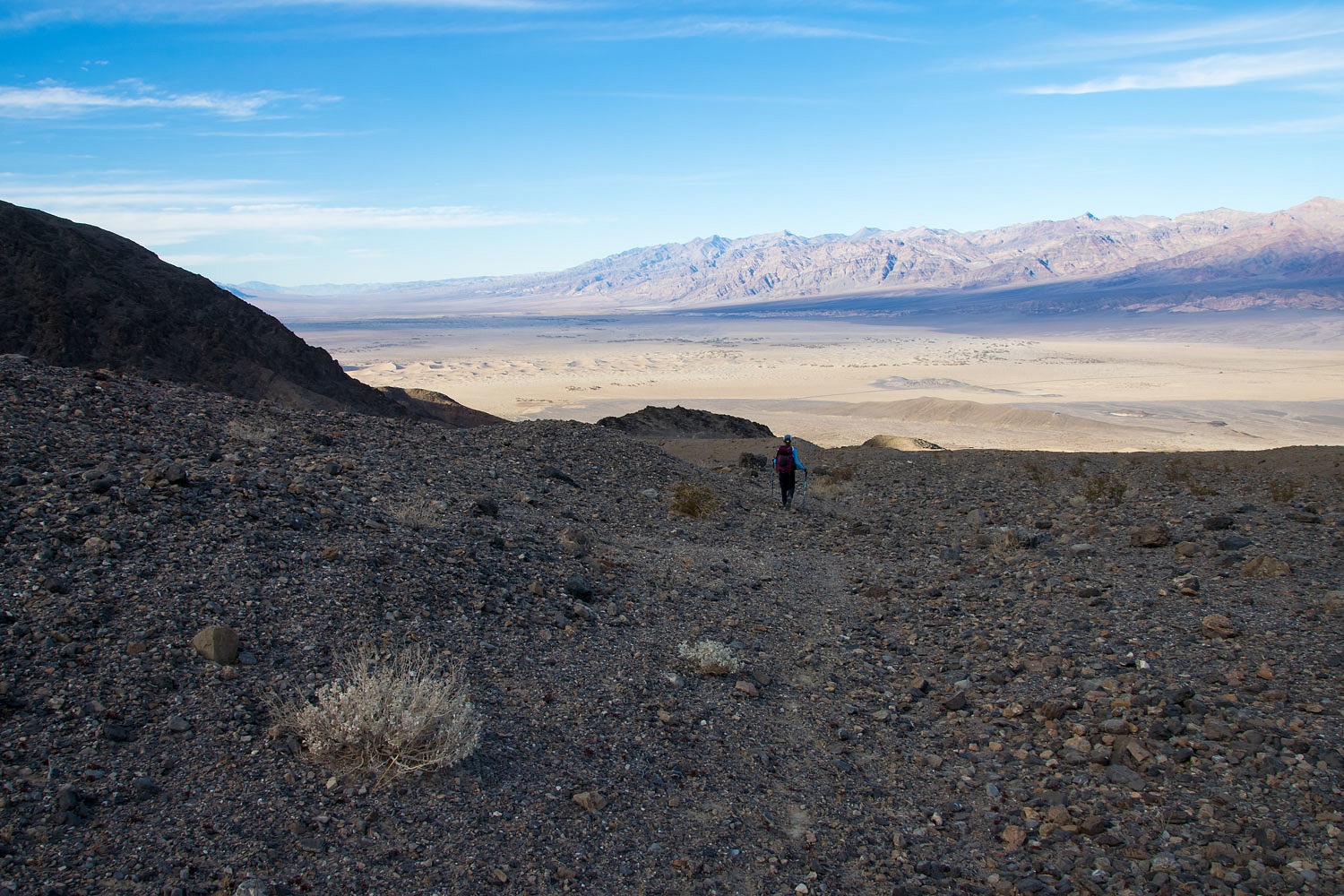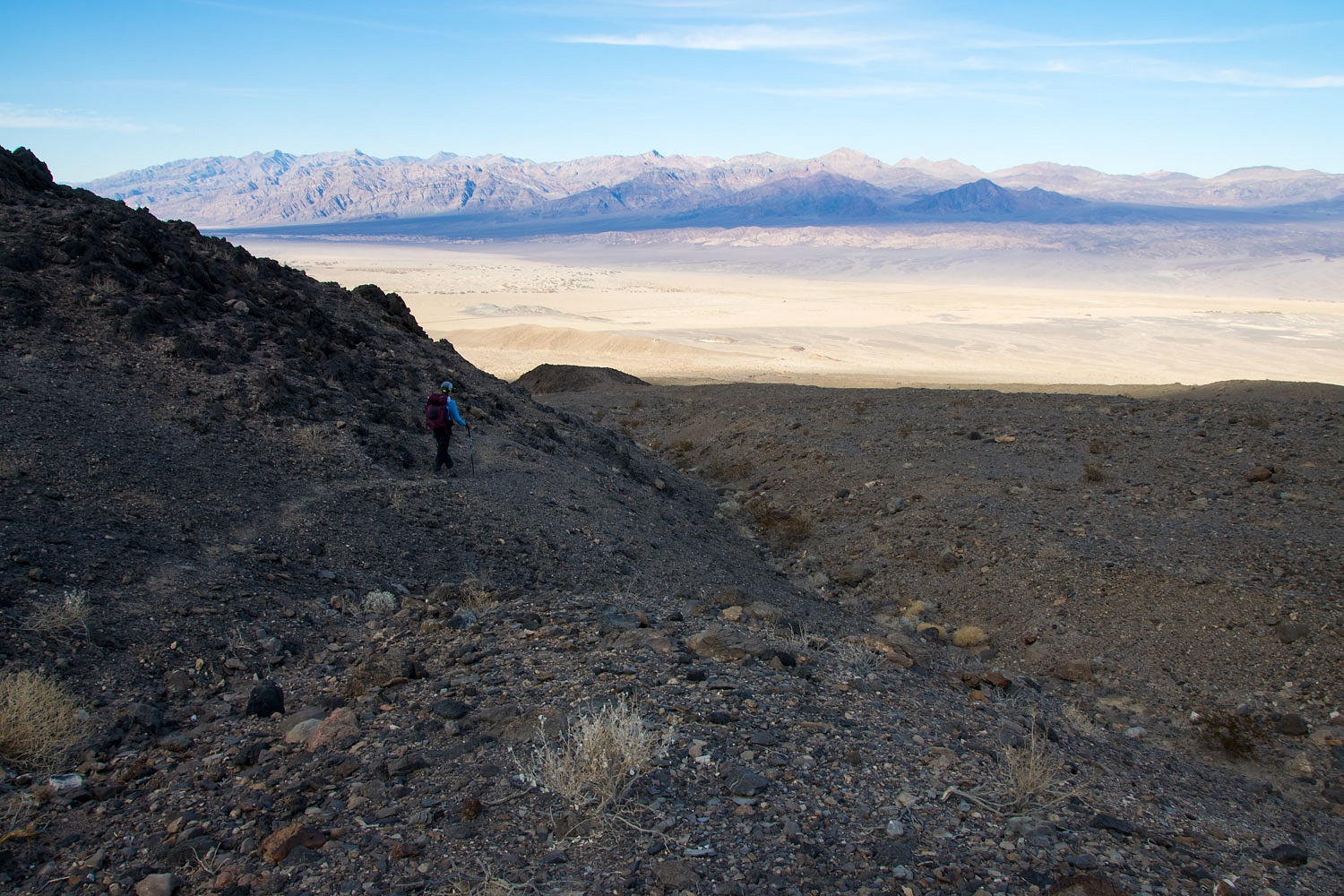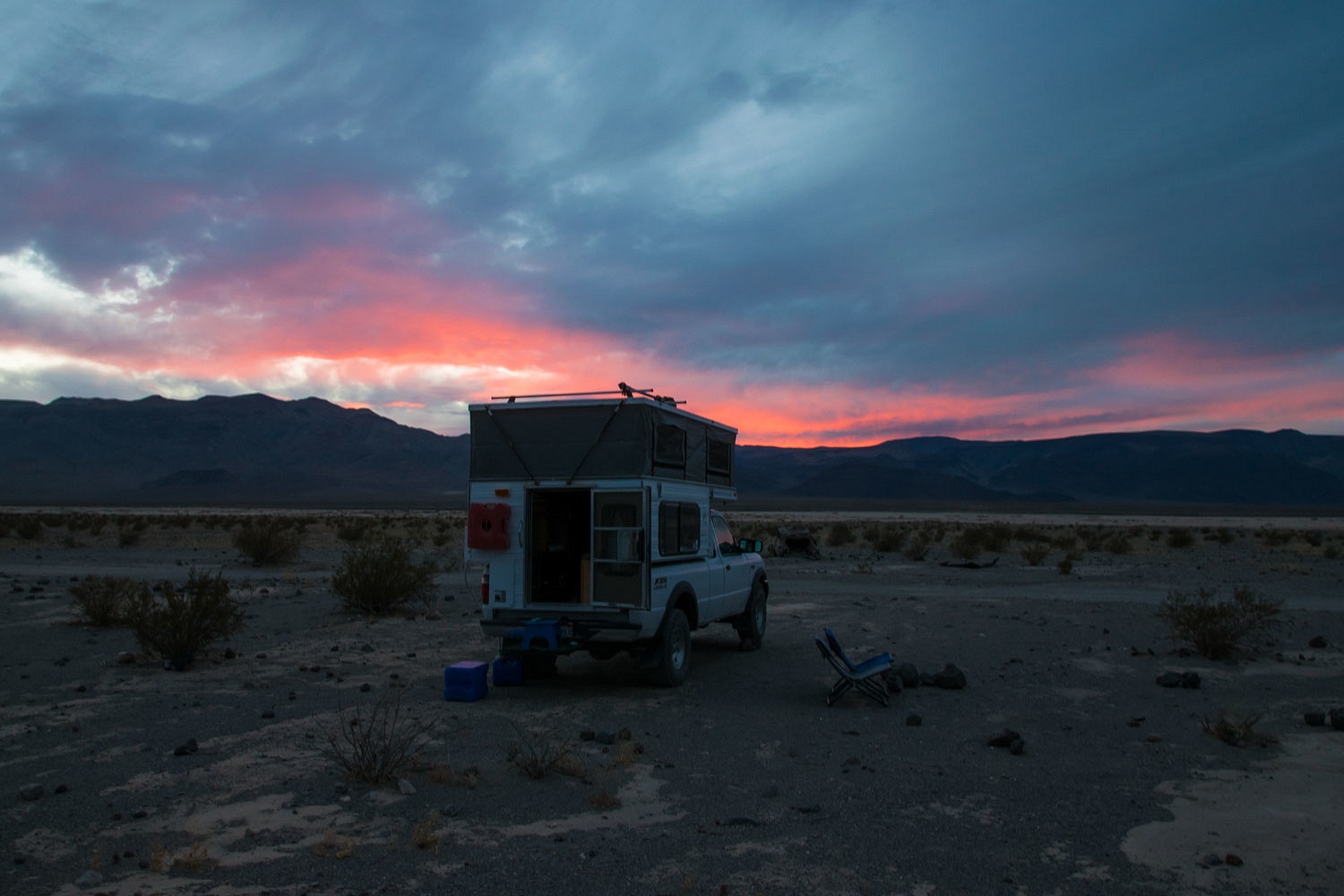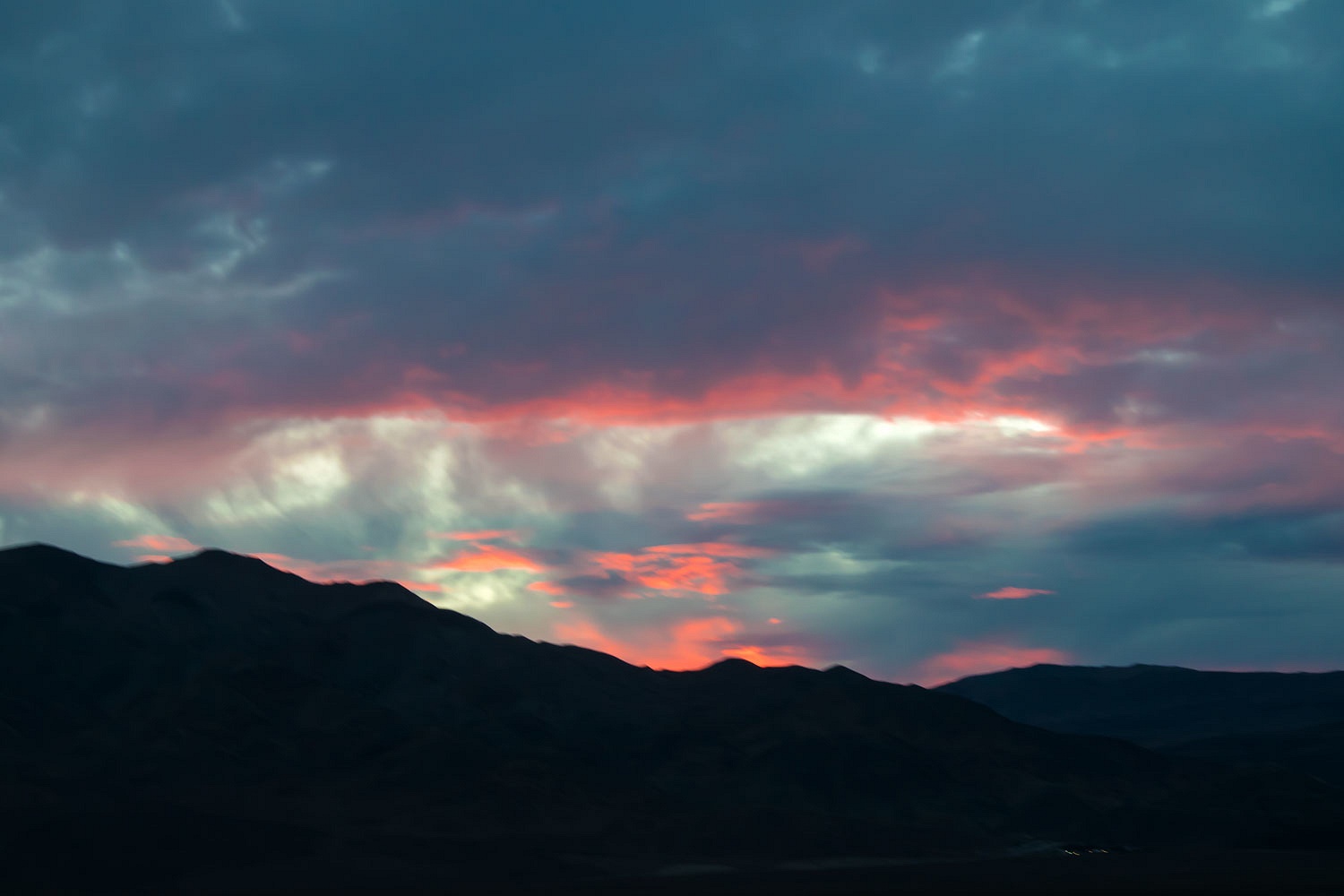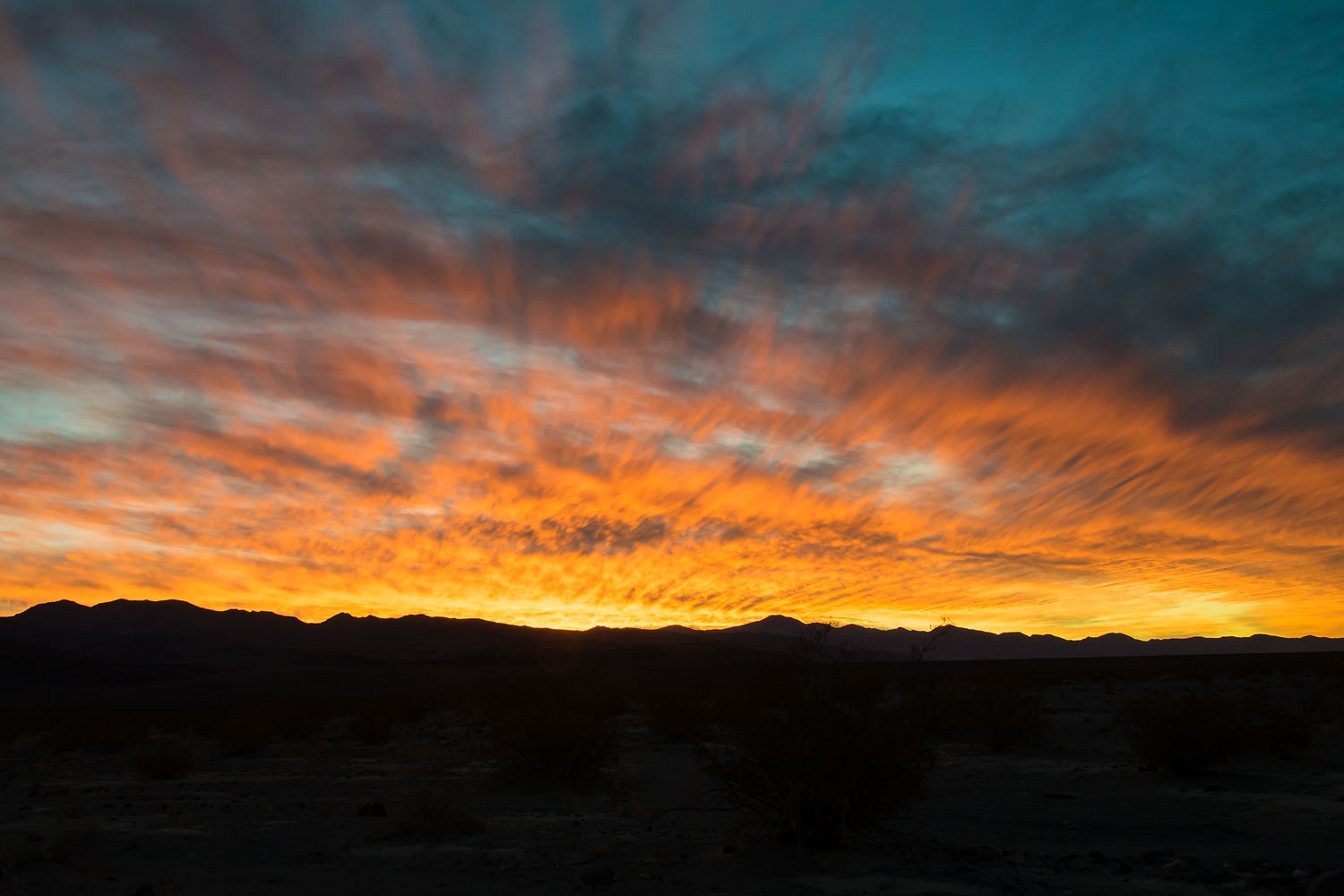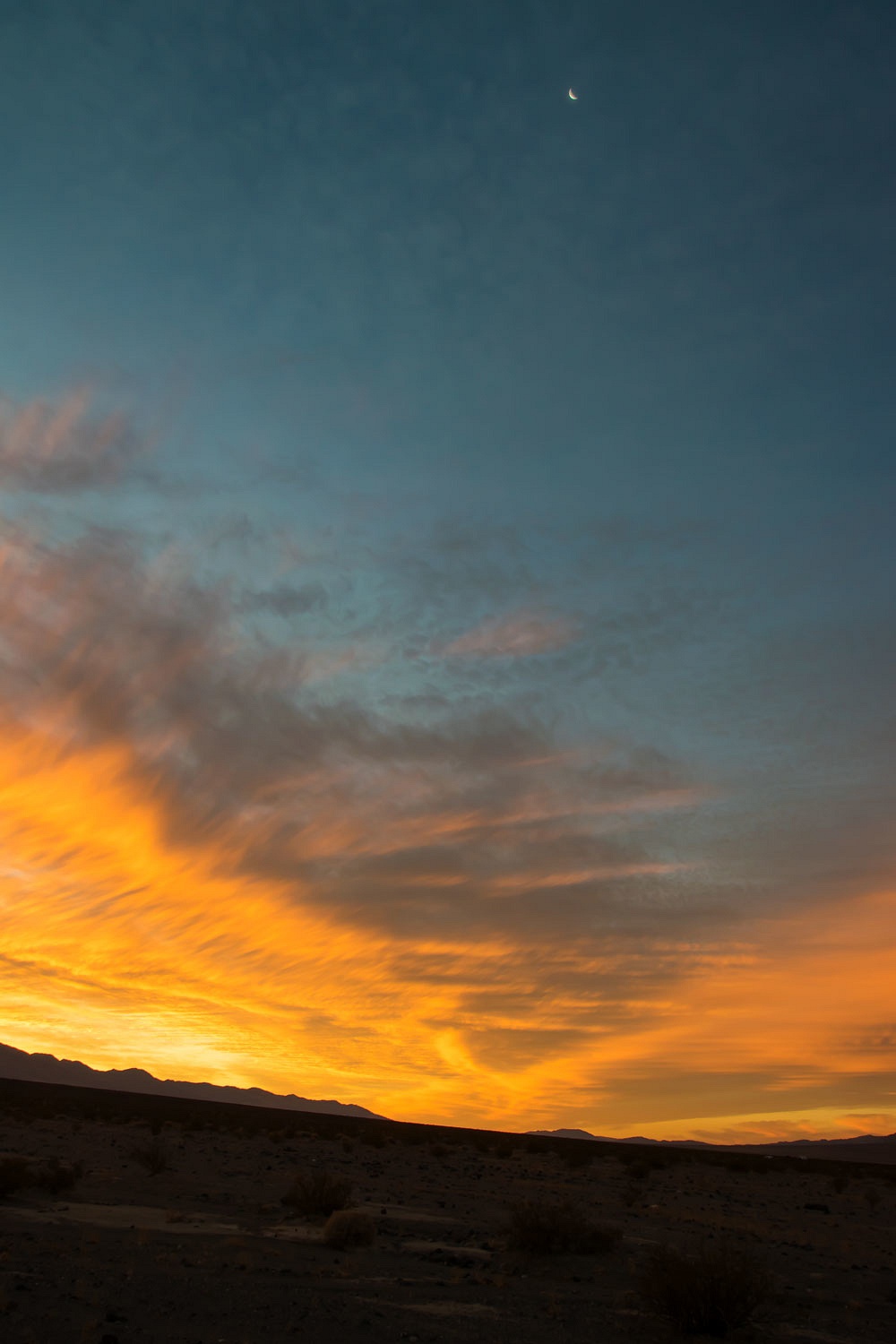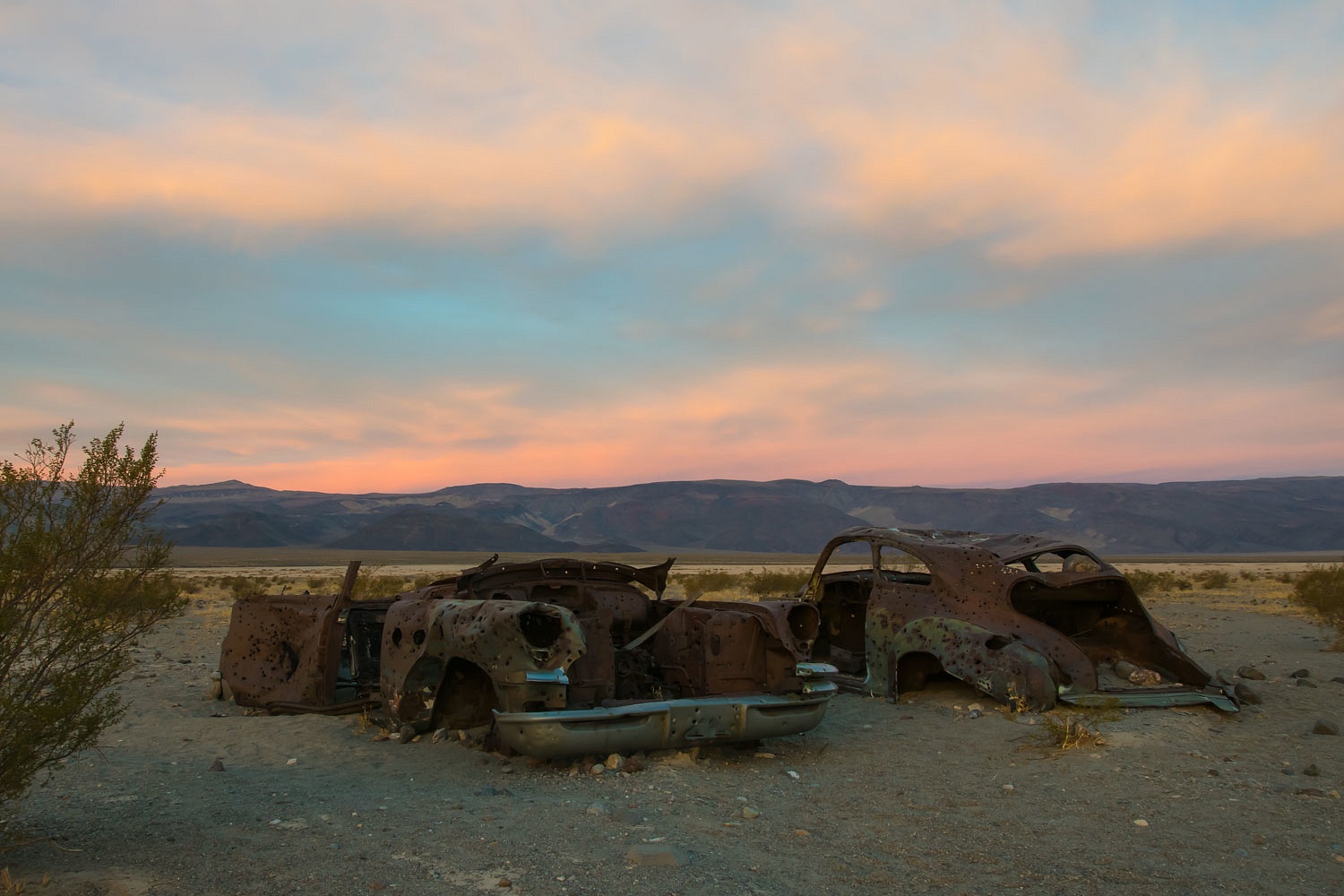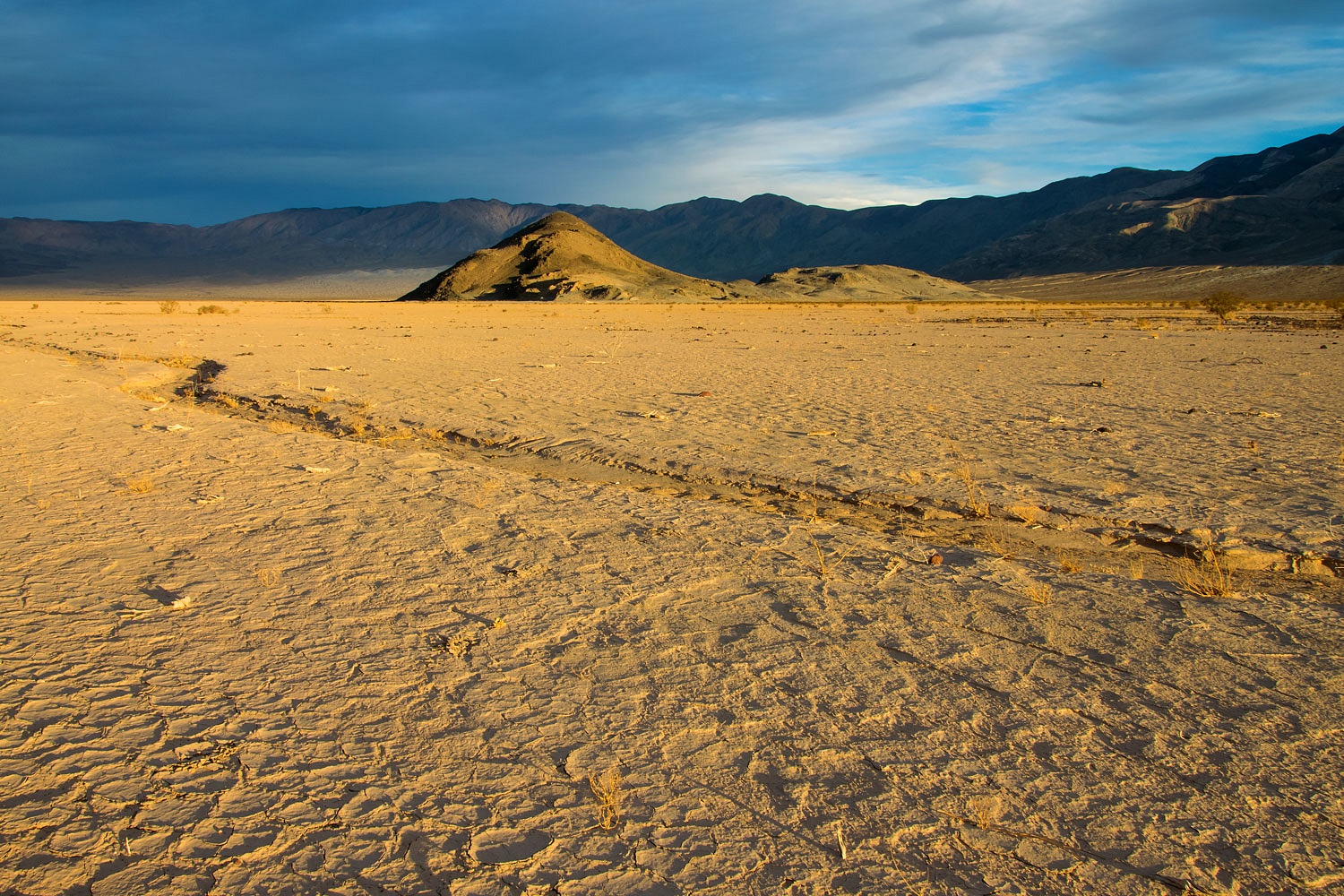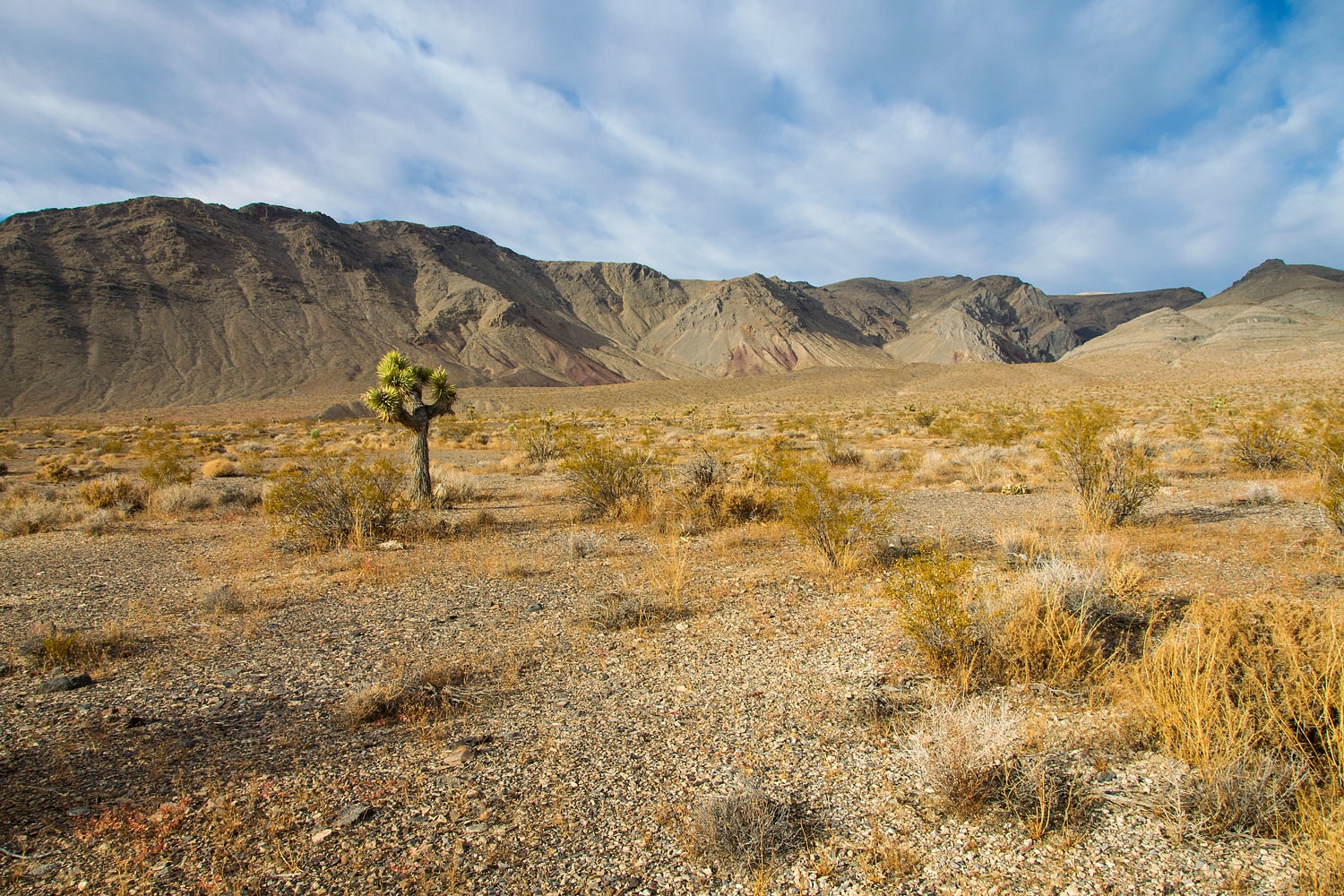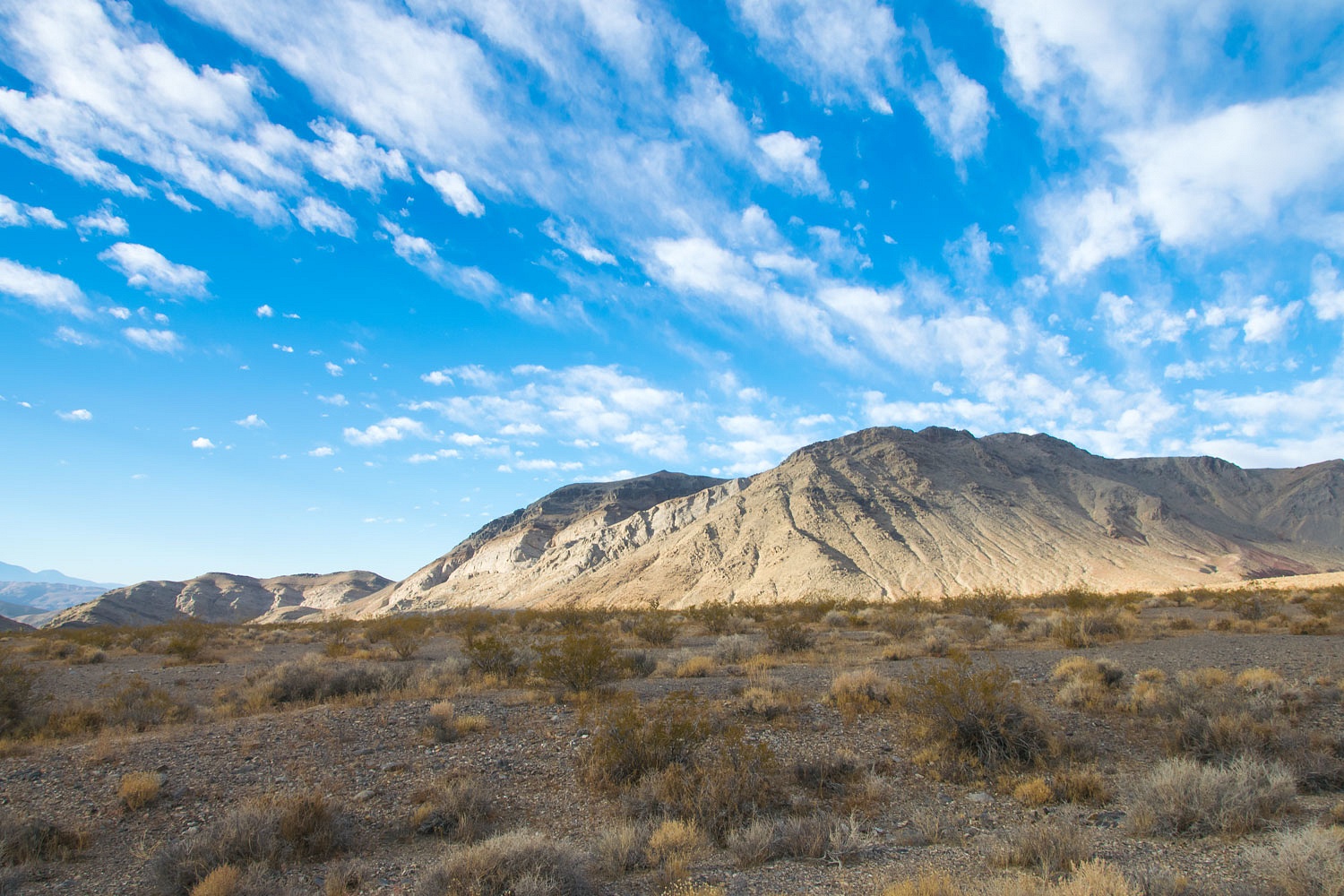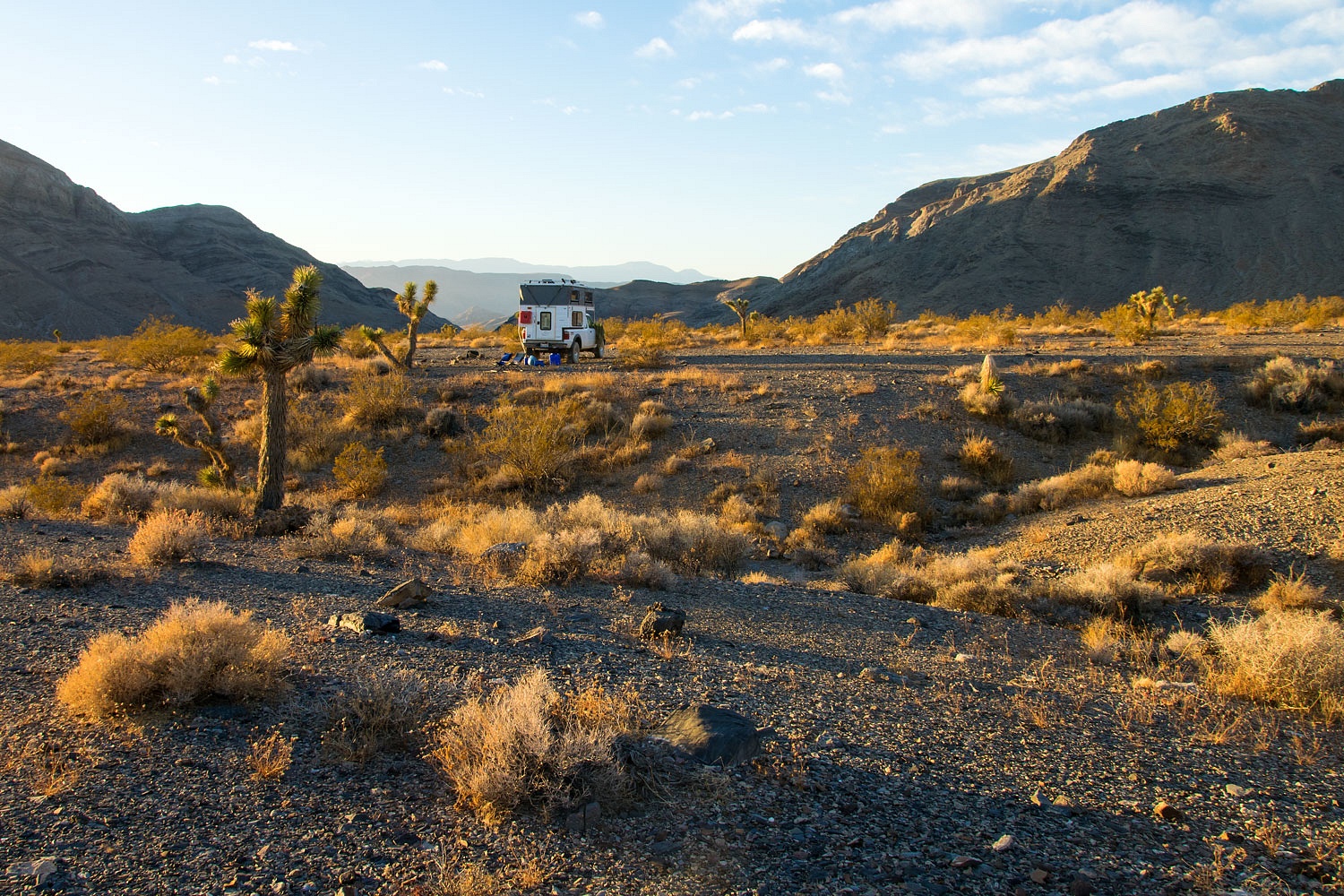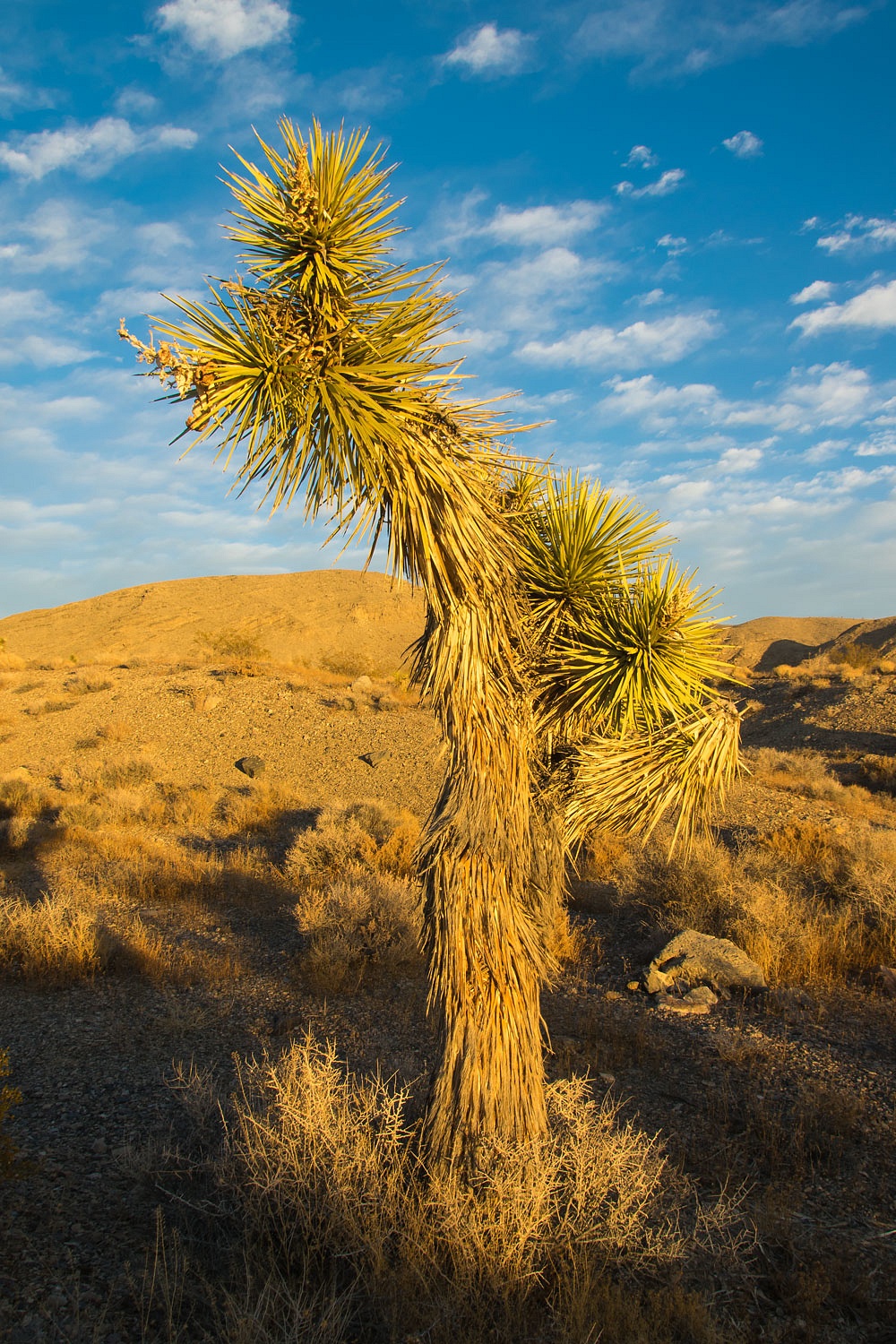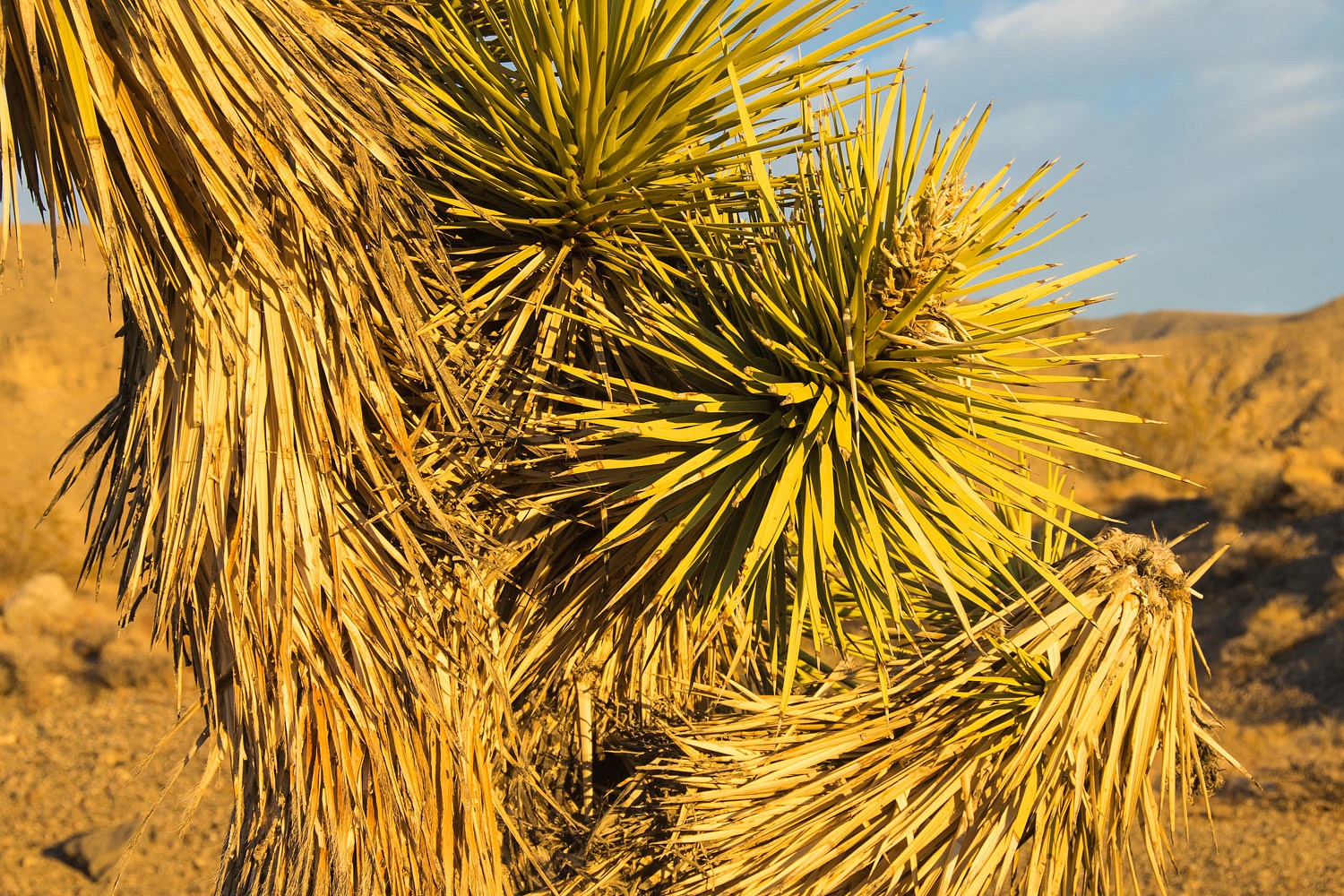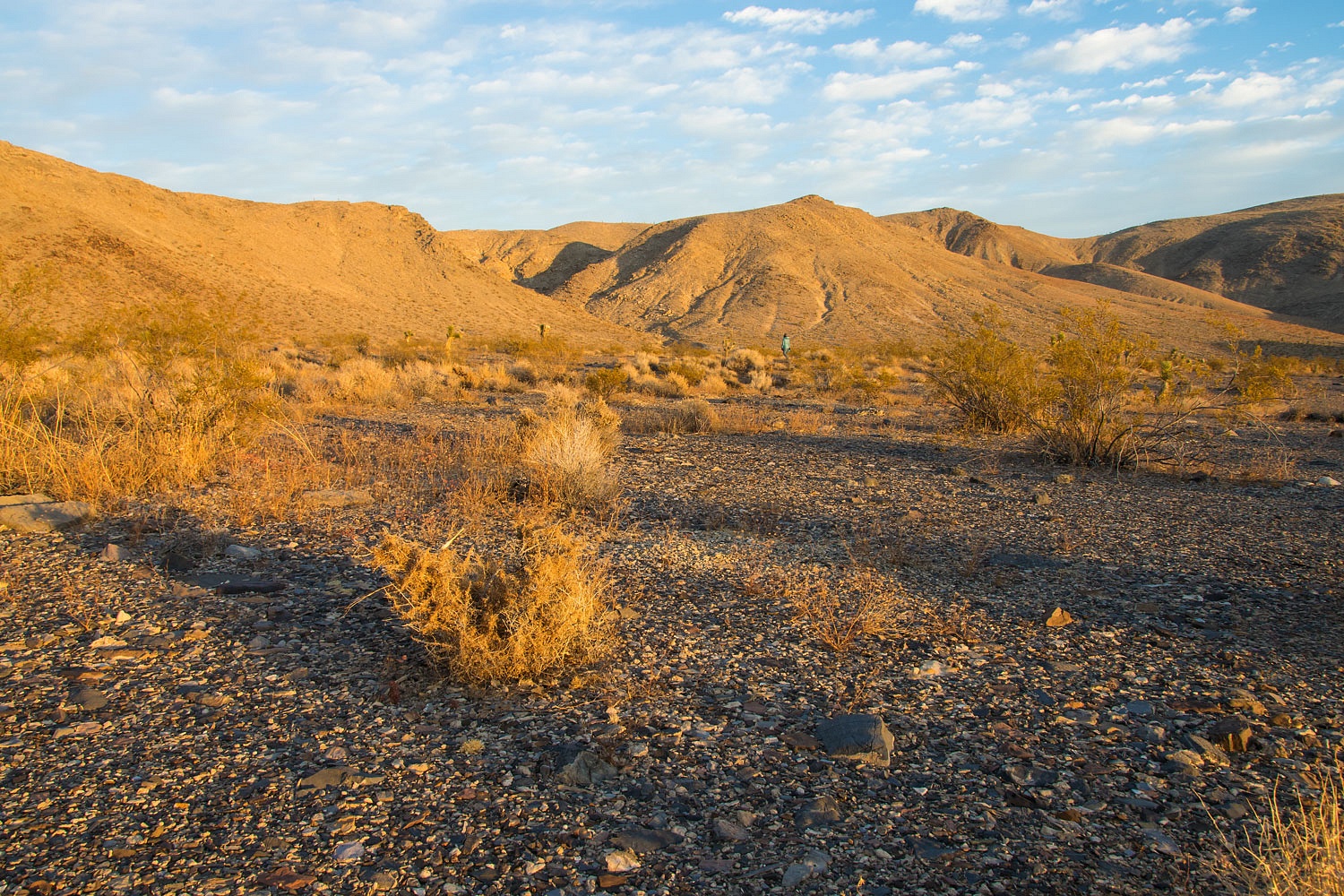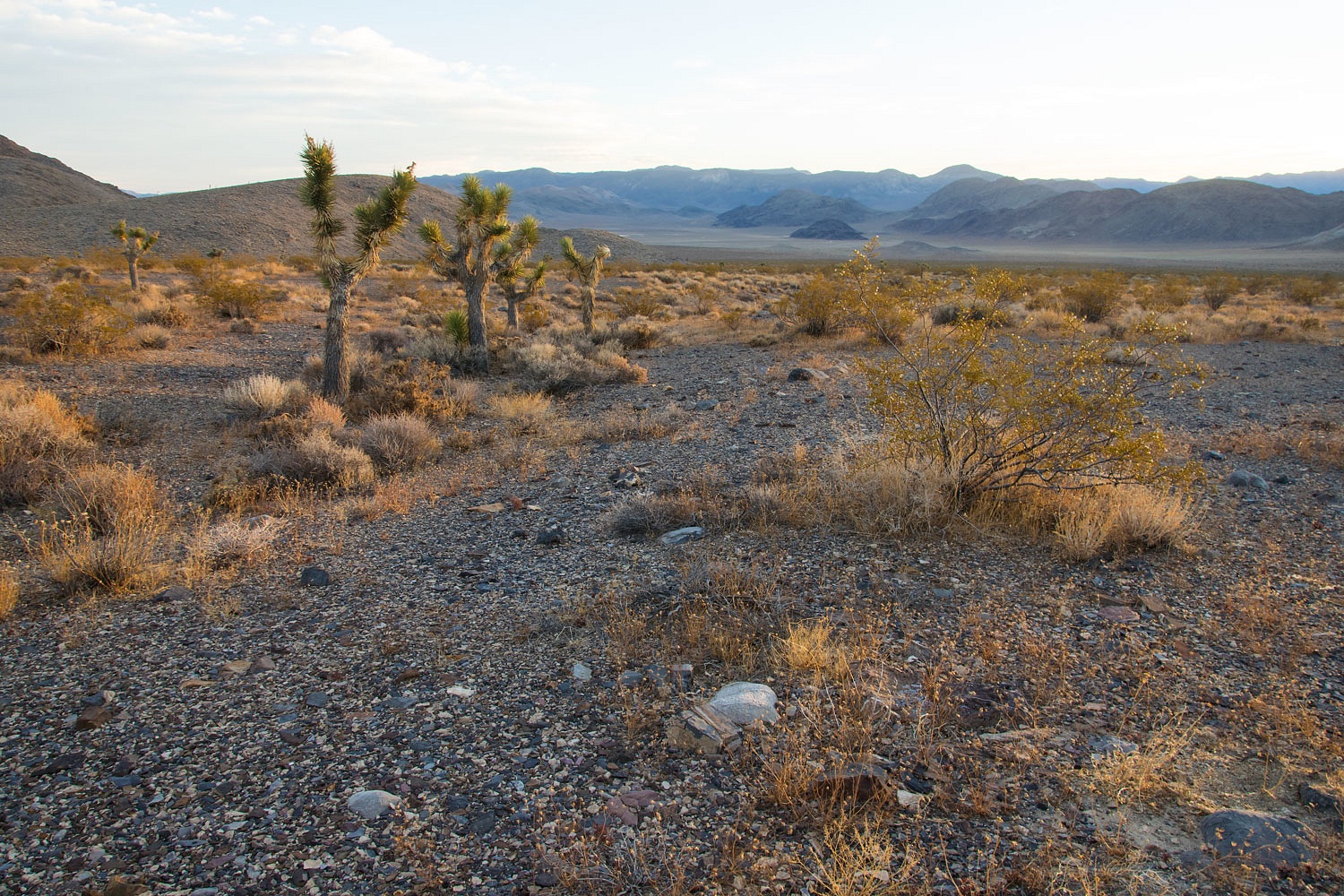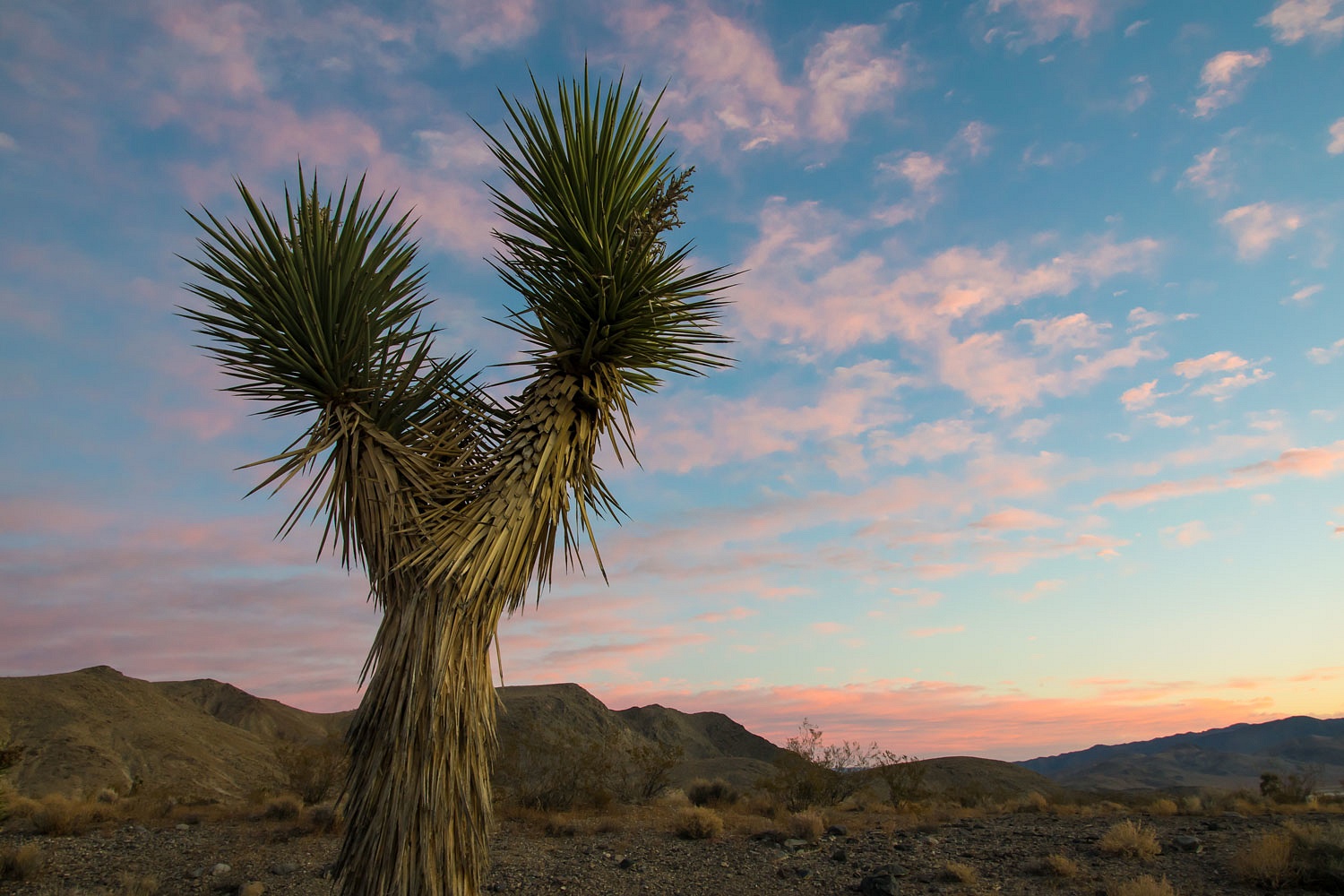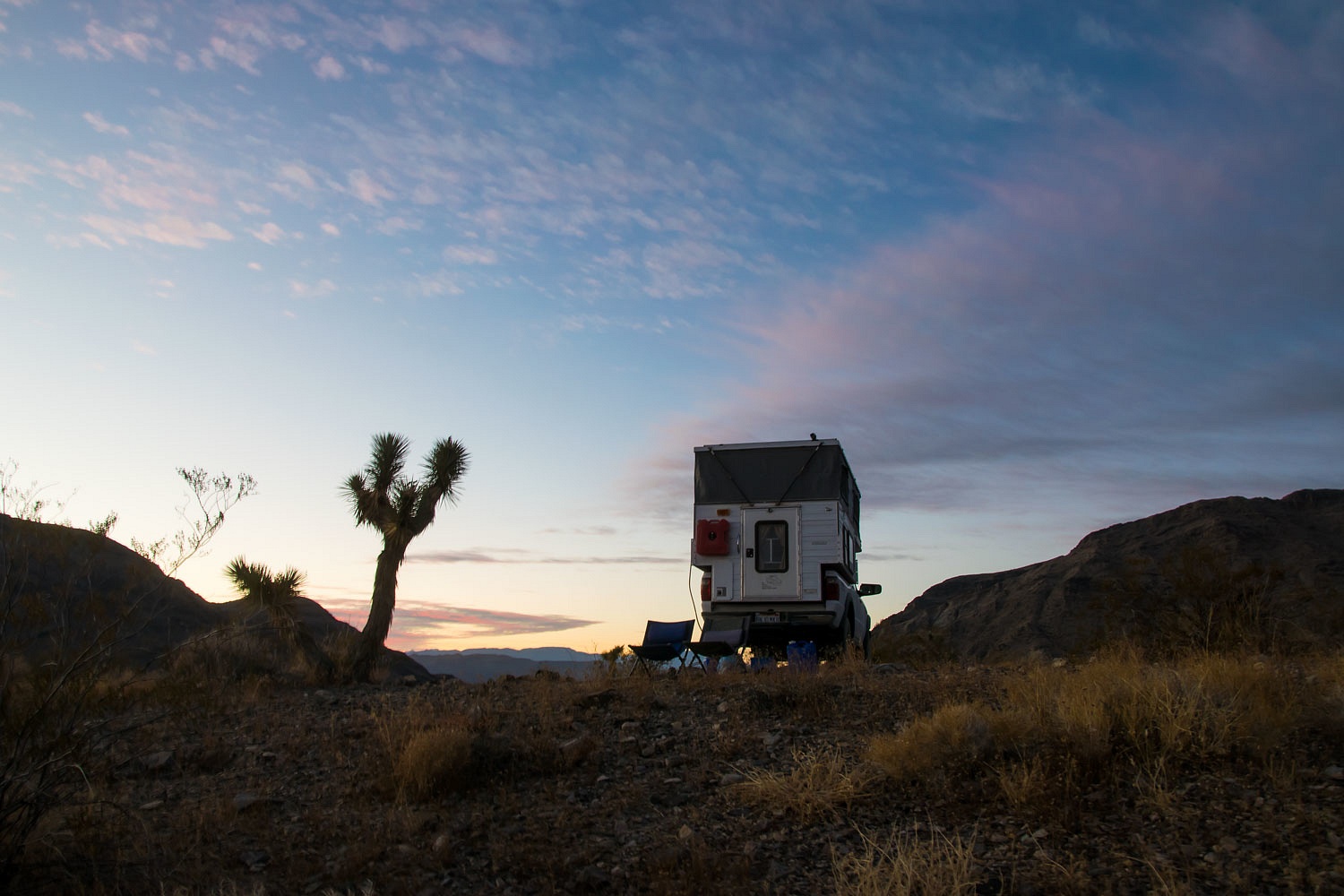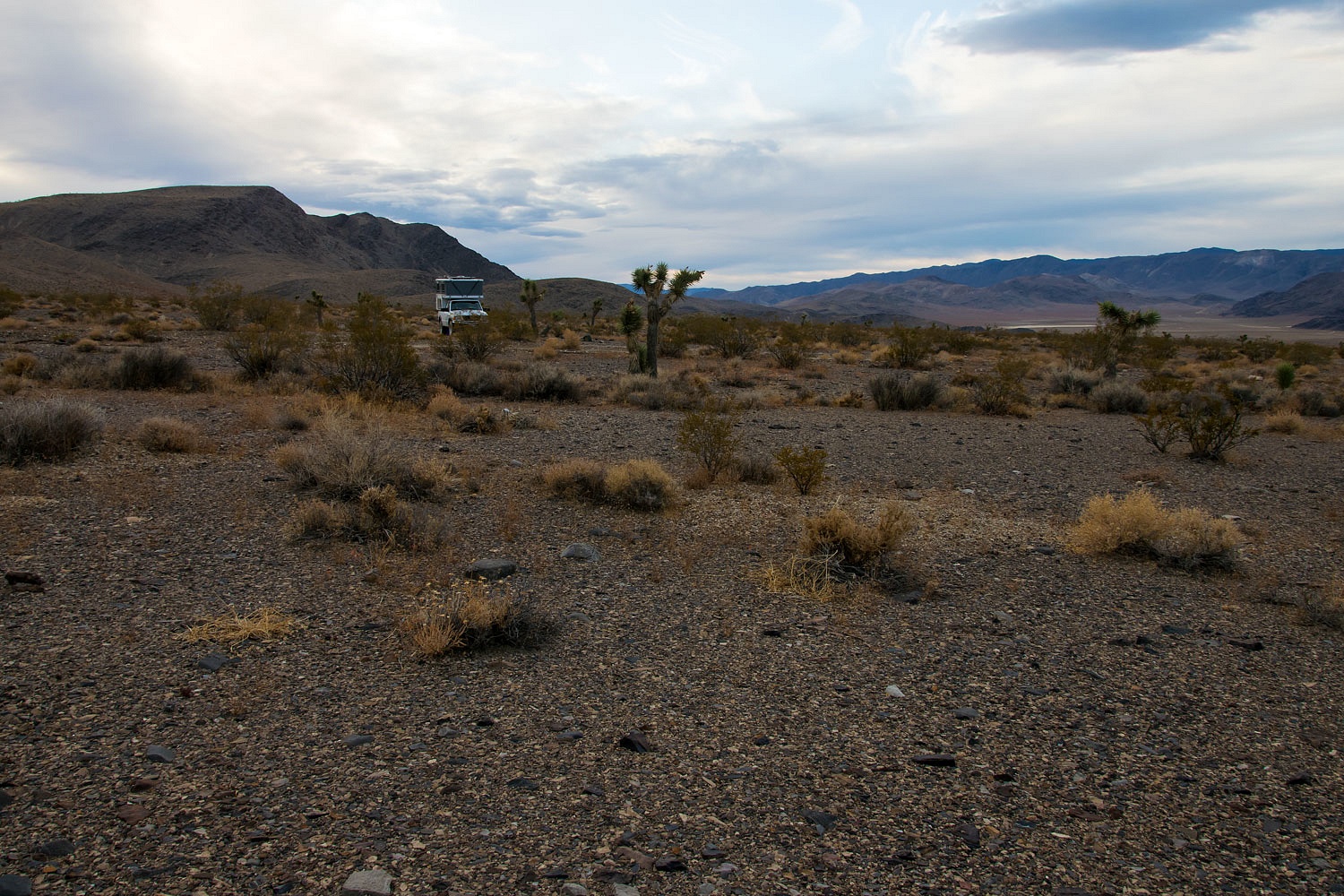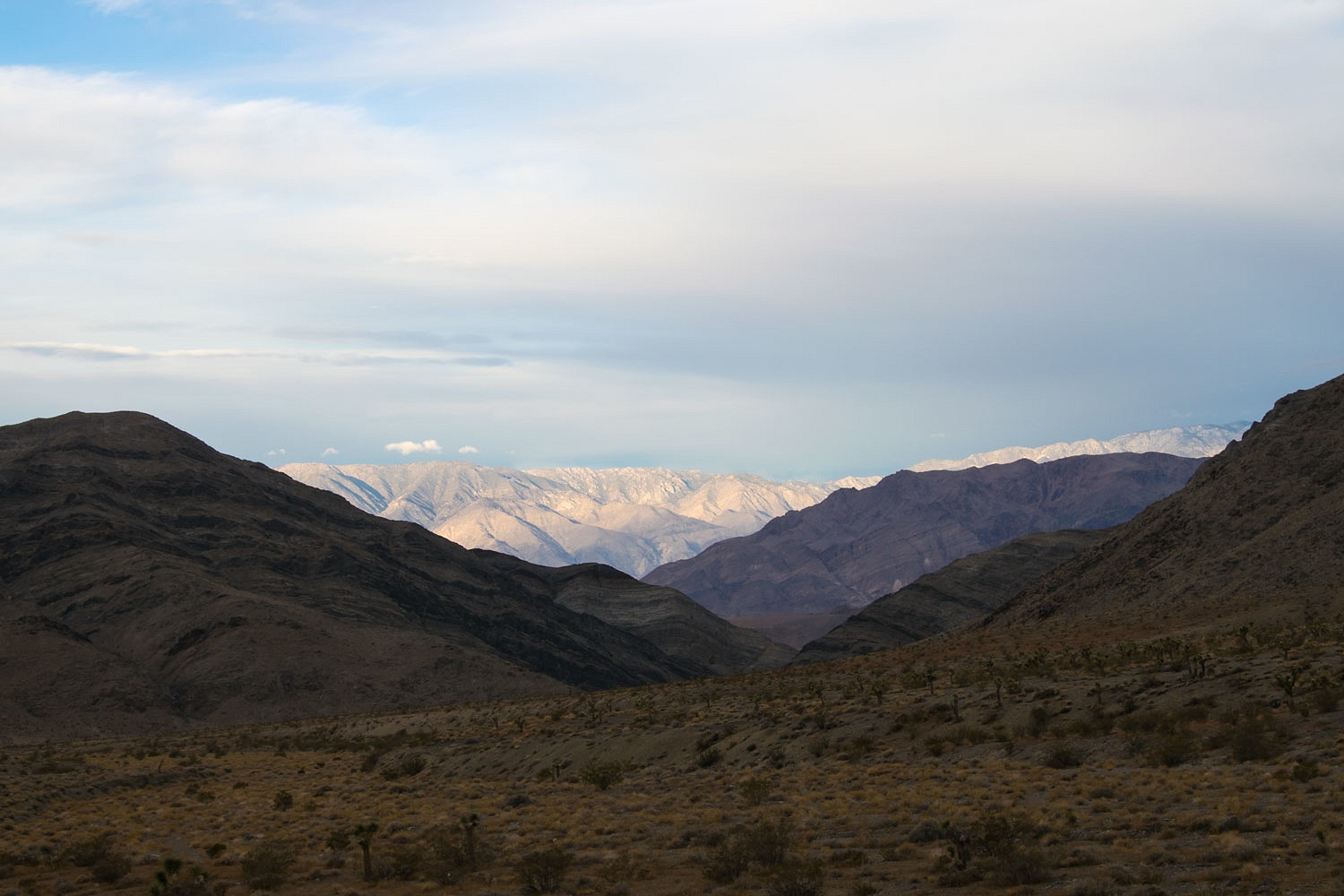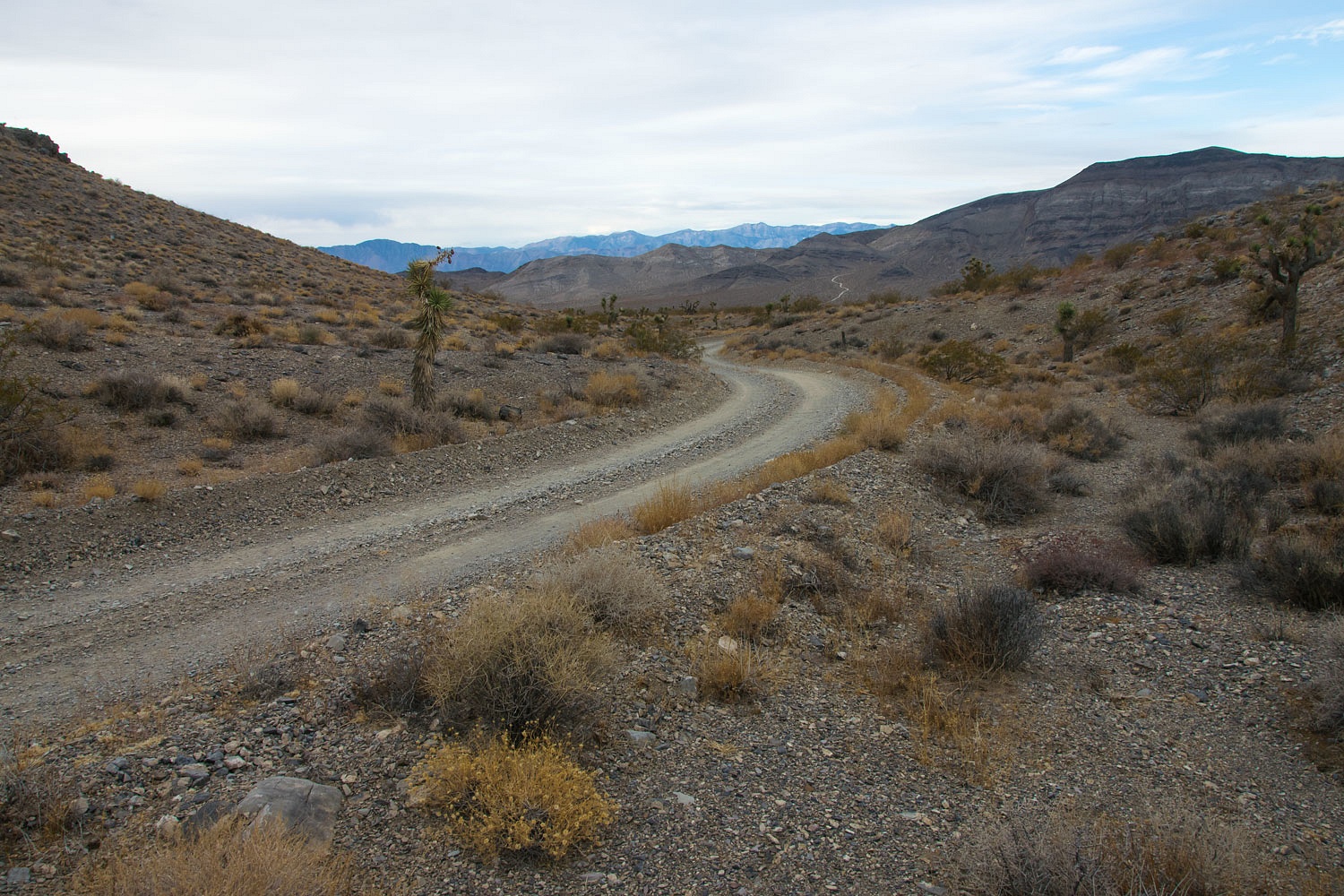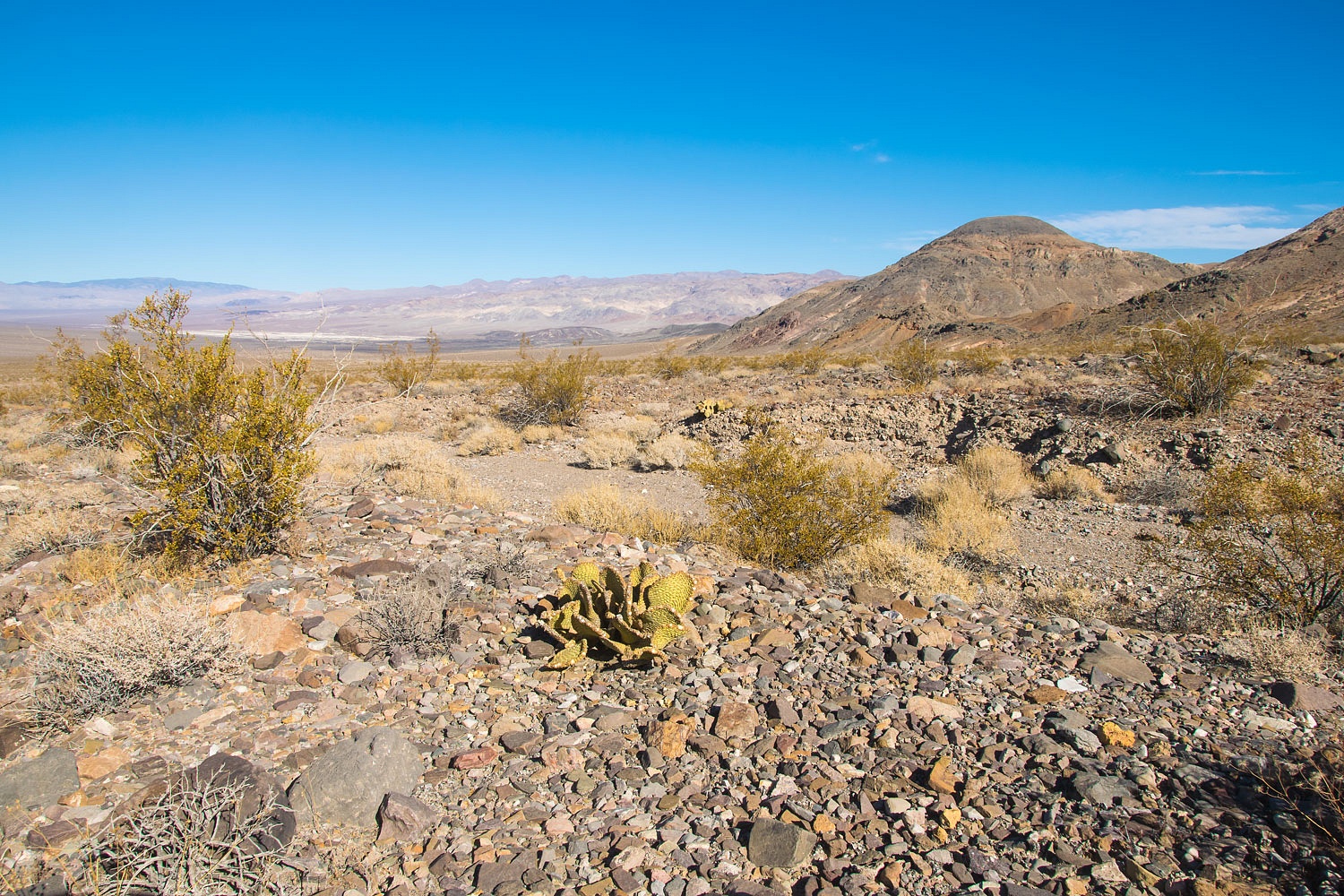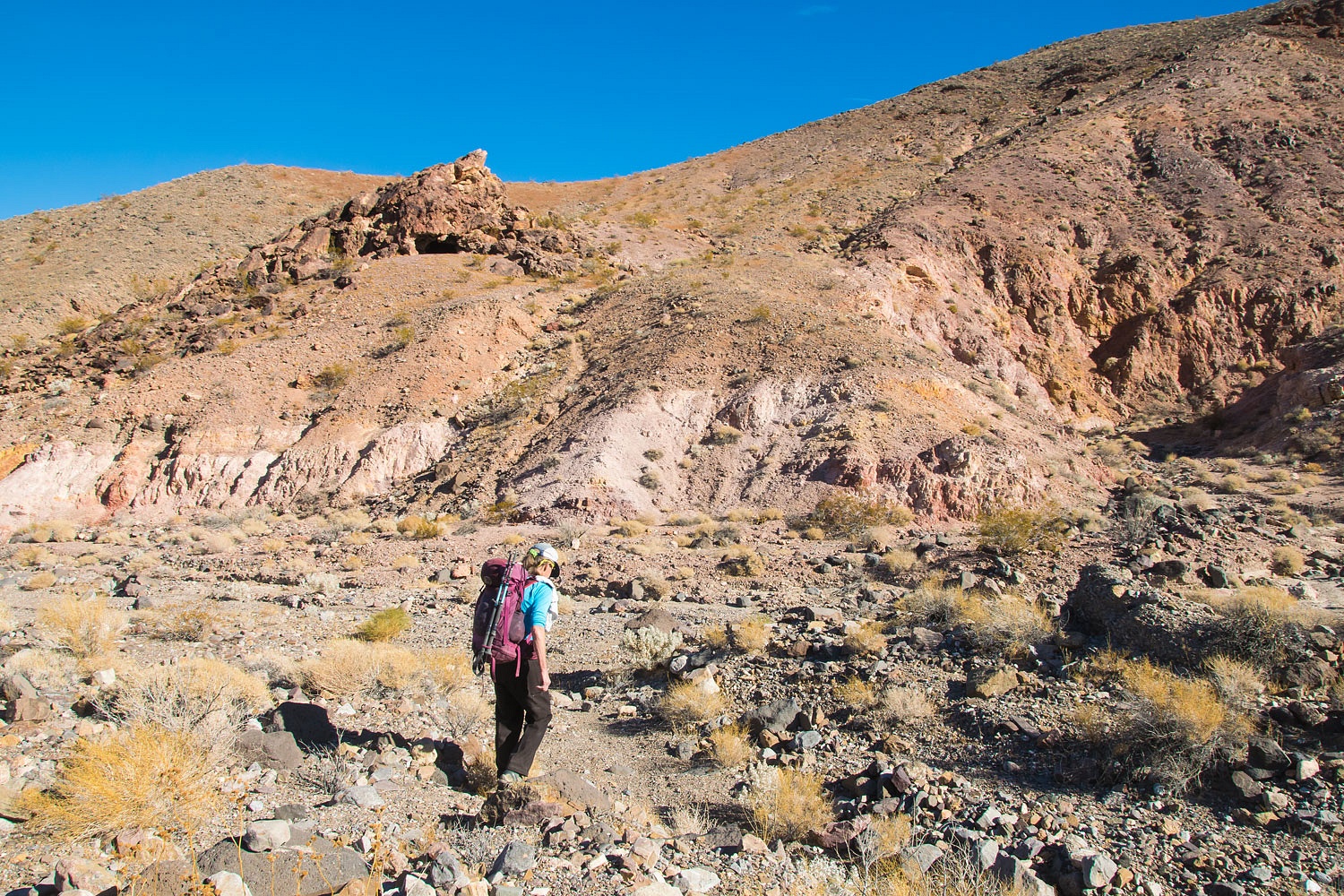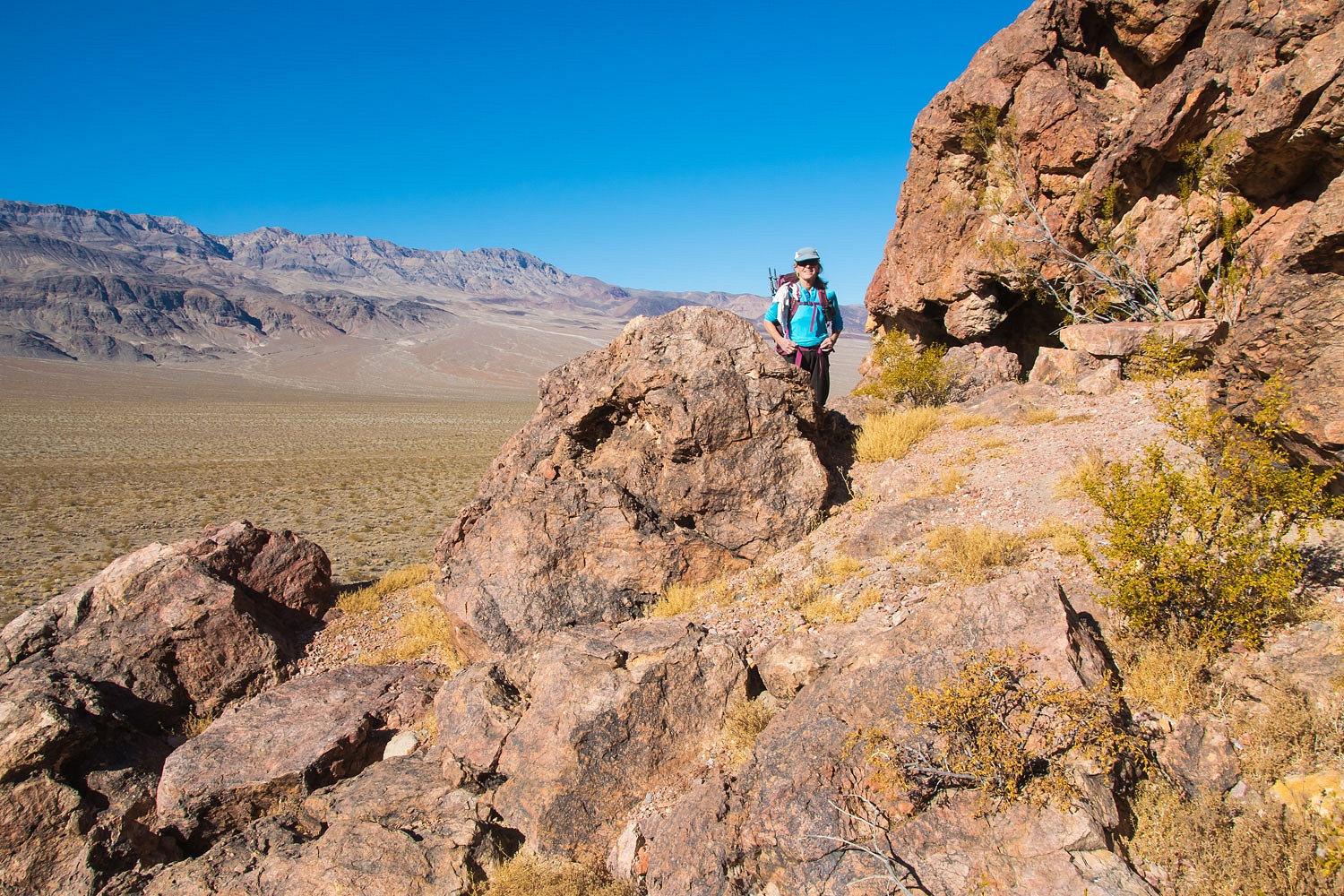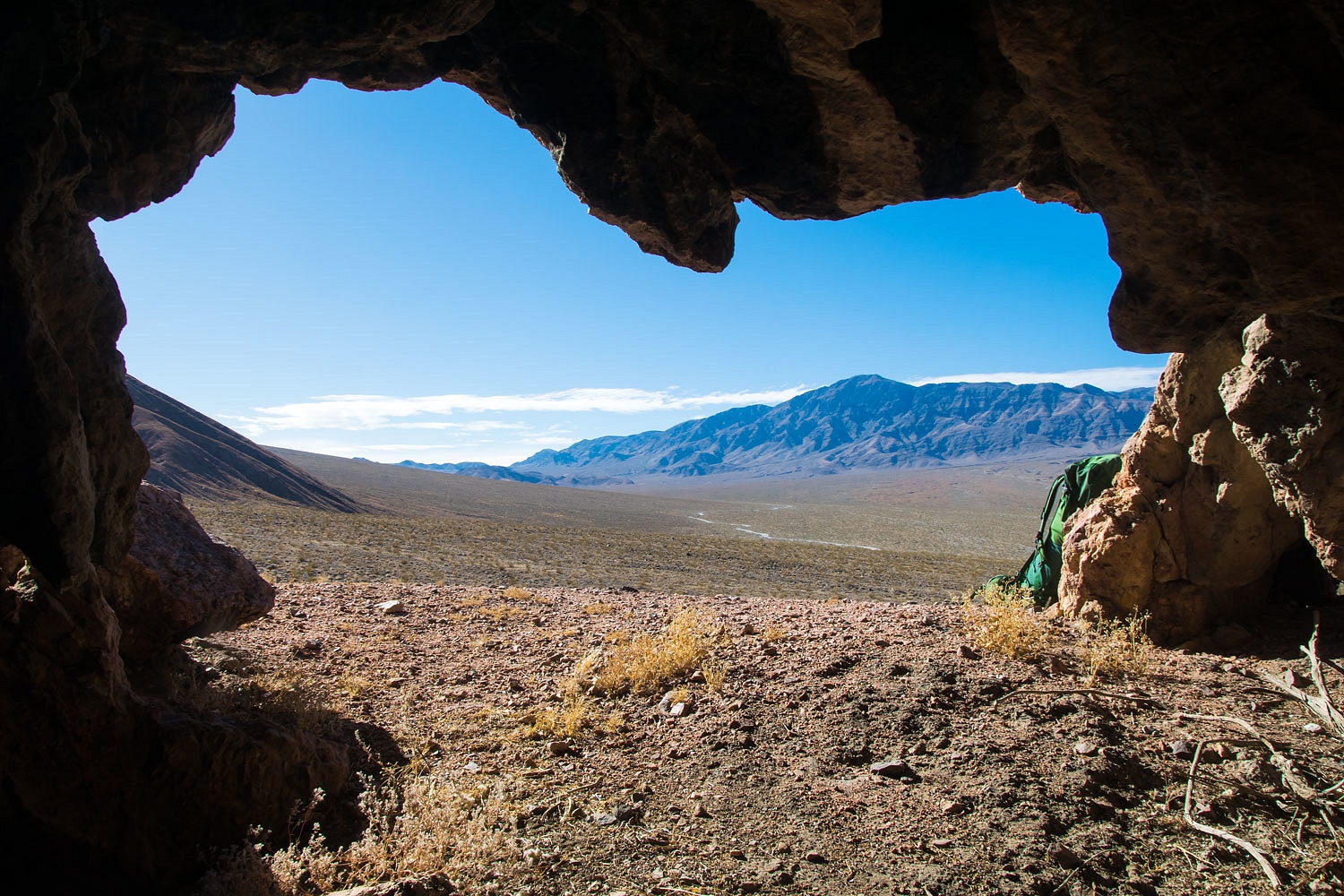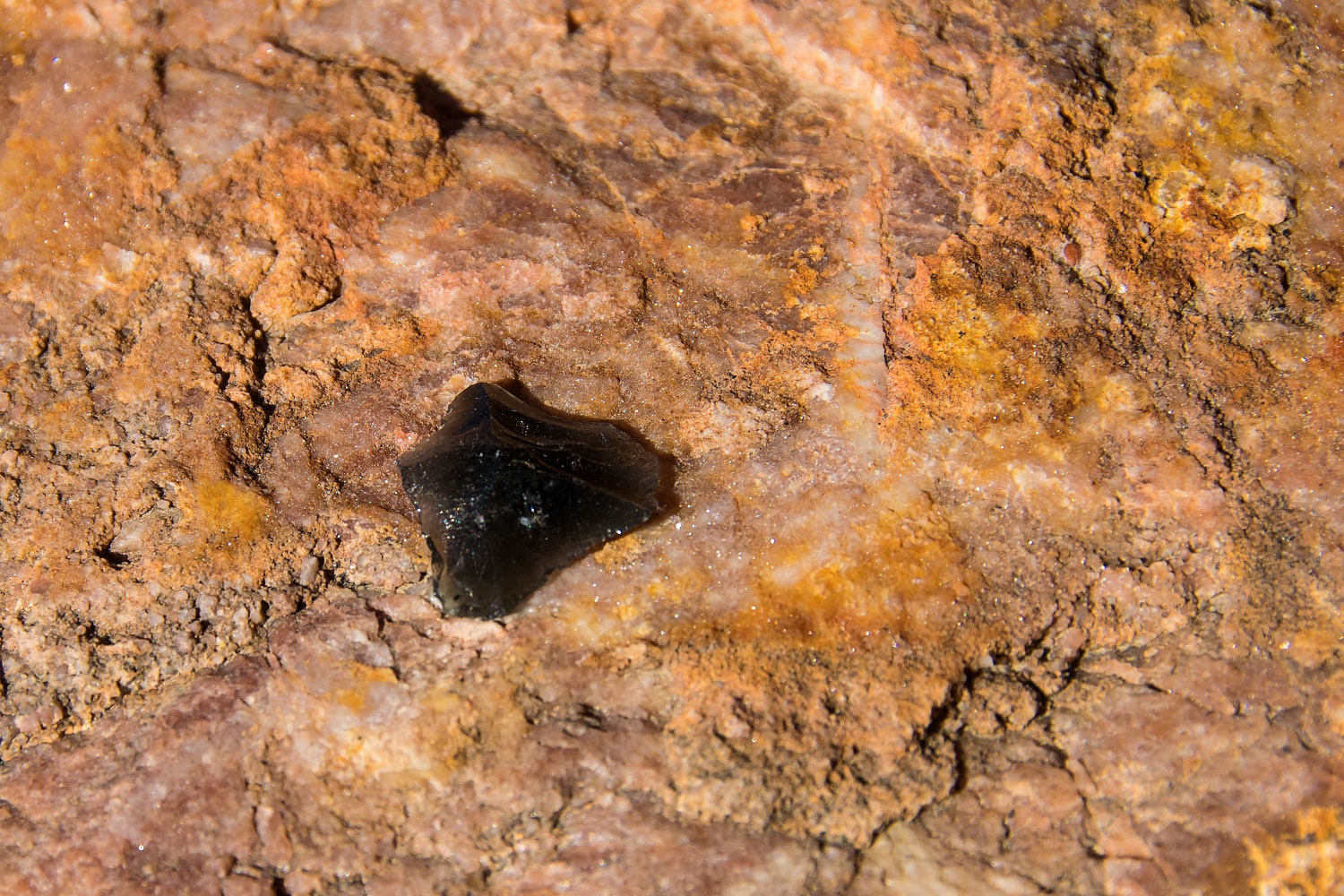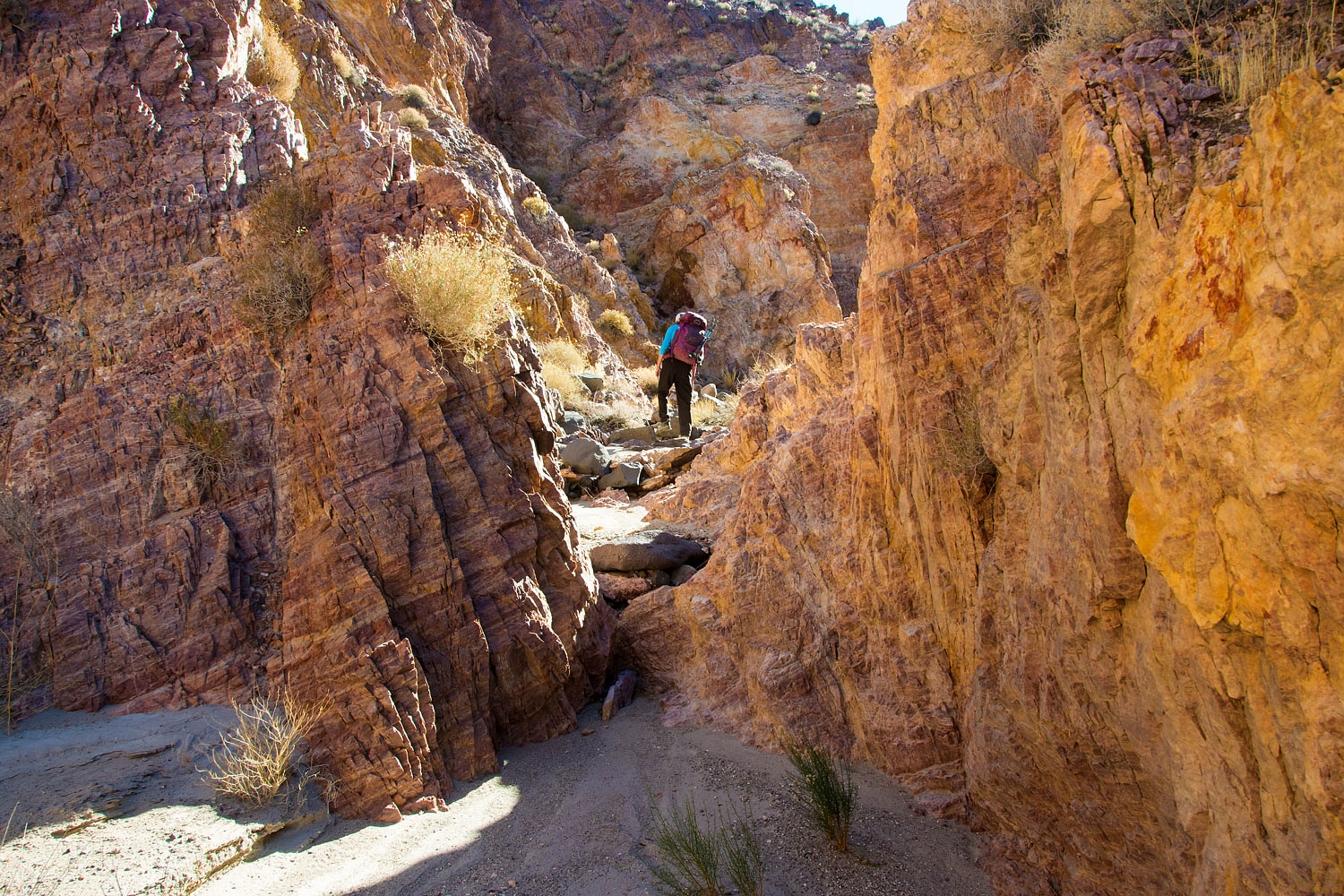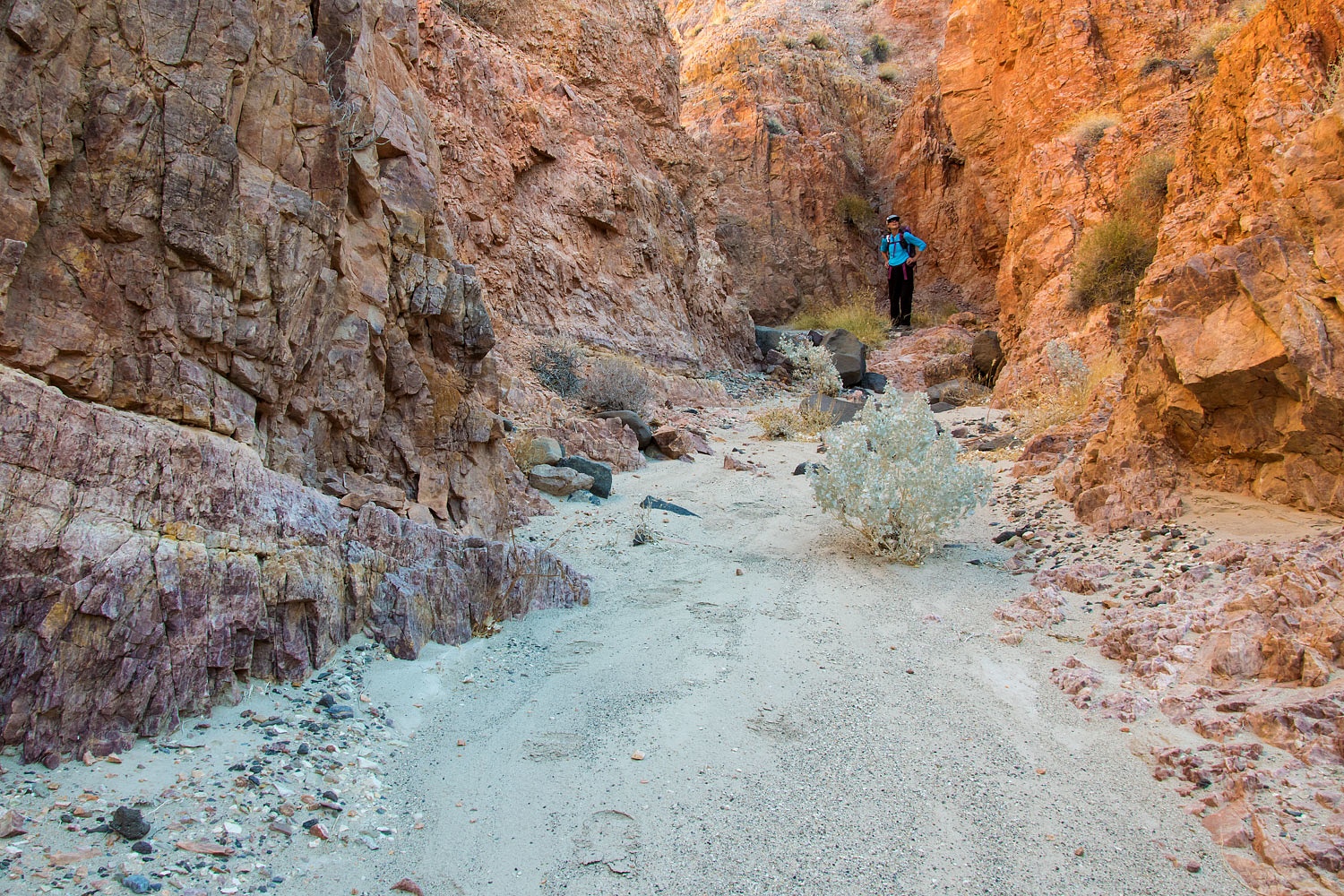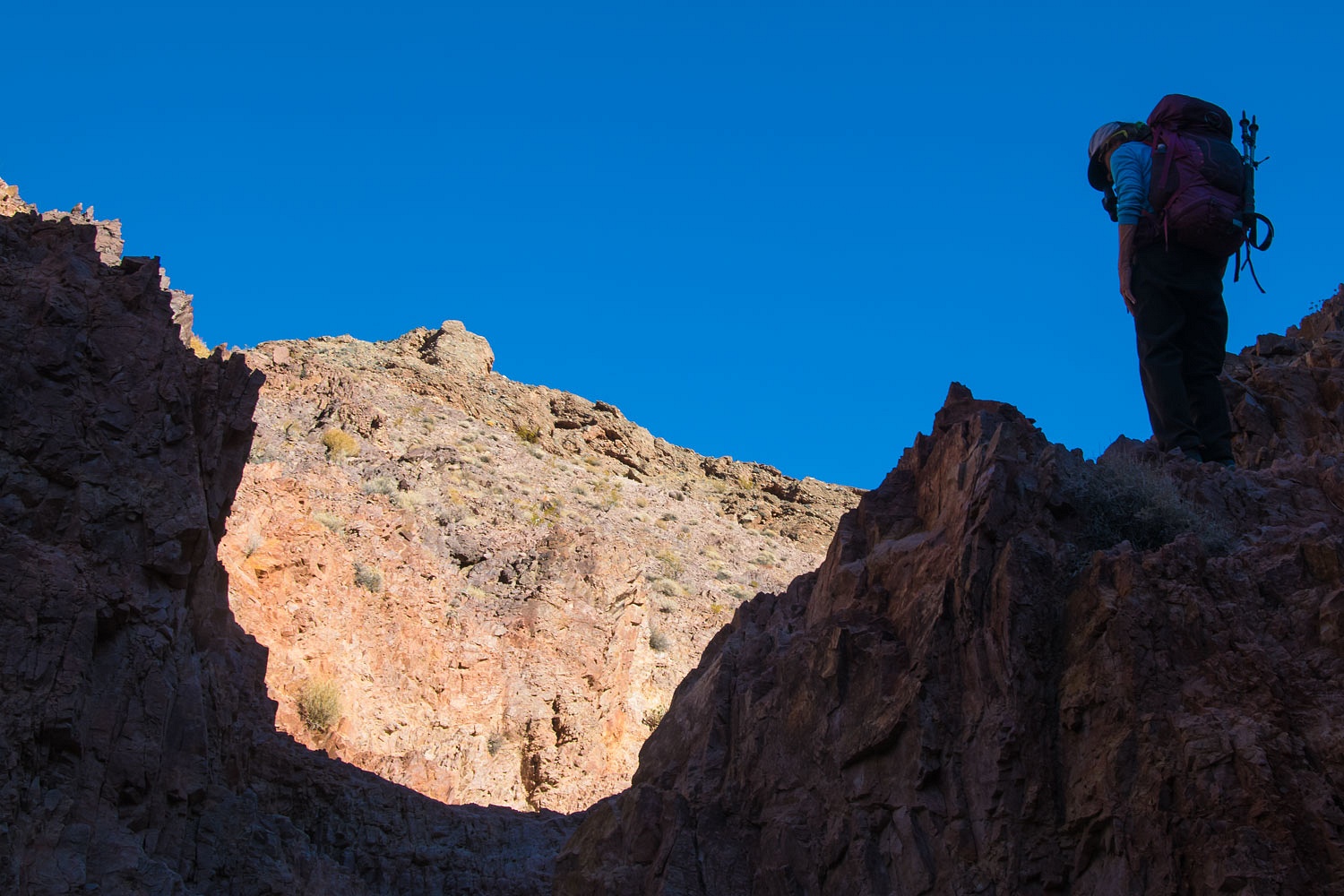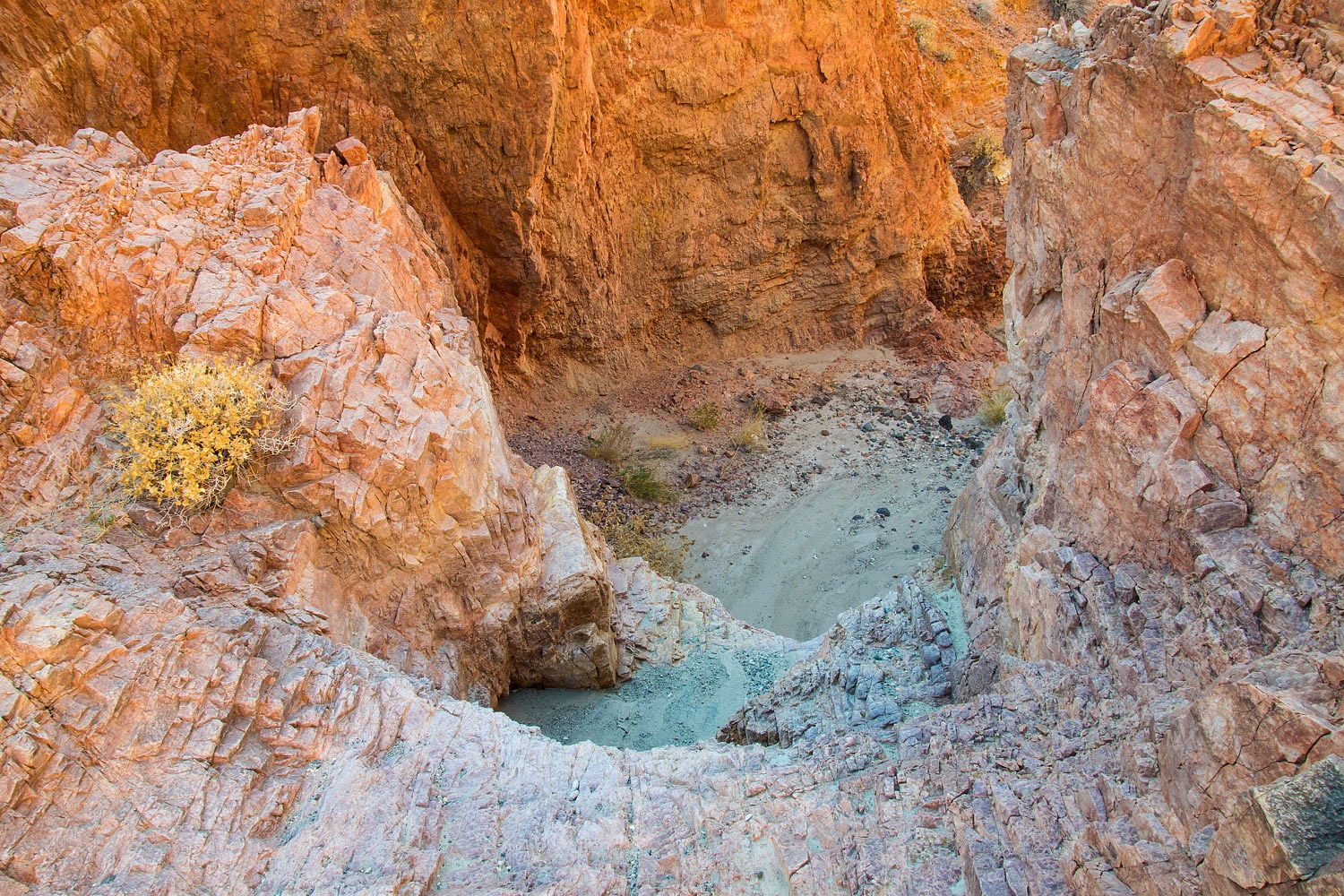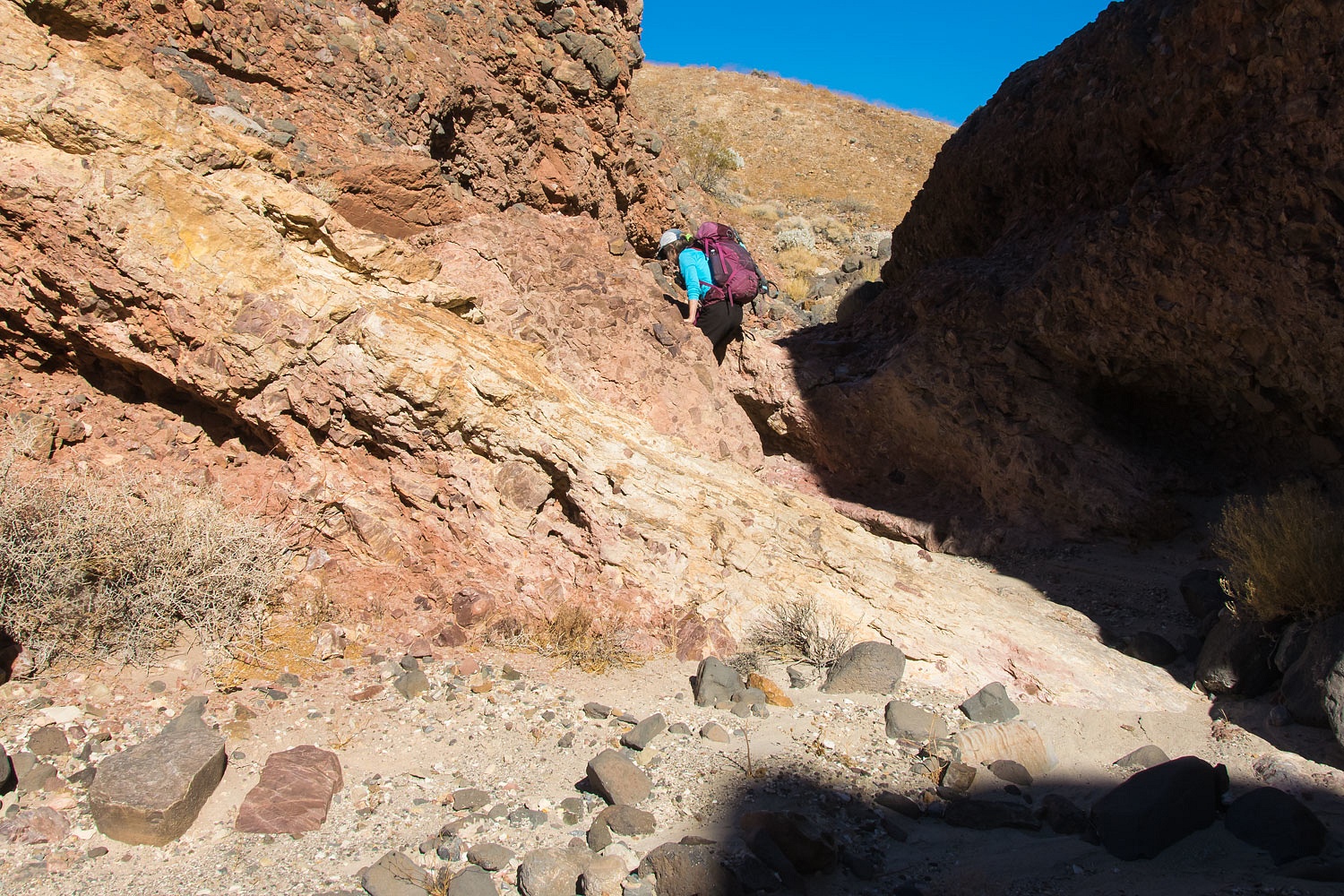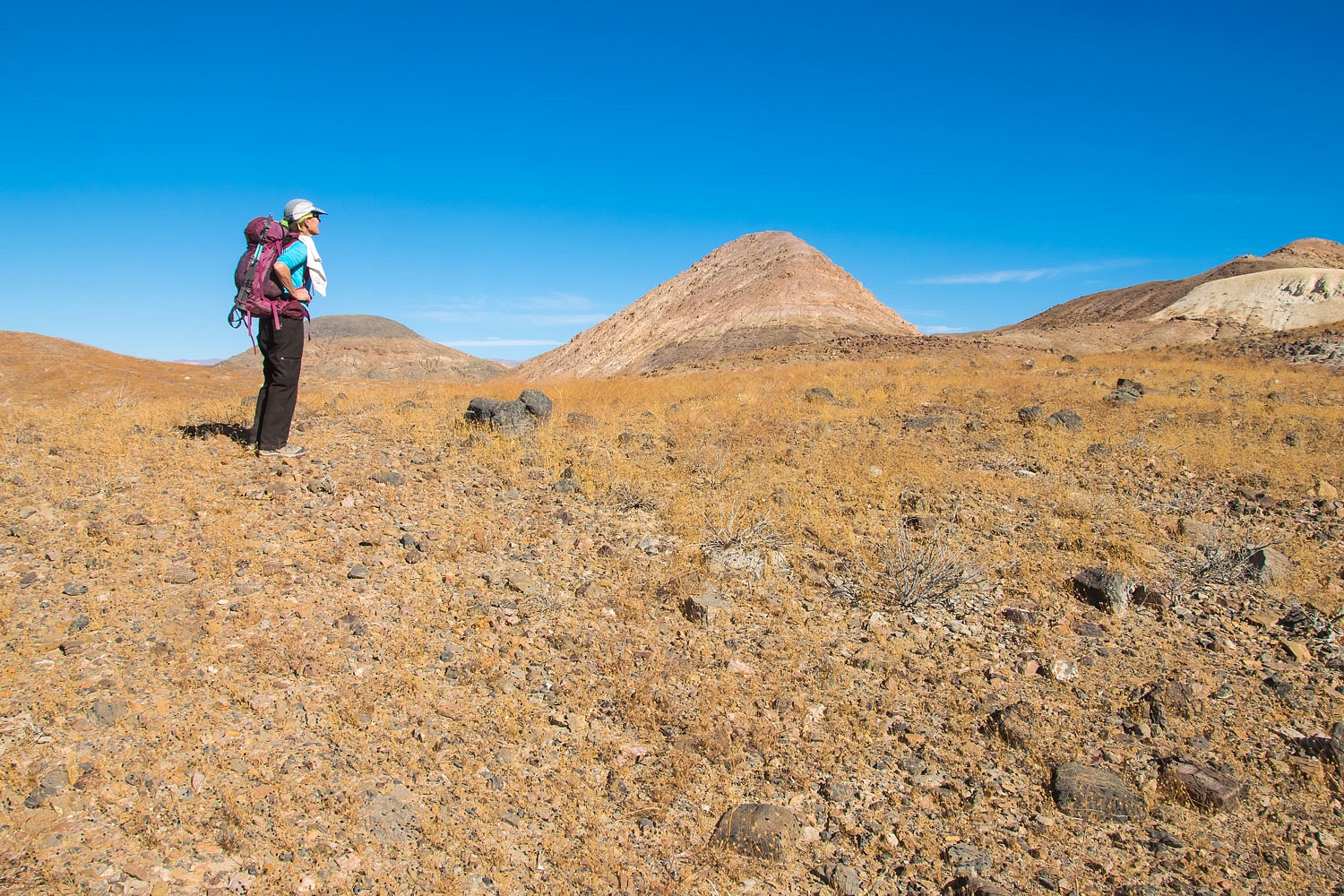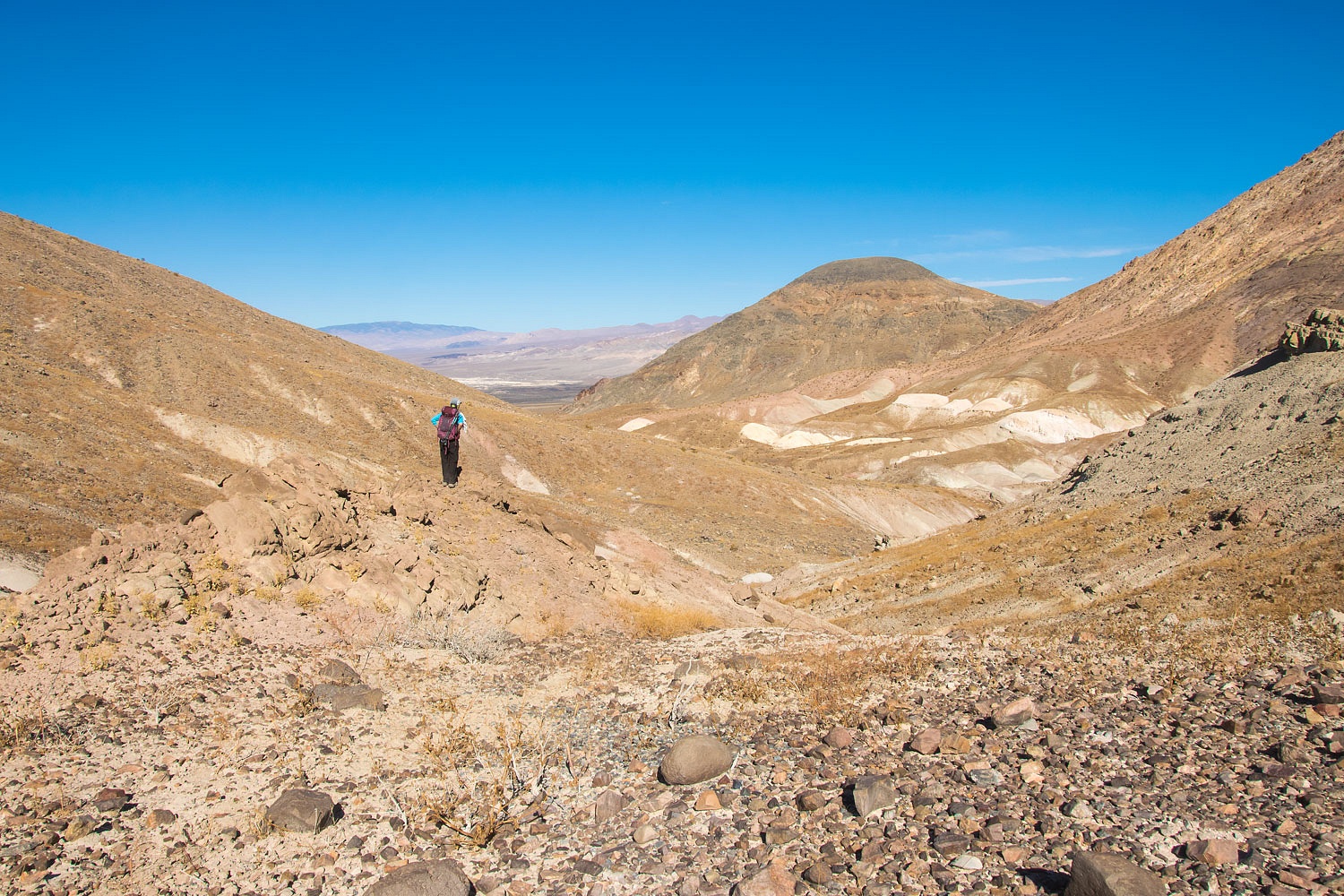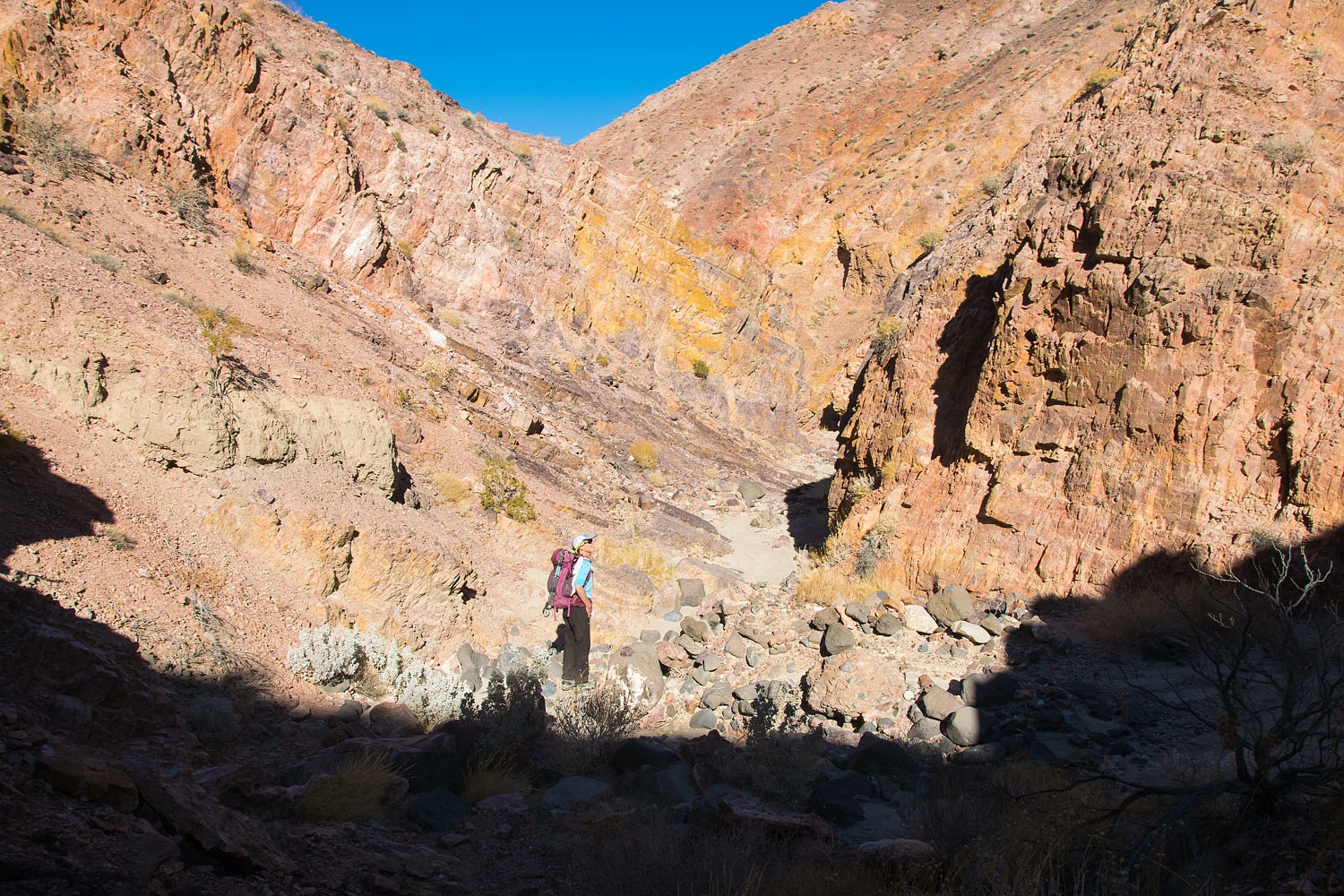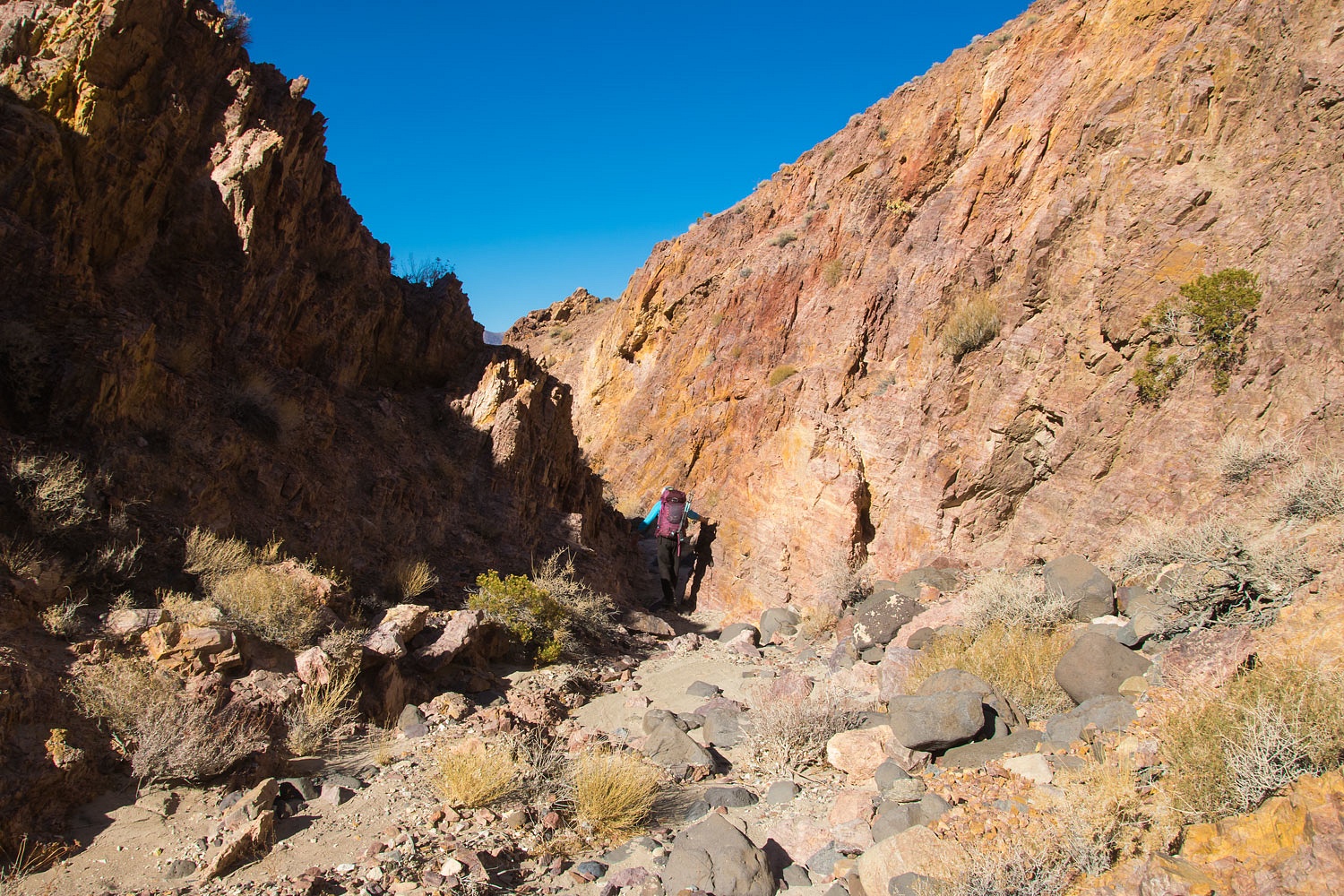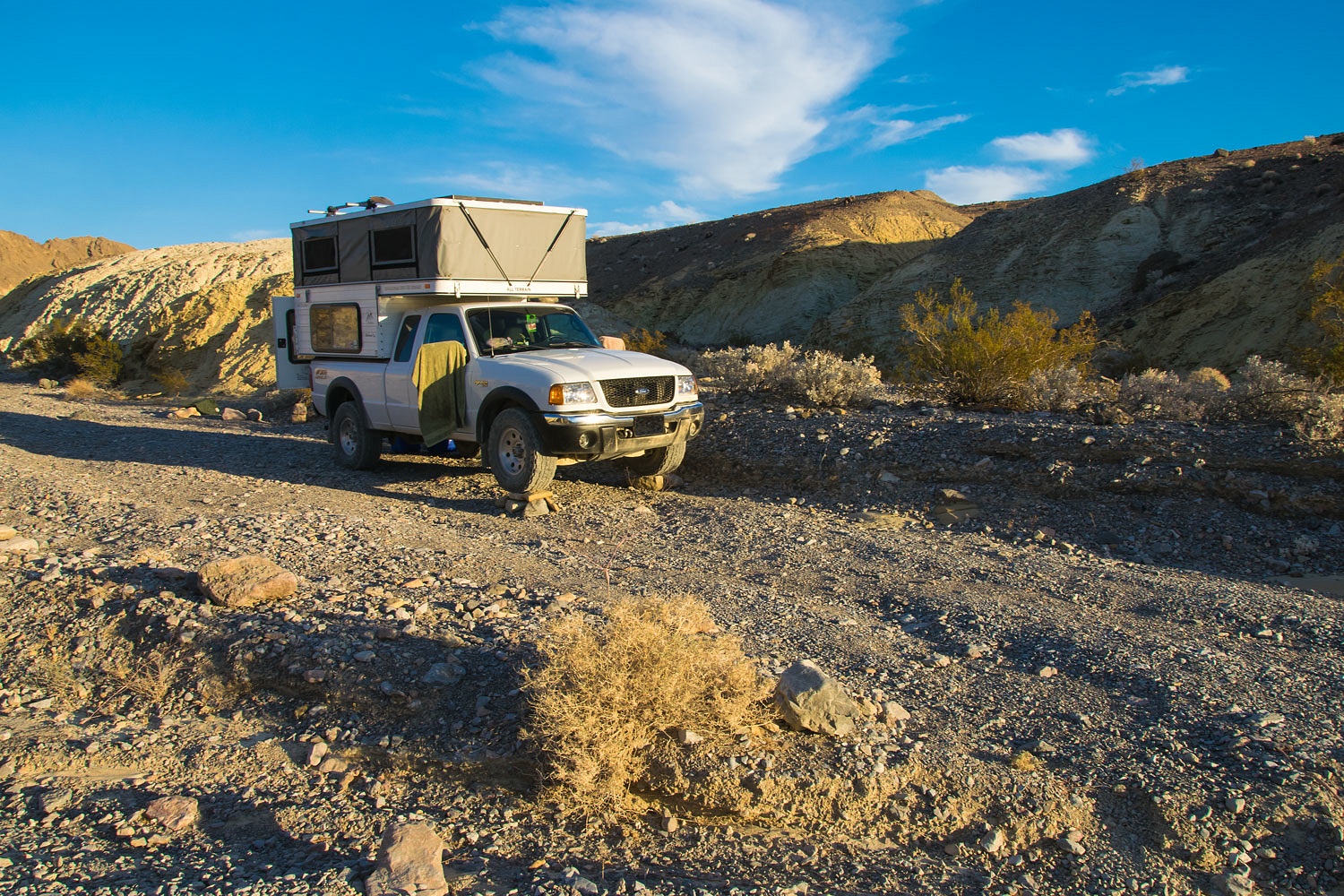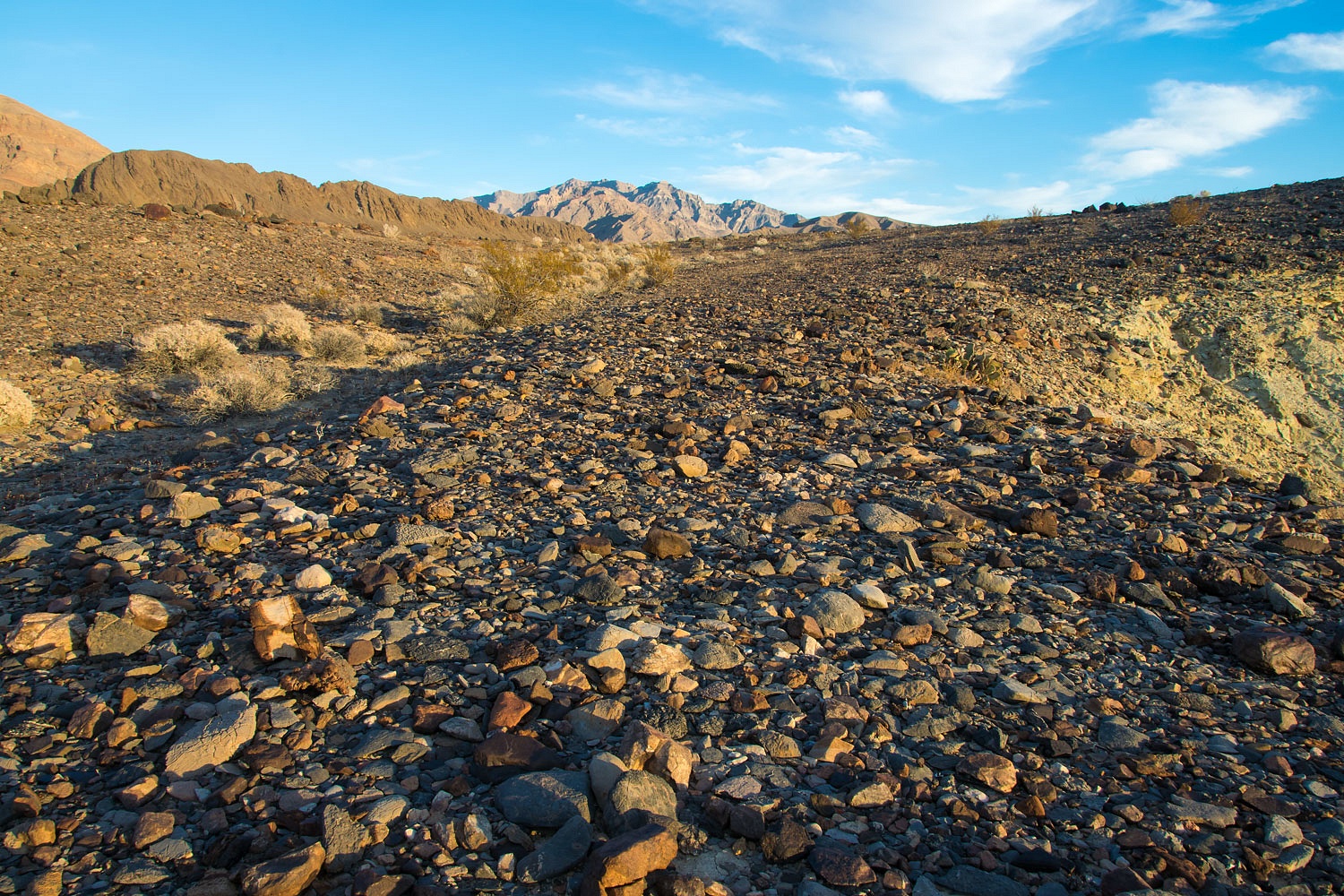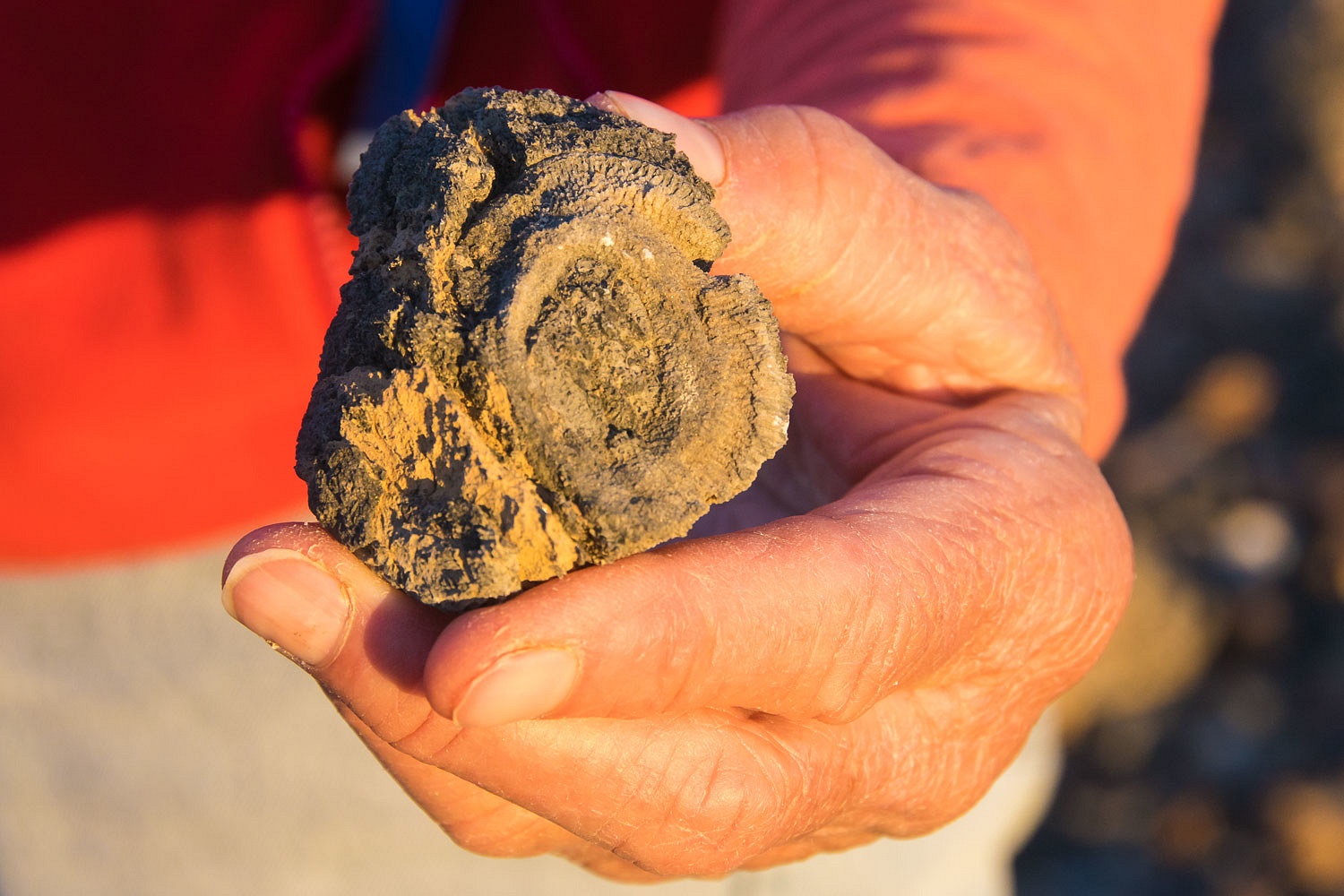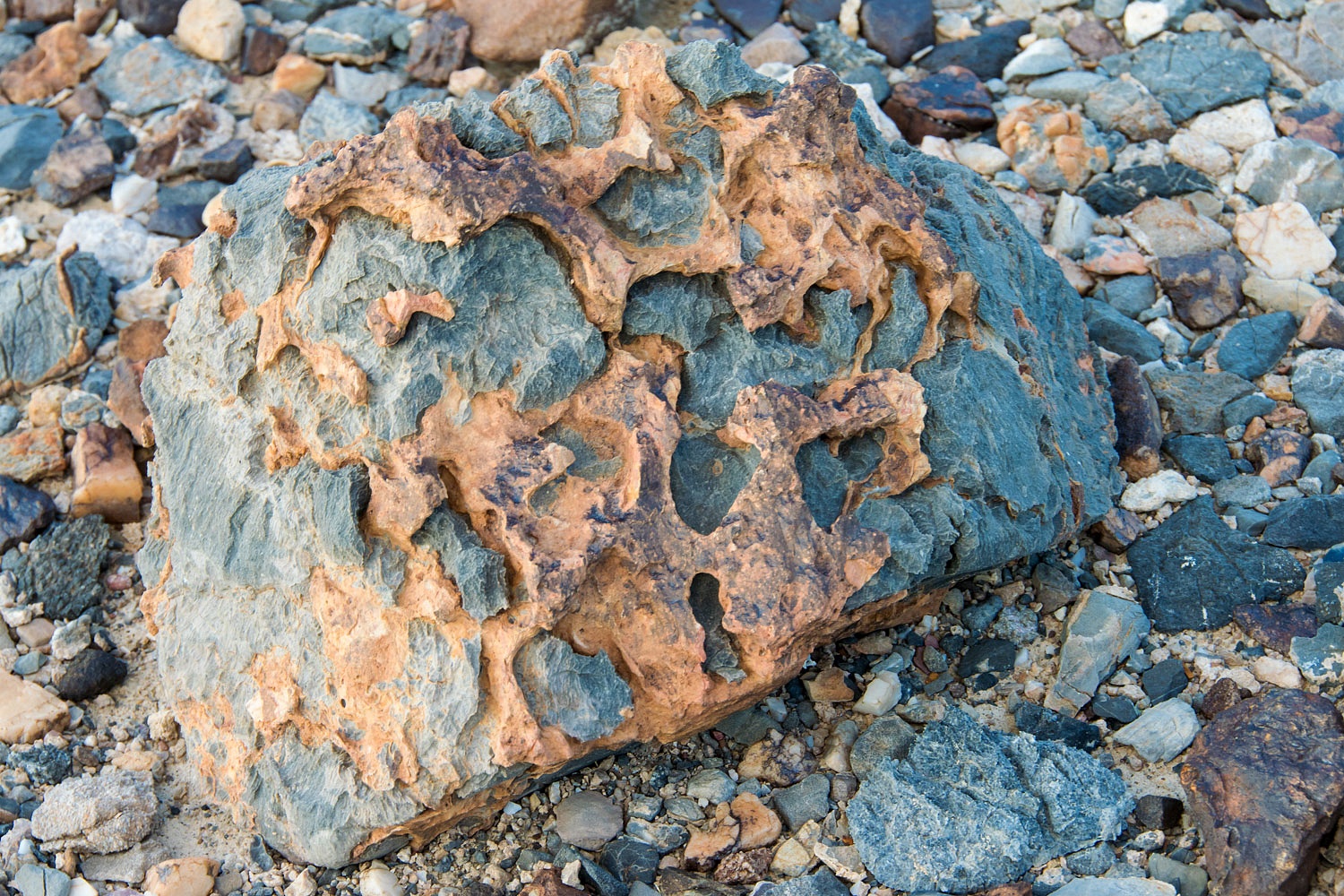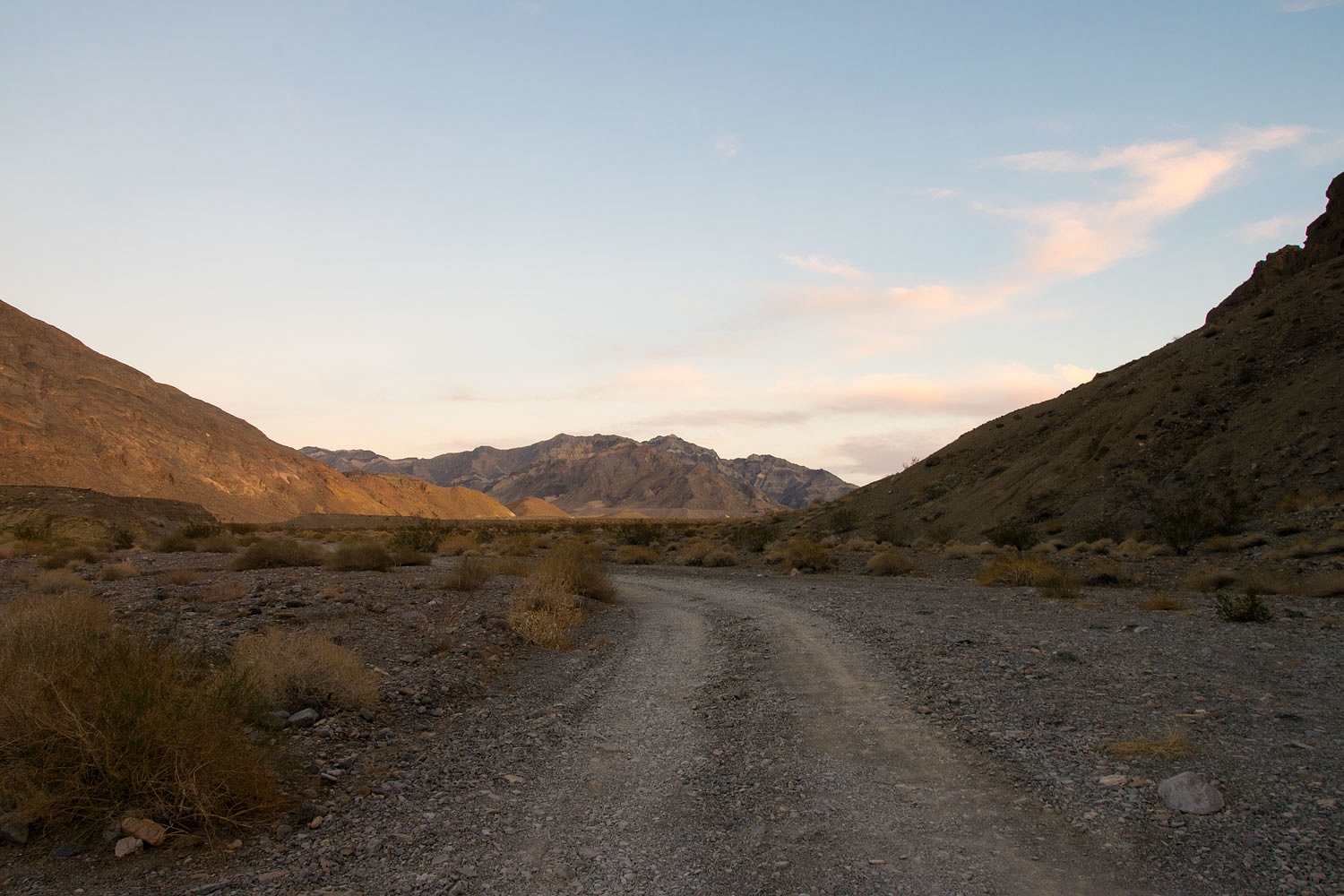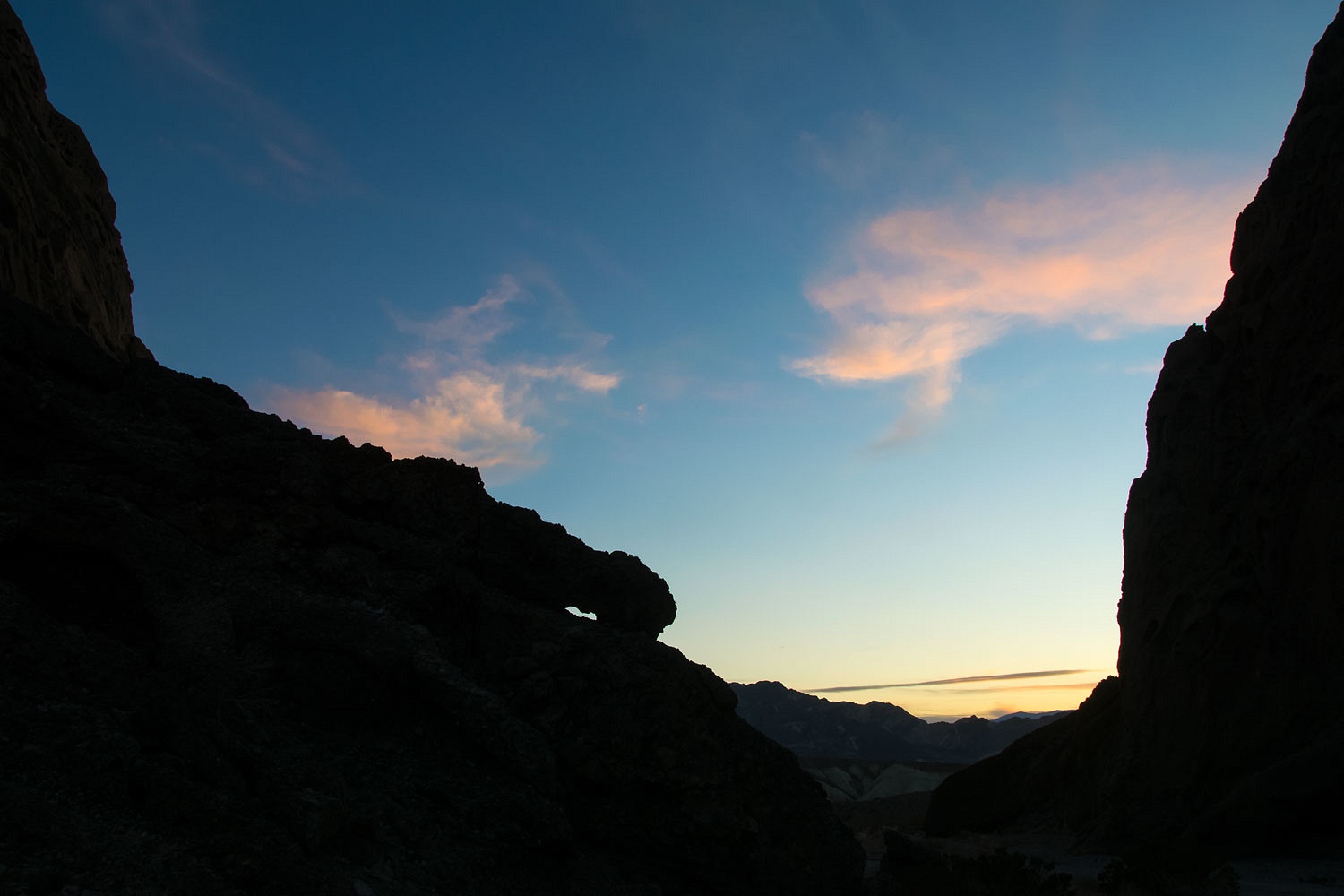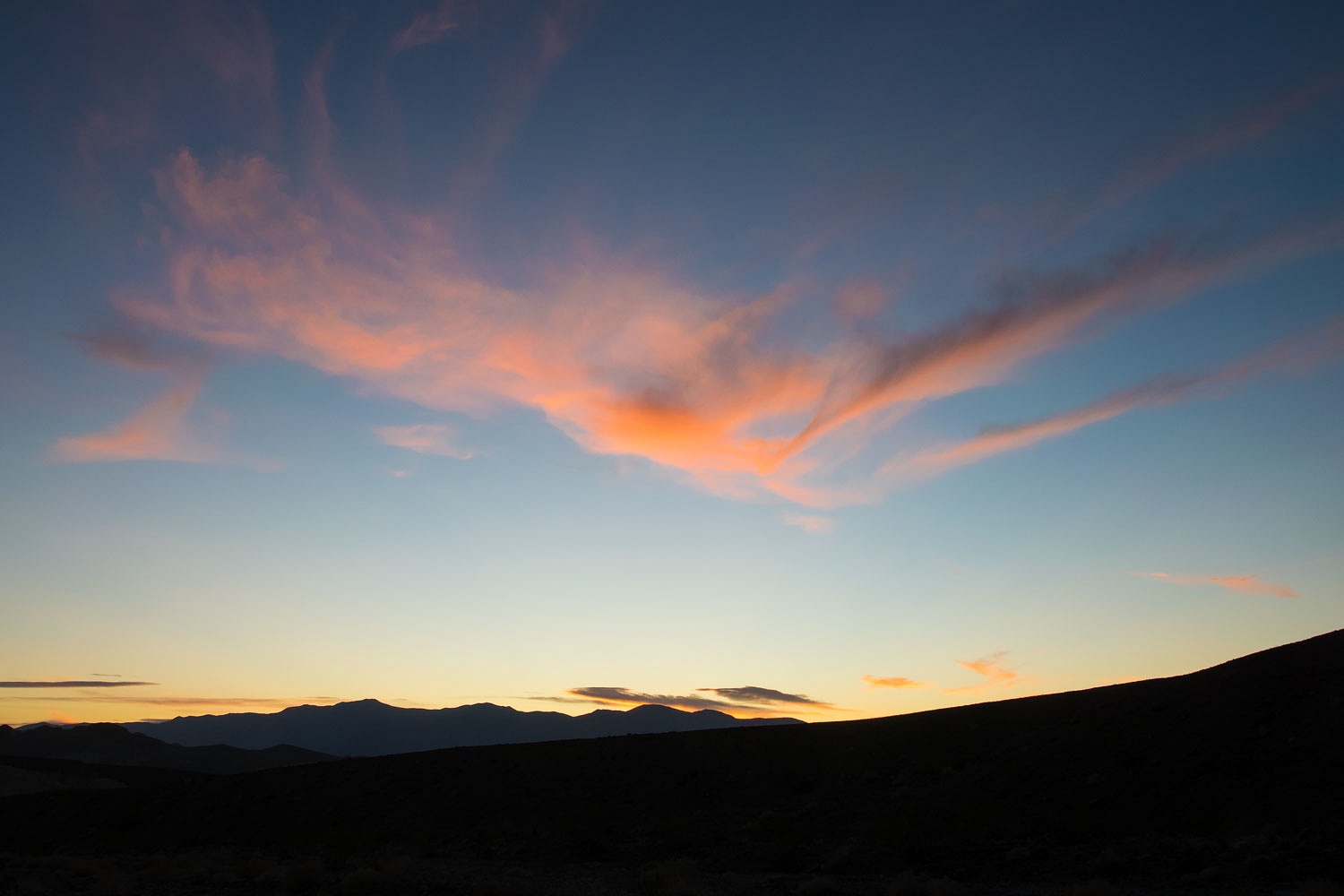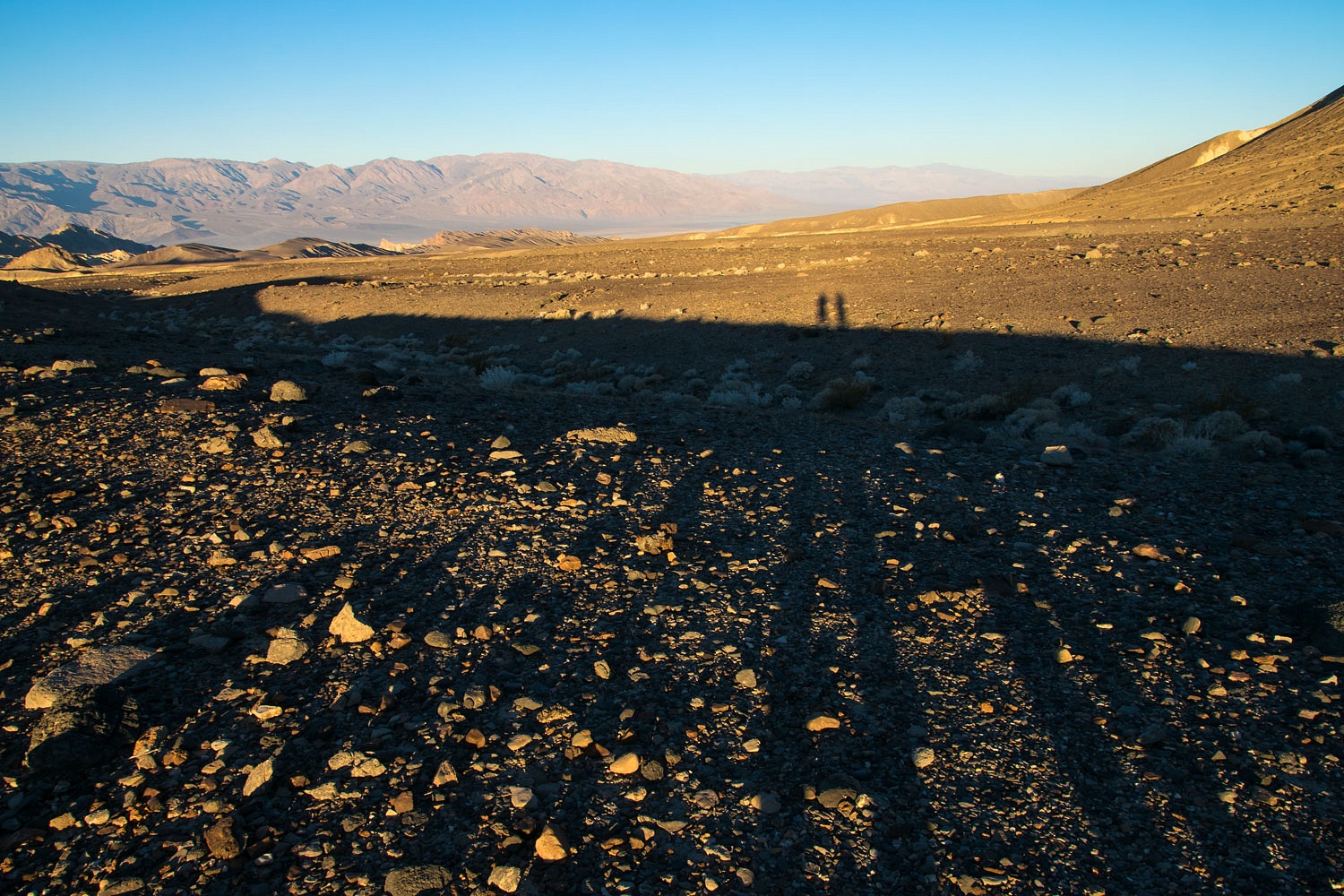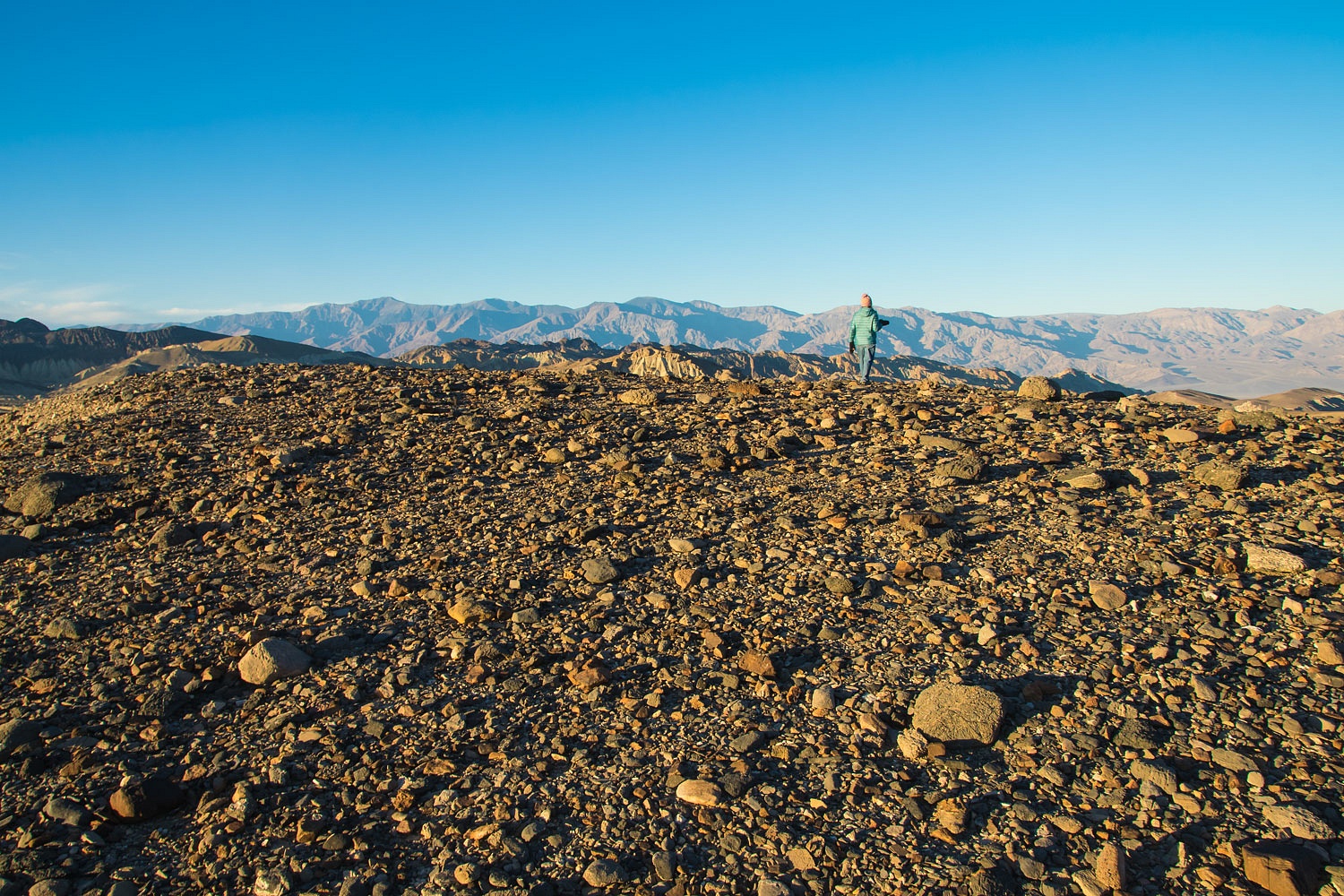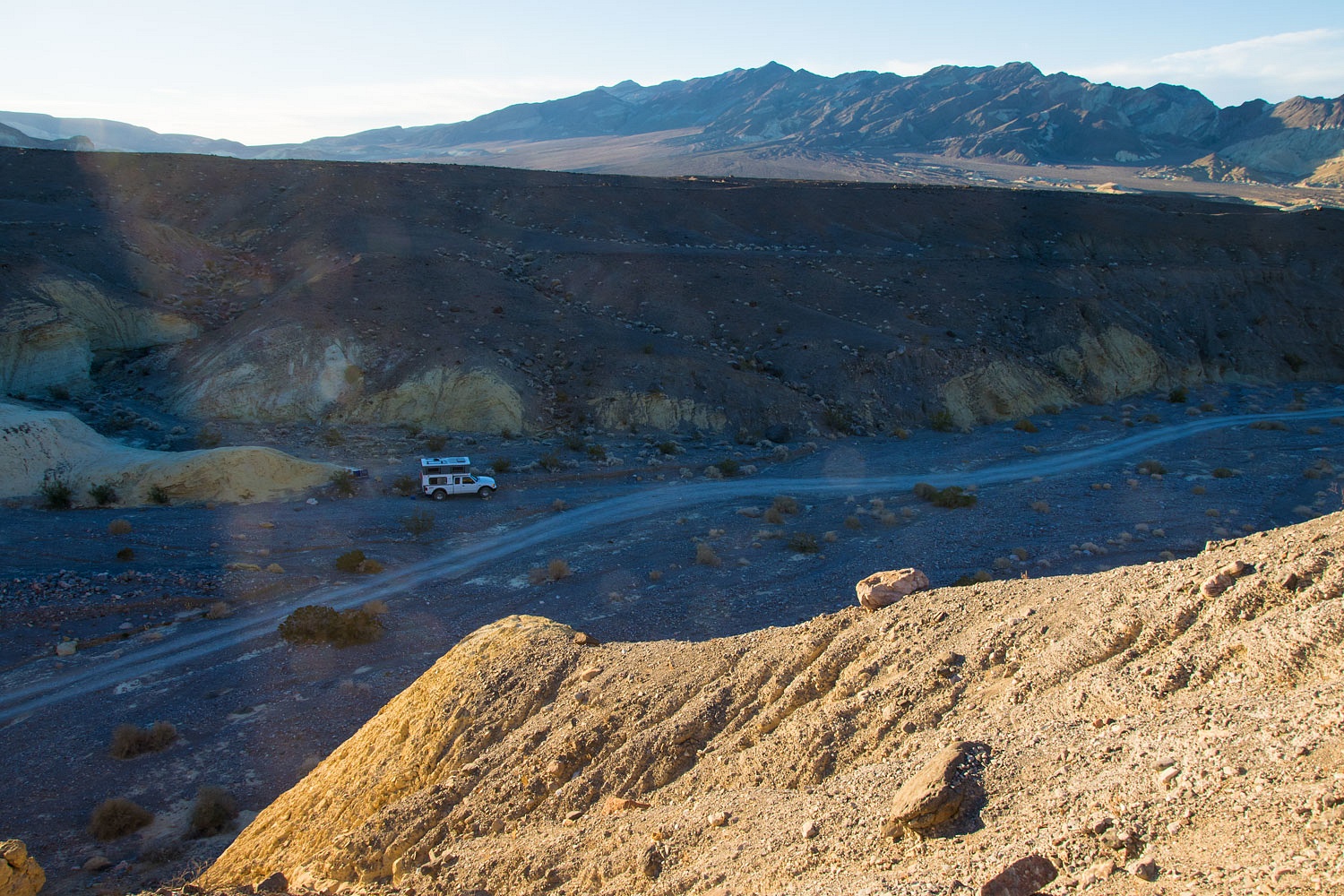please remember you can click on a photo to see a larger version & highlighted text are links to additional information
You can click here for - Part Two
In Your Face Geology
Tucki Mountain rises up just south of Stovepipe Wells. Starting from the west, we have explored these spectacular canyons that slice into Tucki Mountain - Cairn, Black Point, Stretched Pebble, Mosaic, and Grotto. The next canyon to the east of Grotto and around the corner is Little Bridge Canyon. This is what the Lady wanted to do. She wanted to hike Little Bridge Canyon. The starting point is on highway 190 near Mesquite Dunes.
There is no trail. The route climbs the steep alluvial fan along the flank of Tucki Mountain to reach the canyon mouth, a bit over 2 miles of hiking. When we looked back we could gauge the amount of elevation we were gaining.
Here's a view from about the half way point to the canyon.
Here is a view to the east across Death Valley.
We reached the mouth of Little Bridge Canyon and climbed down into the wash.
We started up the canyon.
I'll paraphrase some of the geological information Michel Digonnet provides in his excellent guide book, Hiking Death Valley.
The strata in the north end of the Panamint Mountains has been tilted to almost vertical. The main formation visible in the canyon is called Ely Springs Dolomite, a rusty colored rock. Past the first set of narrows is a large gash of striking white rock - a formation called Eureka Quartzite.
The quartzite has been crushed by the shearing forces from the folding and uplift of the Panamints. From this point up the canyon runs parallel to the vertical strata. The erosion took away the weakened quartzite and in its place is a straight gorge lined on the west with vertical walls of the more resistant dolomite. It is geology in your face.
The corridor runs for 1.25 miles. It is amazing, especially when we stopped to notice some of the details. Here is an arch cut into the layers of dolomite on the west wall.
At the upper end of this corridor the underlying quartzite is visible in the wash.
The canyon bends to the right after the corridor. The Lady was happy. She carried handwritten notes she had made from the guide book.
Around that corner and further up we came upon the canyon's namesake, the little bridge.
The gradient steepened. We stopped for a long snack break and tried to take in more of the details around us.
The Lady's preferred direction of travel is up. She was happy.
About a mile above the little bridge the canyon forks. We turned up the west fork. Yes, it got steep.
Climbing was involved.
We turned around just before the canyon's finish in a high amphitheater. This was a fun canyon to explore.
We began our descent.
Here Julie is working her way down a bypass around a pourover.
And here is the pourover.
We reentered the main canyon.
The sun leaves this canyon in the early afternoon, disappearing below the crest of Tucki Mountain. Remnants of Eureka Quartzite stood out in the east wall of the canyon.
The subdued light brought out the rich colors in the Ely Springs Dolomite on the near vertical west wall in the corridor.
We took a last look at the Eureka Quartzite as we entered the lower narrows.
In the winter afternoon light the lower section of the canyon was delightful.
We reached the mouth of Little Bridge Canyon, climbed out of the wash, and began the long downhill back to our waiting truck.
Little Bridge Canyon definitely moved into the fun column on "the list."
We were back at the truck at 3:30. It had been a great hike. We were heading home in the morning, but we needed a spot for the night, and a place we could reach before dark. Up and over Towne Pass, we turned north on Lake Hill Road in Panamint Valley. We were surprised by the line of rigs camped along the road, four. That's a large number to us. We found our spot unoccupied and at least a half mile apart from the other campers. After camp set up and quick showers, the evening light grabbed all of our attention.
Did you notice the clouds? The Lady did. Armed with her compass and the paper, she prepared for the first of two visible over flights of the International Space Station. The early one (around five) was a bust, no hope with the dark clouds. We walked after dinner. The Lady checked the paper. "This one starts in the southwest." She confirmed the direction with her compass, handy in her shirt pocket. The clouds thinned a bit to the south. We spotted it, an intermittent arc of light behind the clouds.
"Four nights in a row!" The Lady raised her arms in triumph.
We slept well, incredibly well and were up the next morning before the sun. Clouds over Panamint Valley can provide tremendous colors at sunrise. We wanted to be ready.
Soft colors were over to the west.
With our morning coffee brewed, we headed out onto the playa and around Lake Hill, a chunk of Tin Mountain Limestone that slid off of the Cottonwood Mountains. It was an incredible morning.
We returned home. The coronavirus pandemic is raging. The availability of hospital and ICU beds are reaching critical numbers. A new stay at home mandate has been issued. We discovered Death Valley National Park had closed (allowing day use only) while we were in the backcountry. Had we known we would have done the right thing and left. This will be our last trip of the challenging year of 2020. All in all it was a pretty darn good trip to end the year.
So here's to happy holidays to all and best wishes for a great 2021. A new year, that's what we all need.

